Author Archives: Josh
The Great Arizona Encore: Huelcome to the Huachucas
Going to Arizona annually is incredibly exciting for a birder because that state never seems to run out of new birds, and if it does, it can always borrow a couple from Mexico. But fall in general is a tougher time to bird and central Arizona hardly held anything new for me at this time of year. On the other hand, Southeast Arizona can hold wonders and surprises for even local birders. It’s a place where magic happens. Therefore my family and I went on to Green Valley after Mt. Lemmon for a two-night stay or a vacation within a vacation. The Santa Ritas were splendid as were the cooler temps in the higher elevations of southern Arizona.
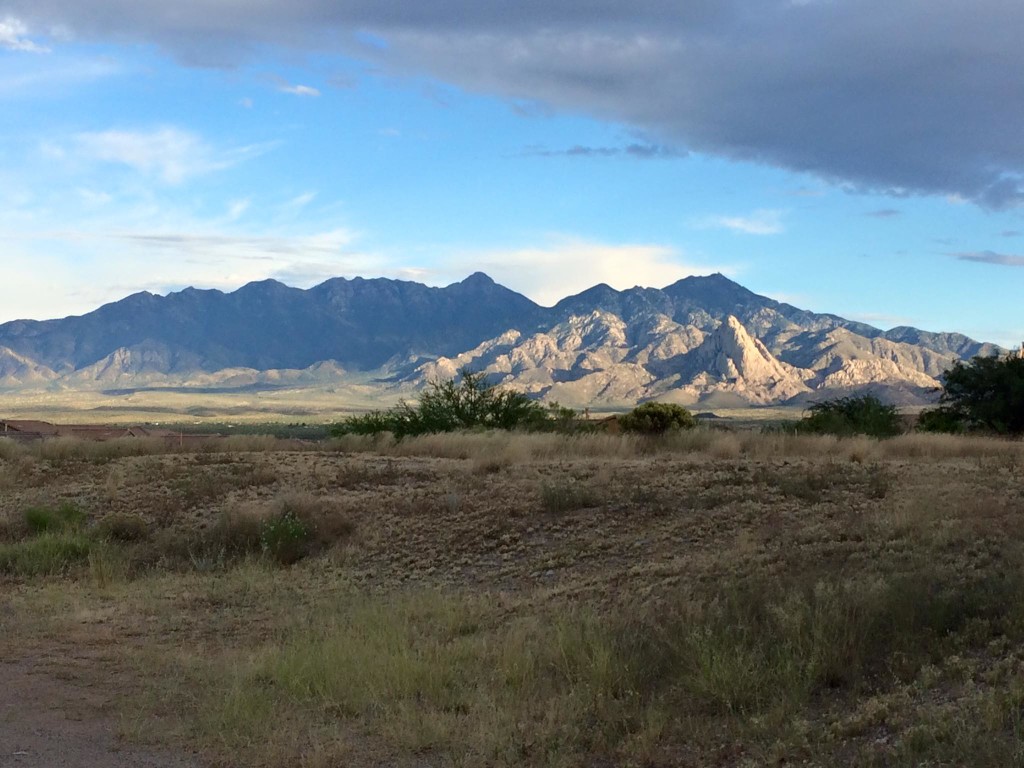
I had a tougher time picking out a main target bird for this Arizona trip. Whatever I picked just seemed dramatically anticlimactic after last spring’s Elegant Trogon and Painted Redstart. I finally settled on a good one, though, a worthy objective. I wanted to see the Rufous-capped Warbler, a rare visitor from Mexico that, in recent years, has acquired resident status in certain mountain canyons in SE AZ. The most notable of those is Florida Canyon, so that is where I wanted to bird. As time went on and I communicated with Tommy DeBardeleben, he advised me that Pena Blanca Canyon would probably be better for that bird. Okay, sounds good to me. Then as the weeks got closer, I started paying attention to the listserv and was seeing that an even rarer Mexican Warbler was being seen quite regularly even up to a couple days before our trip! That bird was the Slate-throated Redstart. Not only was this bird being seen in Hunter Canyon of the Huachuca Mountains, but there had been as many as five Rufous-capped Warblers in the same area!!!!! Tommy and Gordon were going to be birding with me. I brought up the idea of going to Hunter Canyon, and they liked it. So last Friday Evan and I met up with Tommy and Gordon at a Fry’s parking lot in Sahuarita in the pre-dawn hours, and soon afterward the “Elegant Trogon Fantastic Four” was on its way to the Huachuca Mountains for what would turn out to be yet another epic SE AZ adventure.
The Huachucas run north and south and have many famous birding canyons on its eastern side. We would be hitting up Hunter Canyon, Miller Canyon, and Ash Canyon. It felt incredible to be in this area that I’ve read about on blogs and in books. Hunter Canyon, the site of both ABA-rare Warblers, was where we started.
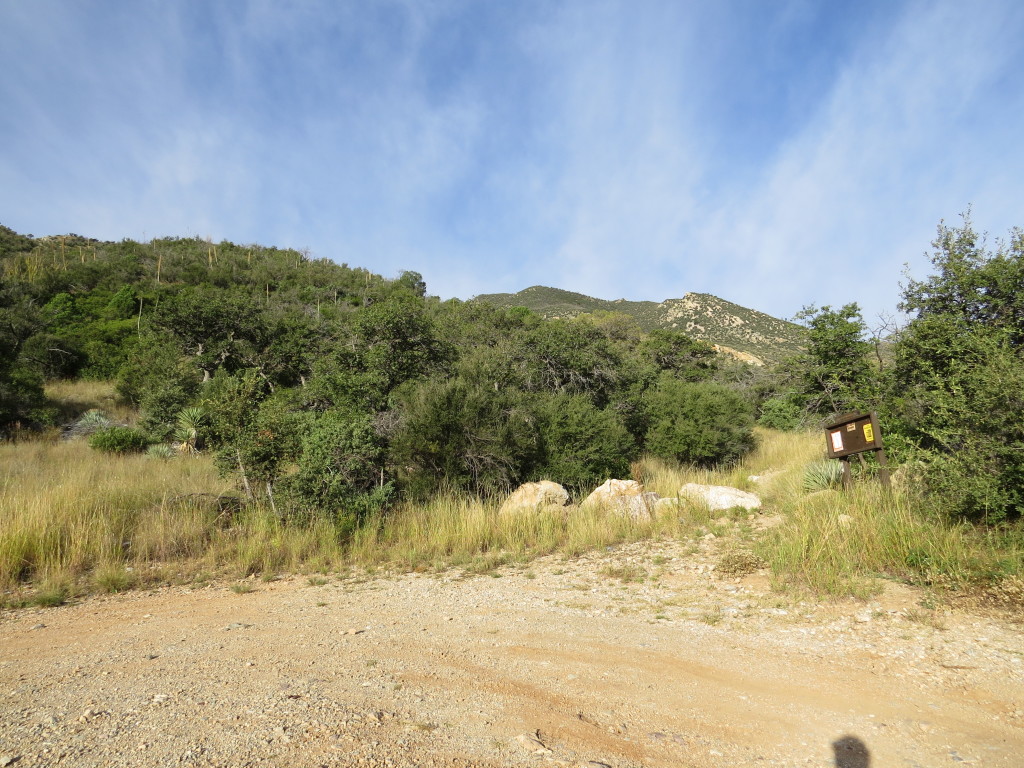
Even though we didn’t see any Montezuma Quail (darn it) on the long drive up to the parking area, we got out of the car and had a good bird right away. In fact, it’s one Evan and I needed for our life lists–the Northern Goshawk.
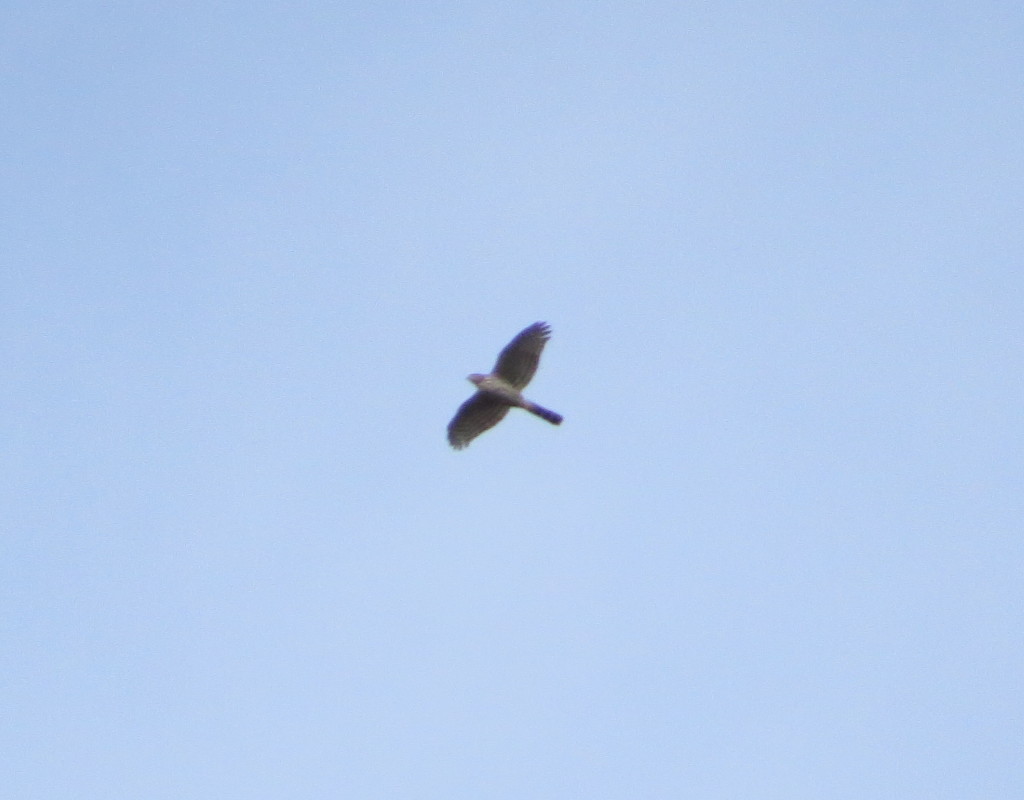
The Goshawk wasn’t coming any closer, so we began our ascent up the canyon listening along the way for anything new or interesting.
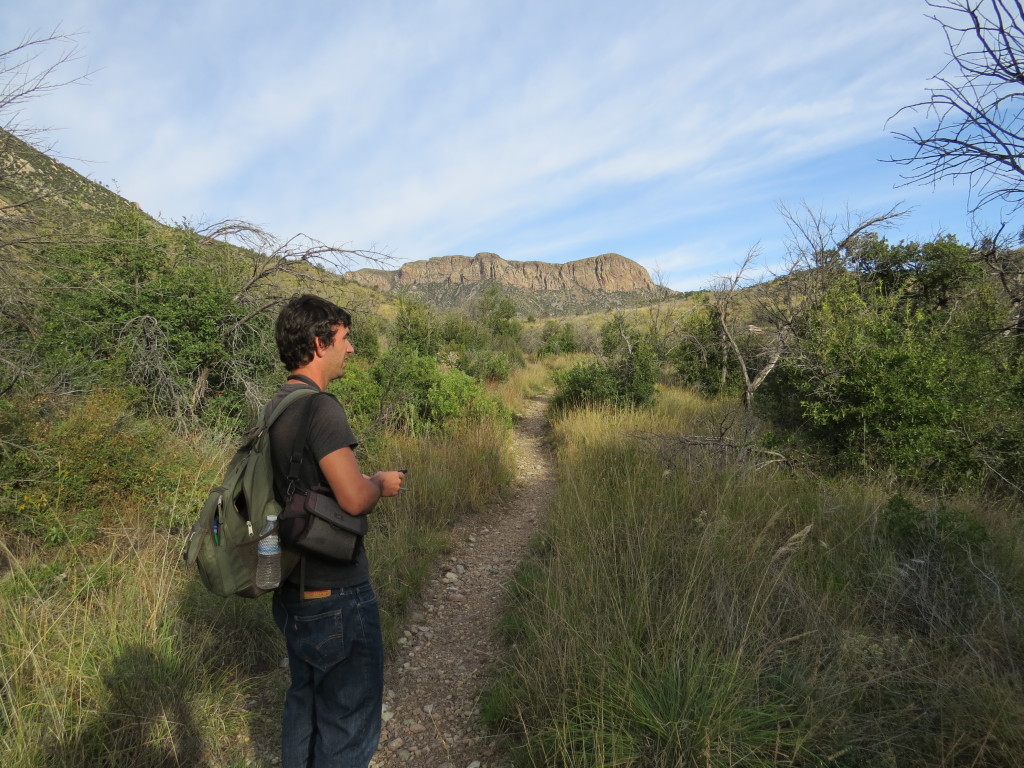 Tommy’s ear for bird sounds is truly impressive–hardly a chip note, flight call, or song gets by him. In fact, he doesn’t even announce all that he’s hearing unless it’s important, like this lifer Bewick’s Wren.
Tommy’s ear for bird sounds is truly impressive–hardly a chip note, flight call, or song gets by him. In fact, he doesn’t even announce all that he’s hearing unless it’s important, like this lifer Bewick’s Wren.
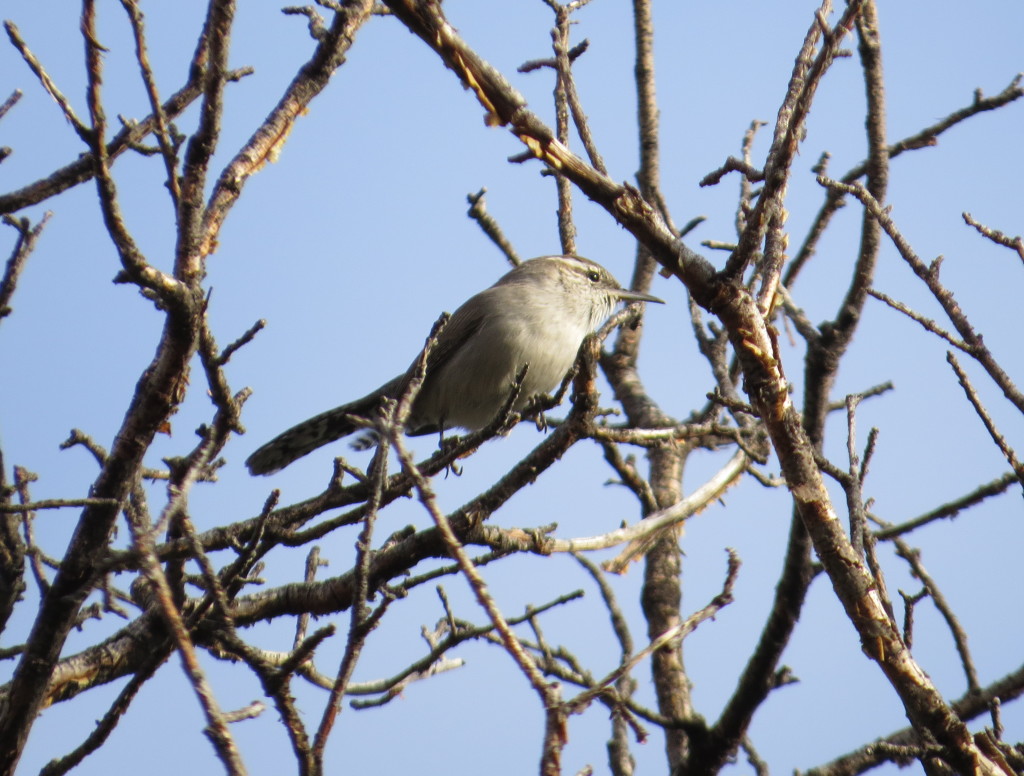
For the most part, though, all that could be heard was the huffing and puffing of the two flat-landers of the group as we climbed on and on. We were missing our oxygen-rich 1,100 feet back home. Evan sat down on rocks several times, and I had to keep coaxing him to go on. Besides, we were almost to the exciting part of the canyon where the walls were steeper and the trees towered above us and where the Warblers are…
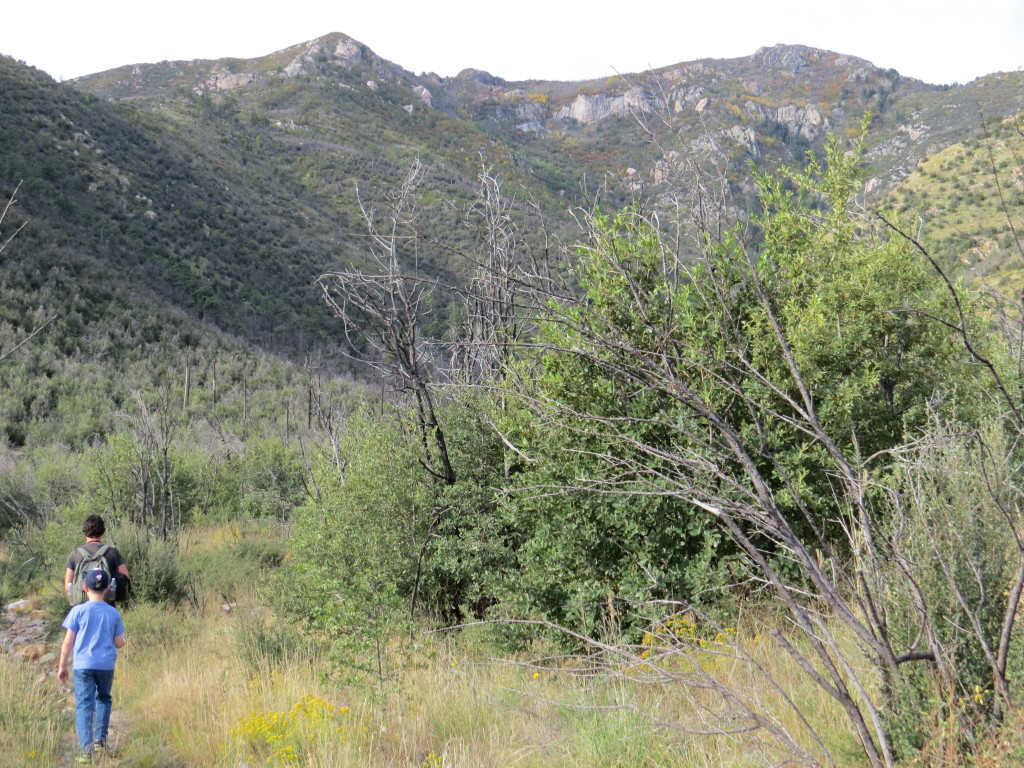 It is where this lowland scrub terminates and the forest of the canyon begins that the Slate-throated Redstart had been seen just a couple days prior. We paused to look and listen, but it seemed well-known at this point that the Redstart was gone. We did, however, start to hear multiple Rufous-capped Warblers all around us! Getting a visual of this brush-loving bird is another story. The sound seemed to come from everywhere and then stopped all of the sudden. Weird. So onward and upward we kept going. At least the view back down the mountain was nice.
It is where this lowland scrub terminates and the forest of the canyon begins that the Slate-throated Redstart had been seen just a couple days prior. We paused to look and listen, but it seemed well-known at this point that the Redstart was gone. We did, however, start to hear multiple Rufous-capped Warblers all around us! Getting a visual of this brush-loving bird is another story. The sound seemed to come from everywhere and then stopped all of the sudden. Weird. So onward and upward we kept going. At least the view back down the mountain was nice.
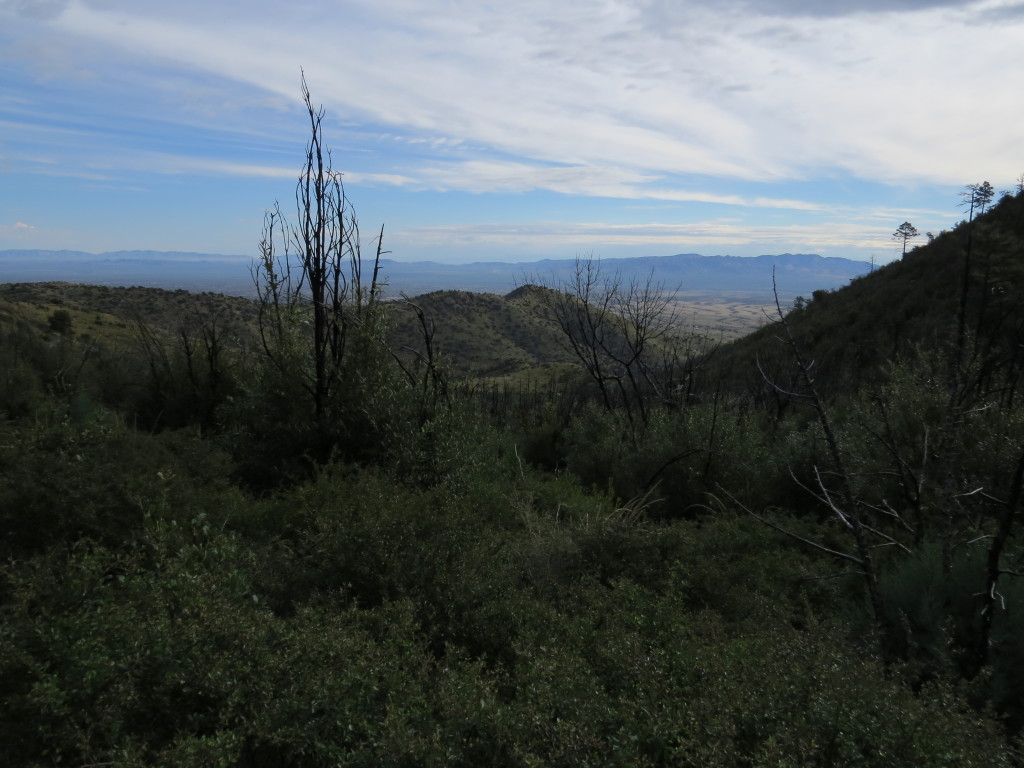
The life birds were definitely not coming at a fast pace, so a Spotted Towhee was a nice distraction for the time being.
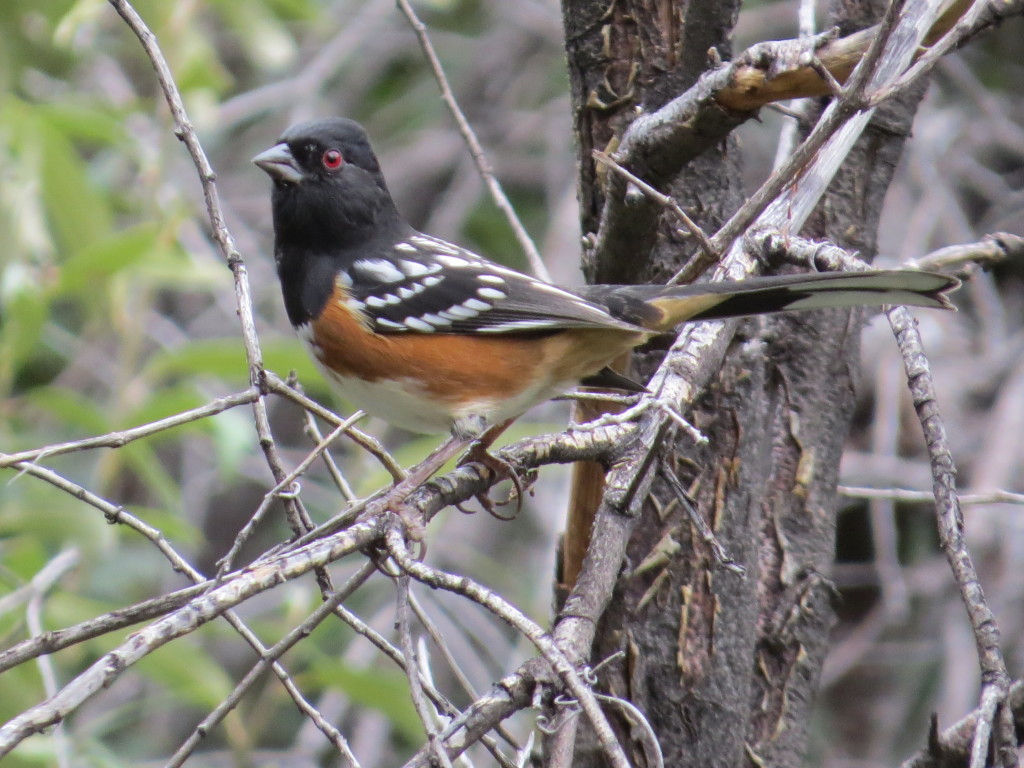 In hindsight, this was the calm before the storm because things took off in a hurry. It all started when Tommy spotted a male Hepatic Tanager which was a lifer for Evan and me. I didn’t see it, but I spotted my own Hepatic lifer (female).
In hindsight, this was the calm before the storm because things took off in a hurry. It all started when Tommy spotted a male Hepatic Tanager which was a lifer for Evan and me. I didn’t see it, but I spotted my own Hepatic lifer (female).
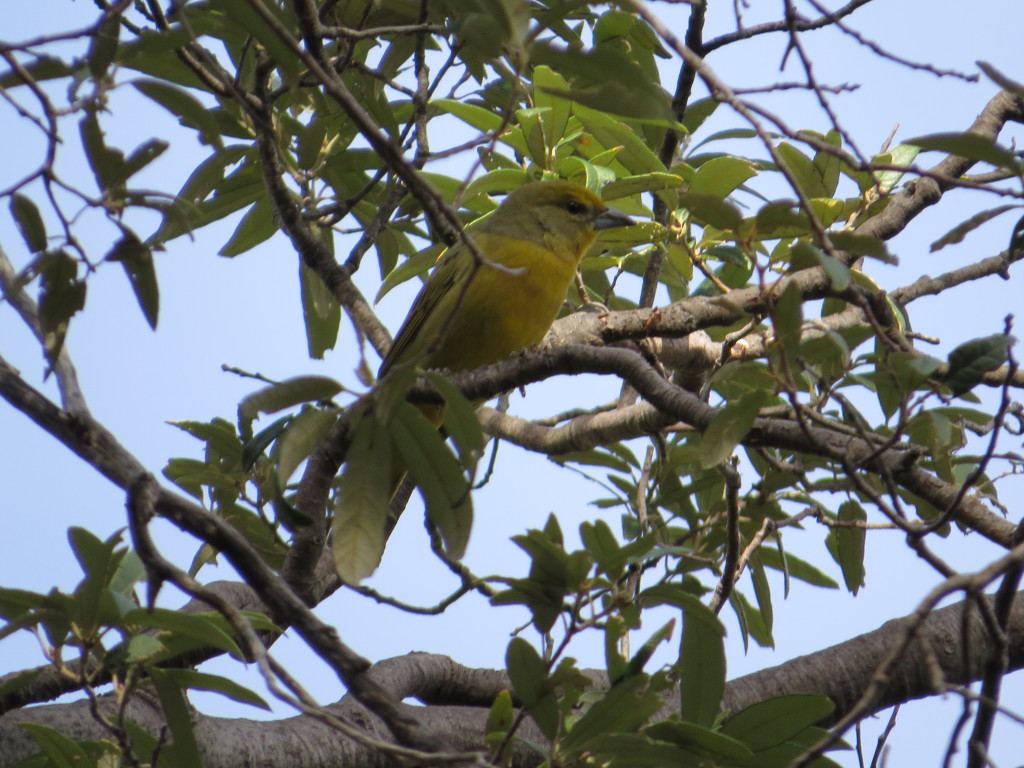 I really wanted to see the male Tommy found. Eventually I saw it, but it was not being cooperative at all.
I really wanted to see the male Tommy found. Eventually I saw it, but it was not being cooperative at all.
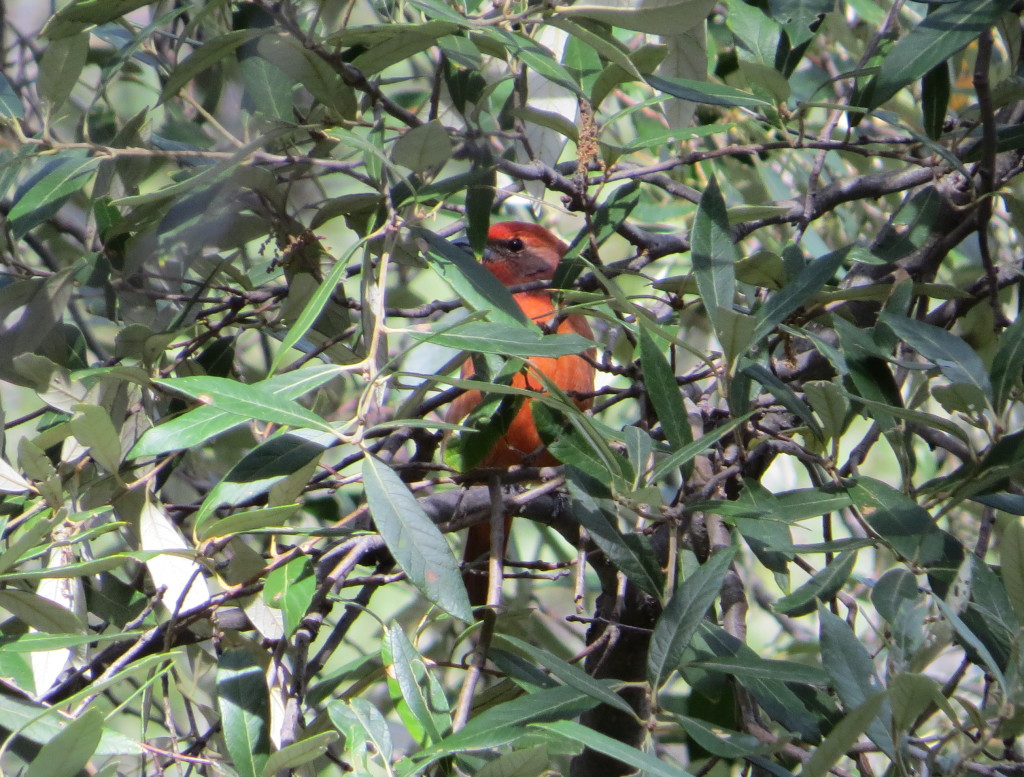
I did catch it out in the open once. Not the best photo, but it shows the subtle red coloration compared to a bright red Summer Tanager.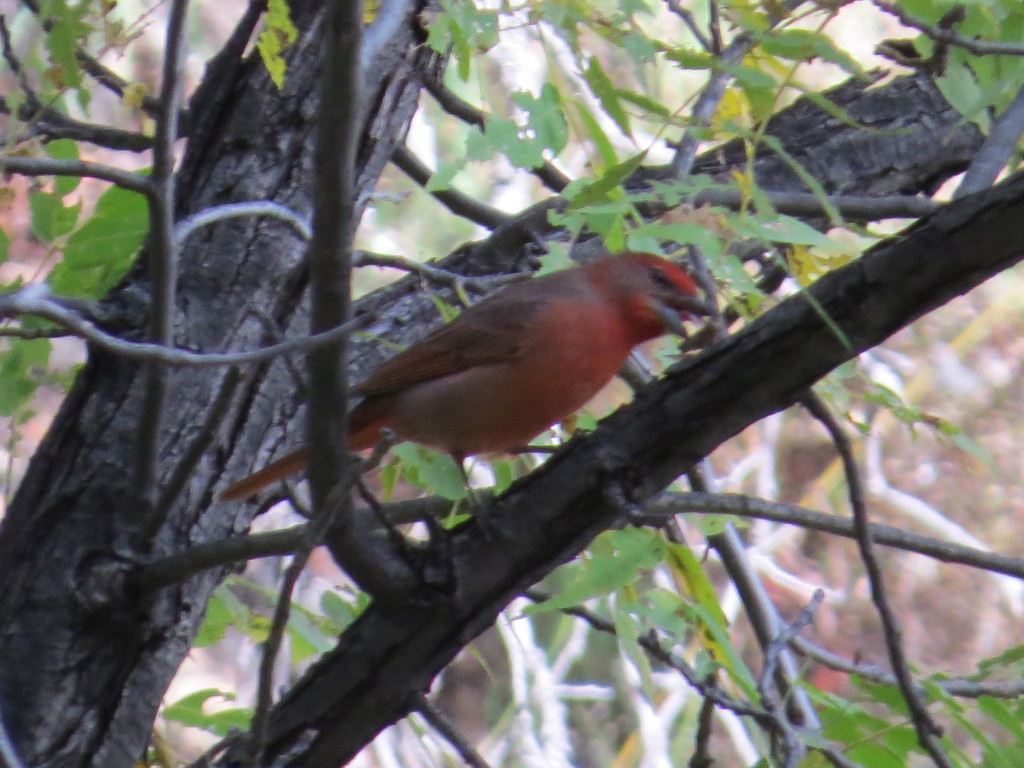 Tommy said that sometimes Tanagers will respond to a Northern Pygmy-Owl call. When he played it, a live Pygmy-Owl tooted back! Tommy took off up the canyon trail to see if he could locate it. I started soon after but then saw bright flash of yellow and black come across the blue sky–Scott’s Oriole! What a looker it was! It landed at the very top of a tree offering me nothing but butt views. It’s a pretty nice-looking butt, anyhow.
Tommy said that sometimes Tanagers will respond to a Northern Pygmy-Owl call. When he played it, a live Pygmy-Owl tooted back! Tommy took off up the canyon trail to see if he could locate it. I started soon after but then saw bright flash of yellow and black come across the blue sky–Scott’s Oriole! What a looker it was! It landed at the very top of a tree offering me nothing but butt views. It’s a pretty nice-looking butt, anyhow.
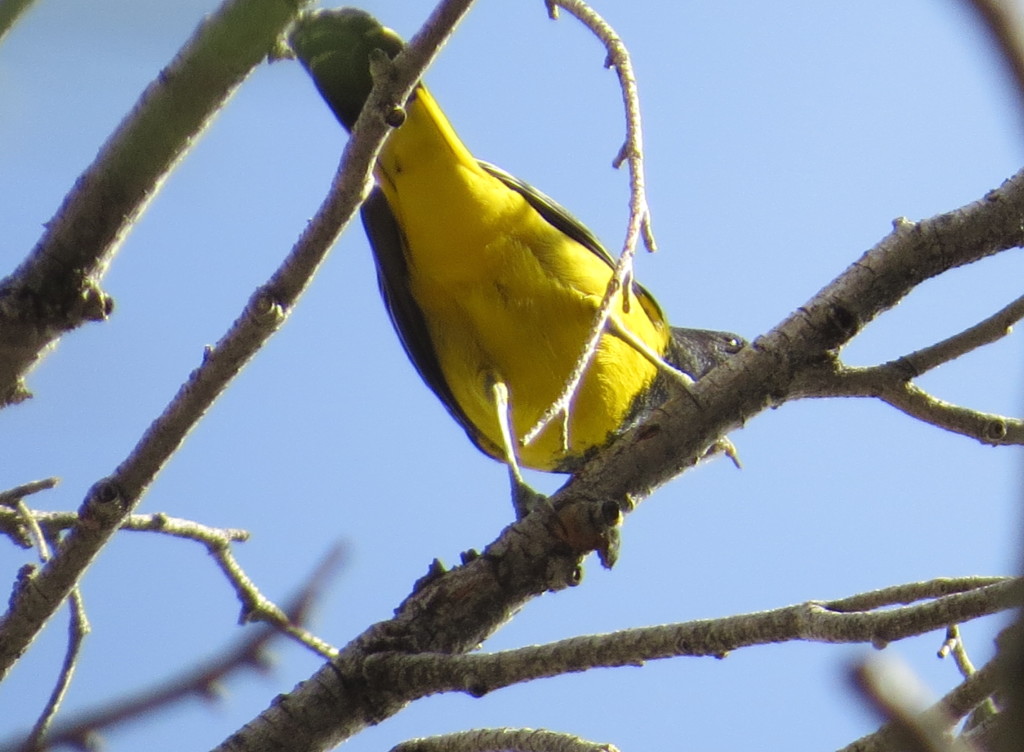 As I was jockeying for a position from which I could see the Oriole better, Tommy called out calmly, “Guys, Pygmy-Owl.” For some reason I thought this meant he was hearing it, and so I continued to keep working on the Oriole. A few seconds later, Tommy’s voice carried a little more urgency. An Owl lifer trumps an Oriole photo. Evan, Gordon, and I hustled up to where Tommy was. Sure enough, he had eyes on it. Wow, just wow.
As I was jockeying for a position from which I could see the Oriole better, Tommy called out calmly, “Guys, Pygmy-Owl.” For some reason I thought this meant he was hearing it, and so I continued to keep working on the Oriole. A few seconds later, Tommy’s voice carried a little more urgency. An Owl lifer trumps an Oriole photo. Evan, Gordon, and I hustled up to where Tommy was. Sure enough, he had eyes on it. Wow, just wow.
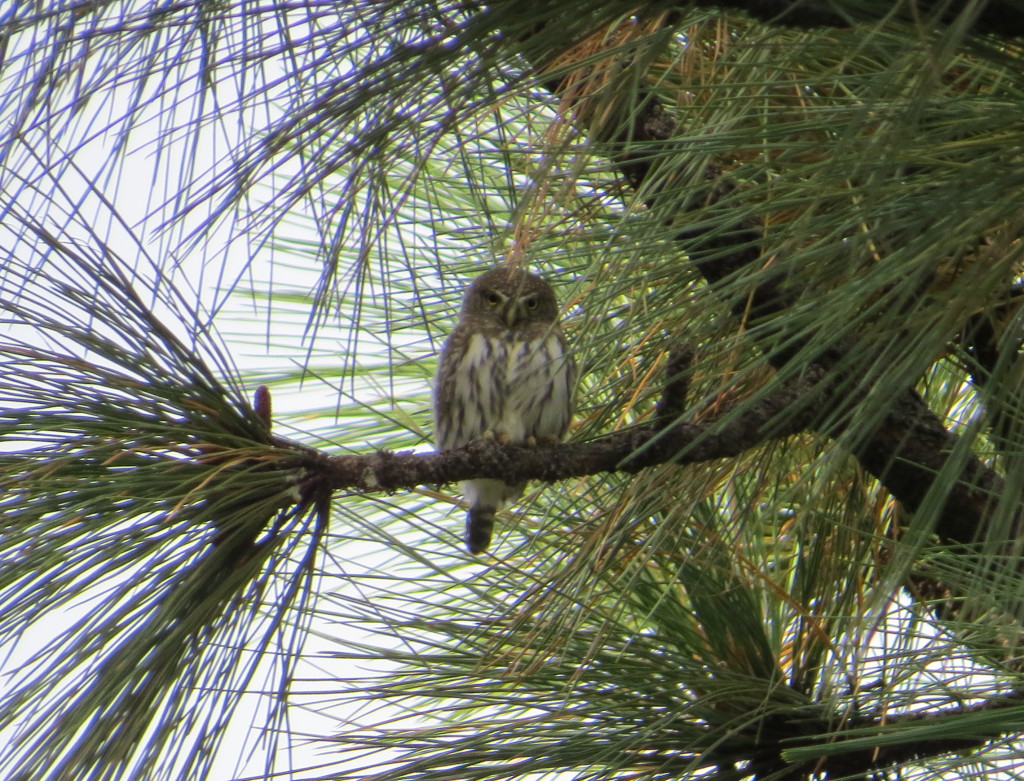
Seeing this awesome Owl with my naked vision was much easier than trying to find it in my viewfinder. I was amazed at how small it was. Here’s a reference shot. These pine cones are about the size of an adult’s fist–do you see the Owl?
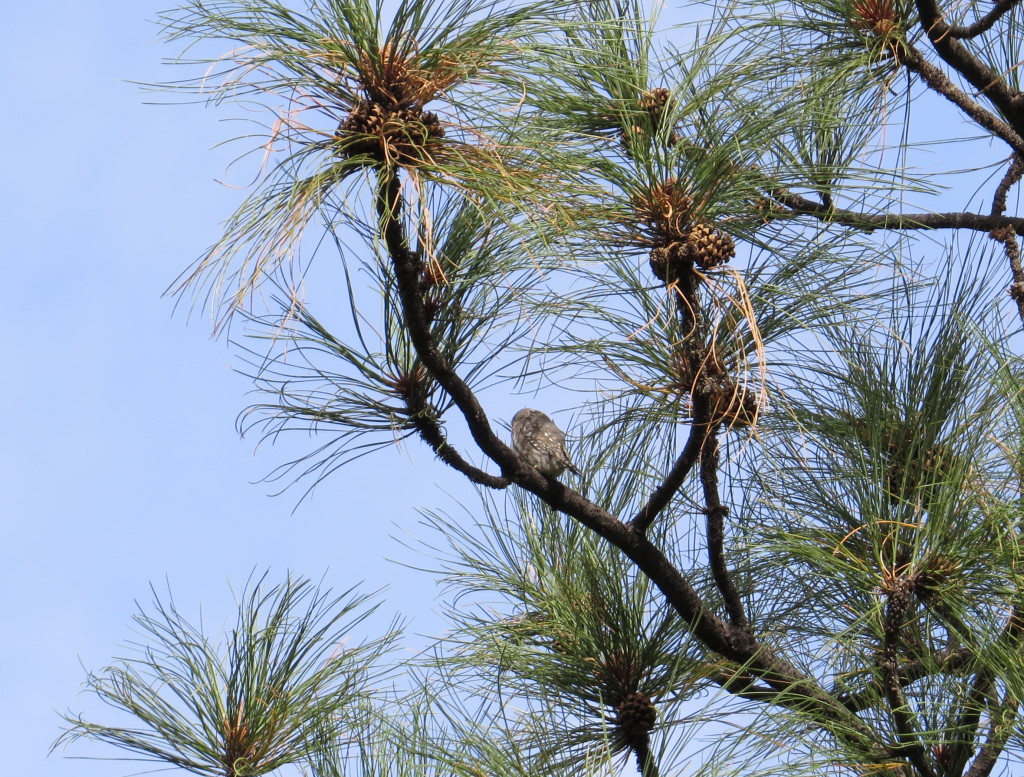 This was such a fun life bird. I was not expecting this one on this trip. Excuse the numerous photos–I was, and still am, very excited about this sighting.
This was such a fun life bird. I was not expecting this one on this trip. Excuse the numerous photos–I was, and still am, very excited about this sighting.
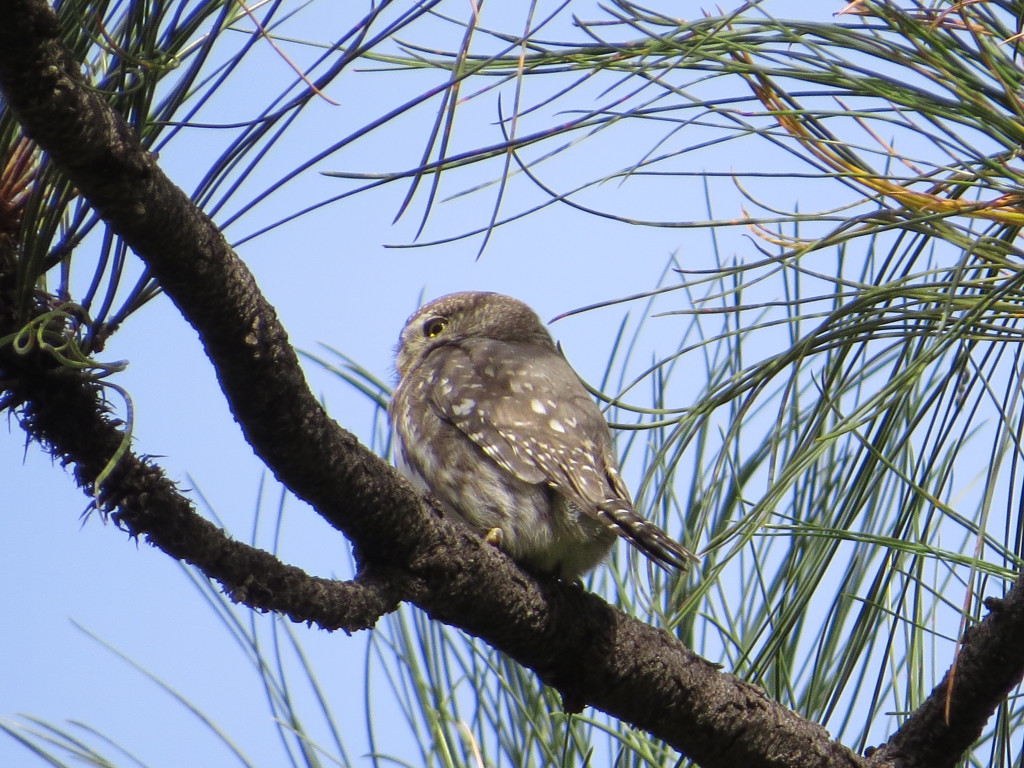
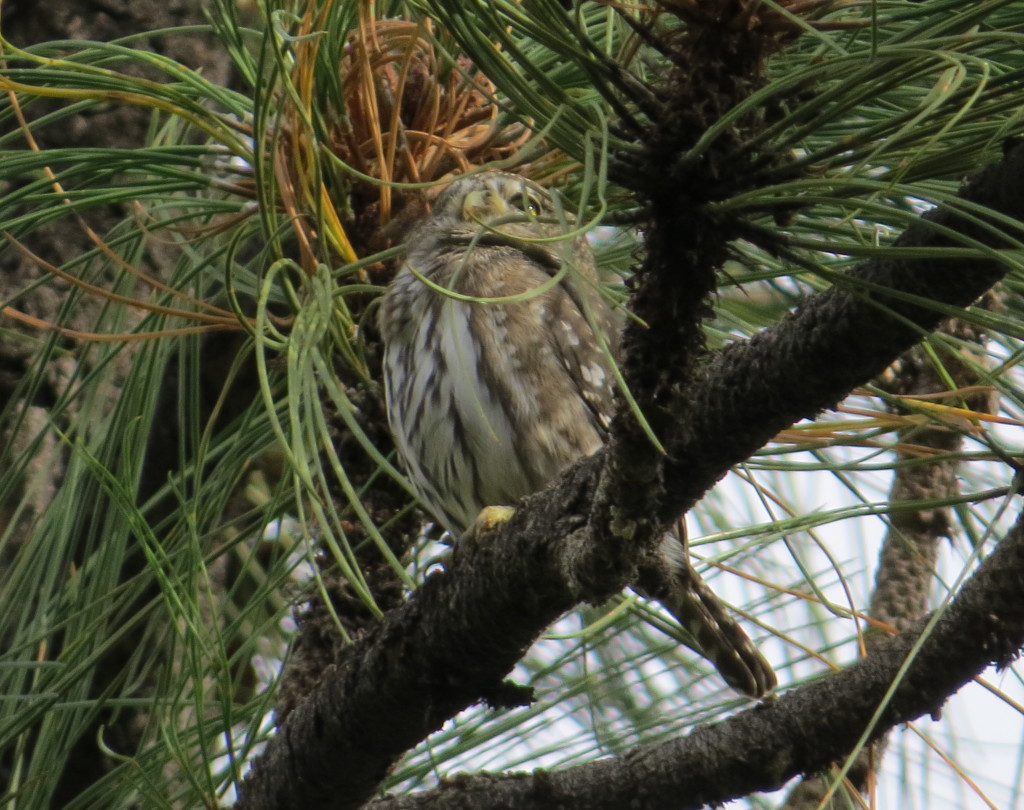
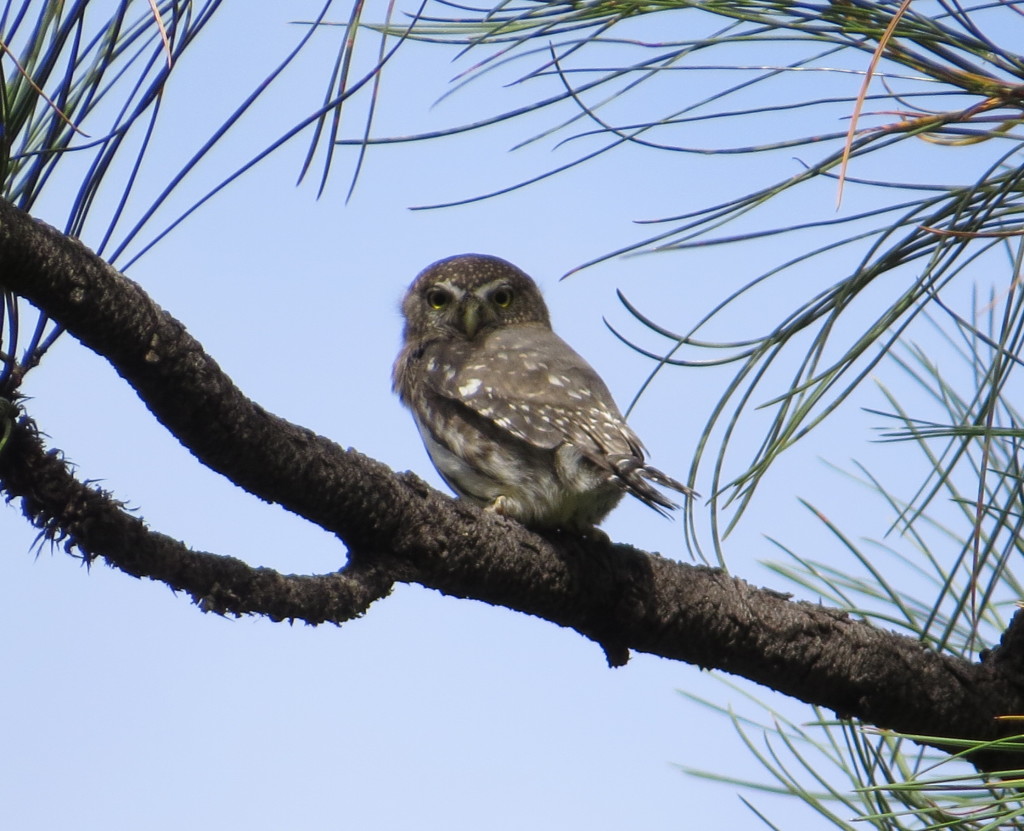 Time waits for no man, though, and neither do Rufous-capped Warblers. As I was photographing this cool Owl and trying for better angles, a Rufous-capped Warbler started singing nearby and Tommy was off again! In seconds Tommy got a visual on the bird and called me over. I’ve learned from Tommy and Gordon to first get a good look at a lifer with binoculars and then worry about a photo second. So that’s what I did. In no time at all, I also saw the Rufous-capped Warbler pop up for a second and got to see that amazingly yellow throat.
Time waits for no man, though, and neither do Rufous-capped Warblers. As I was photographing this cool Owl and trying for better angles, a Rufous-capped Warbler started singing nearby and Tommy was off again! In seconds Tommy got a visual on the bird and called me over. I’ve learned from Tommy and Gordon to first get a good look at a lifer with binoculars and then worry about a photo second. So that’s what I did. In no time at all, I also saw the Rufous-capped Warbler pop up for a second and got to see that amazingly yellow throat.
Then it took a lot of patience and blurry photos of sticks and brush as I made many failed attempts at getting a photo. Hmmm, colorful fall foliage?
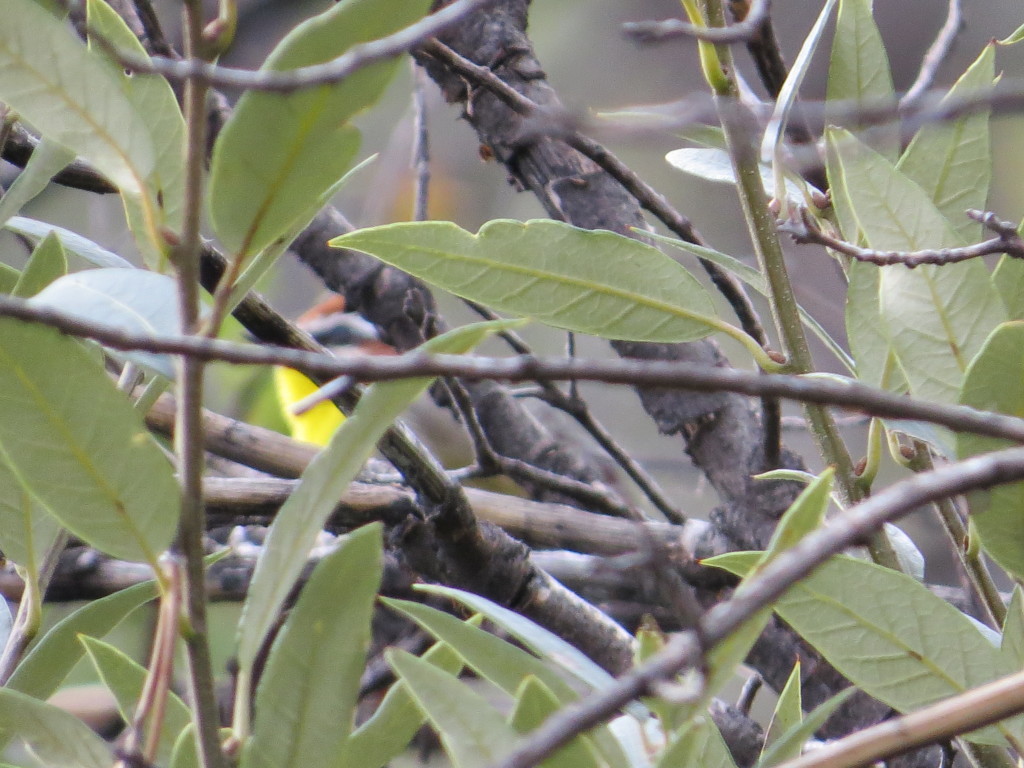
Or….
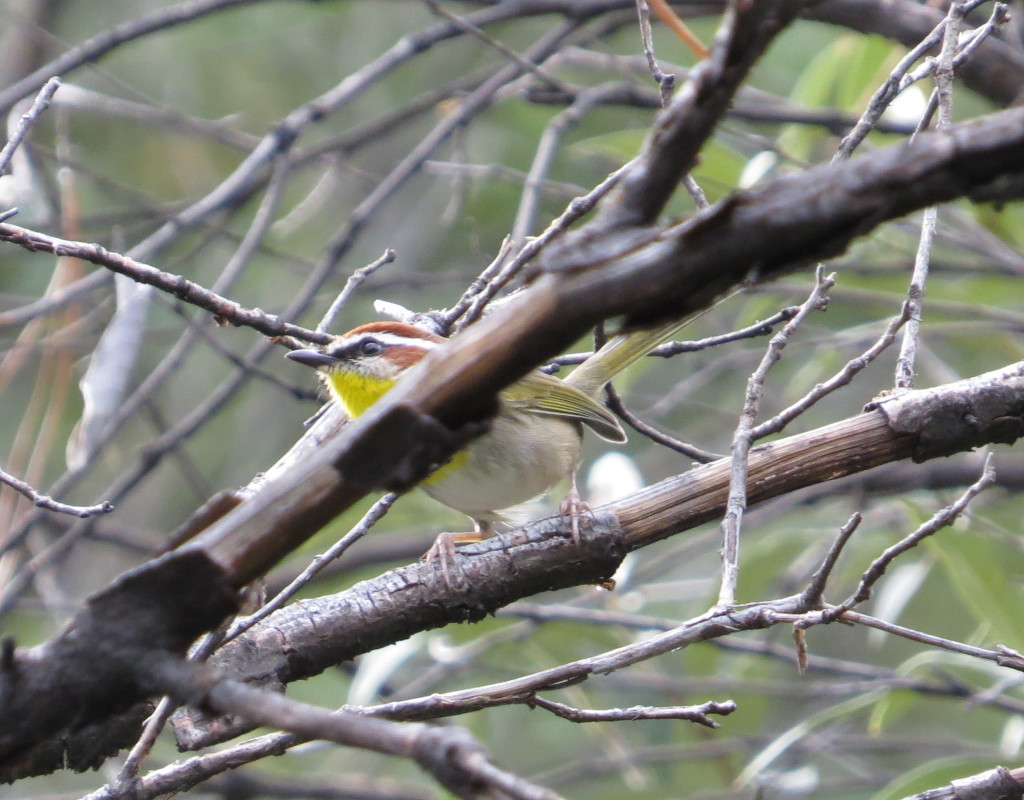
OH YEAH!!!!!!!!!!!!
This was the numero uno (Mexican bird, get it?) target and therefore the biggest thrill of some pretty monumental thrills in Hunter Canyon. The lifering was fast and furious. From the Hepatics to the Rufous-cap, I would guess a maximum of ten minutes had elapsed. It was mind-blowing and overwhelming, leaving no time to linger and soak up the enjoyment of any one of those species. I guess you take whatever SE AZ throws your way. Sometimes that means the cool birds are shoved down your throat. And if that’s the case, you eagerly open your mouth wide in anticipation.
After this, there was nothing else to do but walk down another Arizona mountain victorious…
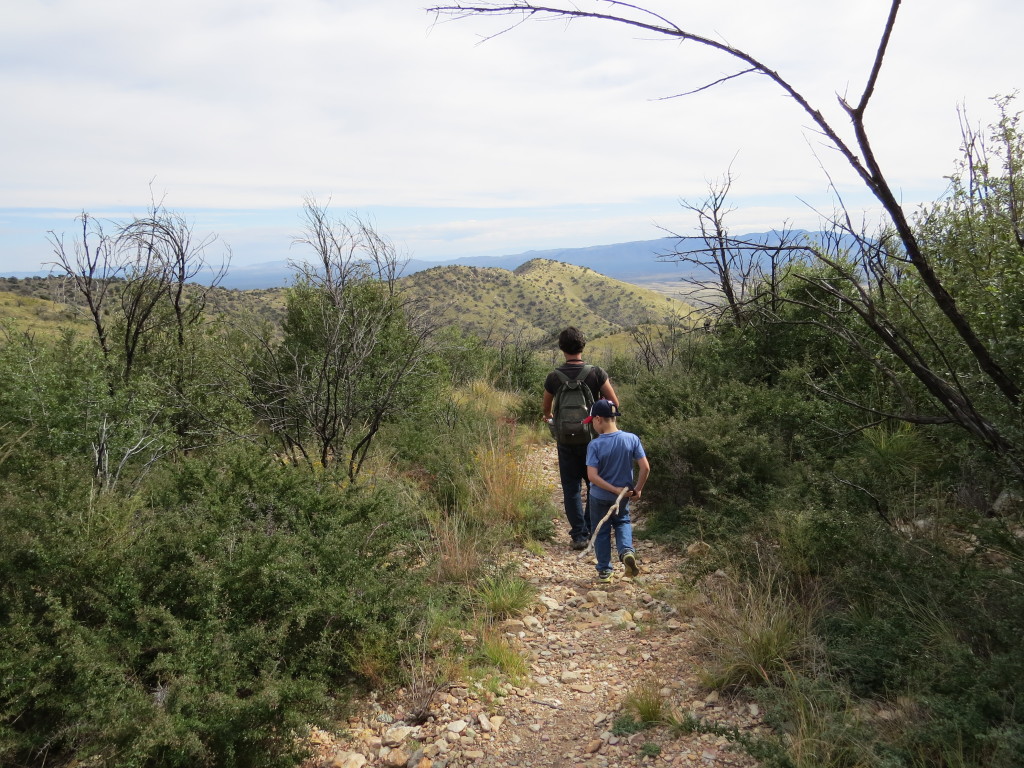 …and then go to next-door Miller Canyon and Ash Canyon for even more adventure! You don’t want to miss it–there will be coon dogs, guns, and yes, more cool lifers.
…and then go to next-door Miller Canyon and Ash Canyon for even more adventure! You don’t want to miss it–there will be coon dogs, guns, and yes, more cool lifers.
A huge thanks to Tommy DeBardeleben and Gordon Karre for a incredibly memorable bird hunt in Hunter Canyon!
Steller’s Jay
The Great Arizona Encore: When Life Gives You a Lemmon…and a Tangerine
I can hardly believe it myself–a bonus trip to AZ in 2015 is now on the books and coming to you on the blog. It turns out that fall break is a much more convenient time for our family (NOT for birders) to go on our annual peregrination to visit my snowbird parents in Maricopa. Sadly, spring trips will be no more. It seemed strange to trade our lovely fall weather for the desert heat. Also strange was the fact that we, my parents, and this Golden-crowned Kinglet were competing in a race to the south.
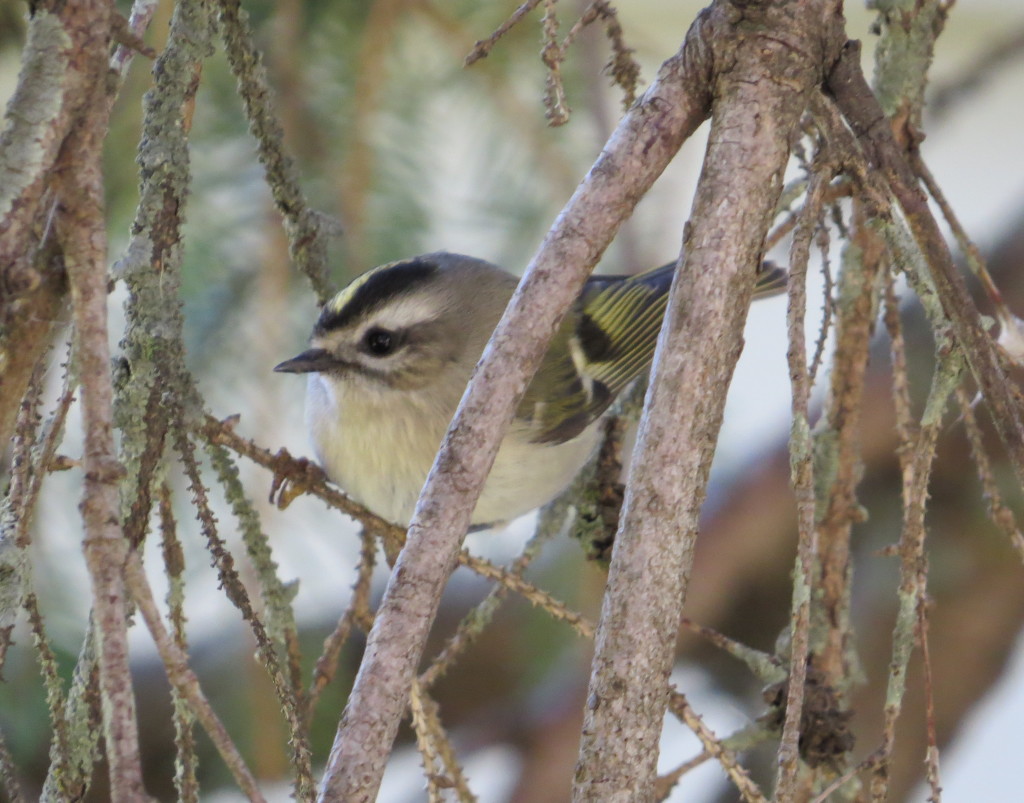
Thankfully my parents won (barely) and were able to welcome us all to their home. The Kinglet, rudely, did not show. Of course, my parents who were traveling by car were greatly aided by an airline that had devious plans for messing with my perfectly picked schedule and meticulous birding plans that would have given the old life list a couple bumps within an hour of landing. Yep, a mechanical problem grounded the plane and delayed us 5 HOURS while we waited for an empty plane to fly up from Phoenix to pick up our moping, angry selves. Then again, this is a much preferred state of being than say, dead in a crash because of a mechanical failure. But still. Now we would be getting into Phoenix just as the sun was setting–an inconvenience to your average traveler but a complete devastation to a birder. I guess the Brown Pelicans and Rosy-faced Lovebirds in Tempe would just have to wait.
Or would they? Relatively speaking, we got to Phoenix faster than expected with an hour left of the day! I thought the rental car process would be speedier. I also thought the rental car would be considerably less orangey.
 The sun was sinking but things were still glaringly aglow around us as we Dodge Darted ourselves across town to Tempe Town Lake where Gordon Karre was waiting for us to hopefully helps us salvage the Brown Pelican lifer on the first day. Maybe the car blinded his vision, but Gordon just couldn’t find the target in the now twilight of the evening. Arrghh!
The sun was sinking but things were still glaringly aglow around us as we Dodge Darted ourselves across town to Tempe Town Lake where Gordon Karre was waiting for us to hopefully helps us salvage the Brown Pelican lifer on the first day. Maybe the car blinded his vision, but Gordon just couldn’t find the target in the now twilight of the evening. Arrghh!
Fast forward to the next day when my parents and my family headed out on a big, two-night expedition to SE AZ. The first agenda item was a trip up to the top of Mt. Lemmon just northeast of Tucson. Ever since I traveled that road with Gordon Karre and Tommy DeBardeleben last March, I wanted to bring my family back here. The scenery is amazing as you travel the twisting mountain road from the Saguaro-studded hillsides in the lower elevations to the majestic Pine-forests in the higher elevations all while looking out over stunning vistas.

Looking SW from Mt. Lemmon; Tucson is the flat area below. Photo from March 2015.
There was also a bird of interest for me. Steller’s Jays are quite reliable near the summit of Mt. Lemmon on which rests a tiny village called Summerhaven. Despite two trips to the Colorado Rockies and a previous trip up Mt. Lemmon in recent years, I still had never seen one. I reckoned I would finally fix that.
What I could not fix was the weather. Gloomy skies and steady drizzle diminished the beauty of the drive up the mountain, so it was now just an A+ instead of the normal A+++. And it was chilly, 52º.
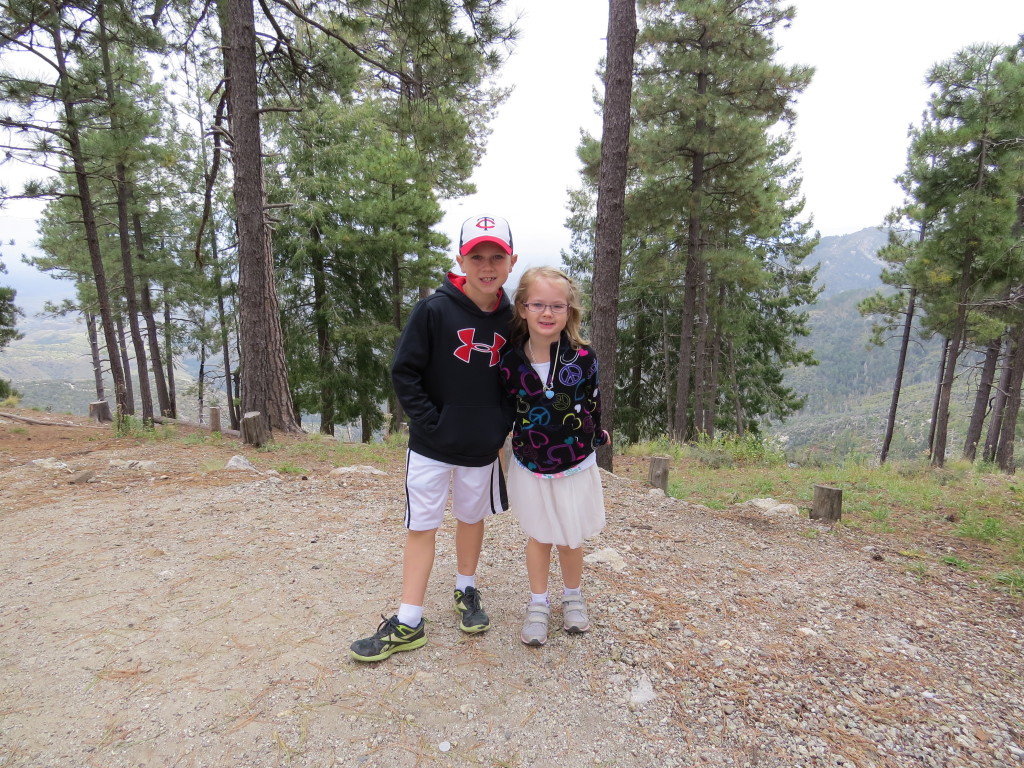 Once we completed the hour-long, 26 mile drive up to Summerhaven, I immediately started scanning for my target bird, a bird that Chris Rohrer assured me would be super easy to get. I kind of expected them to just be everywhere, so depression was starting to set in when we drove through the town and I wasn’t seeing any birdlife. We got out of the van and Melissa asked me what that weird noise was. Then she said, “Oh, here’s your bird.” Twenty feet in front of the car–Chris was right. Ah, the Steller’s Jay, at long last.
Once we completed the hour-long, 26 mile drive up to Summerhaven, I immediately started scanning for my target bird, a bird that Chris Rohrer assured me would be super easy to get. I kind of expected them to just be everywhere, so depression was starting to set in when we drove through the town and I wasn’t seeing any birdlife. We got out of the van and Melissa asked me what that weird noise was. Then she said, “Oh, here’s your bird.” Twenty feet in front of the car–Chris was right. Ah, the Steller’s Jay, at long last.
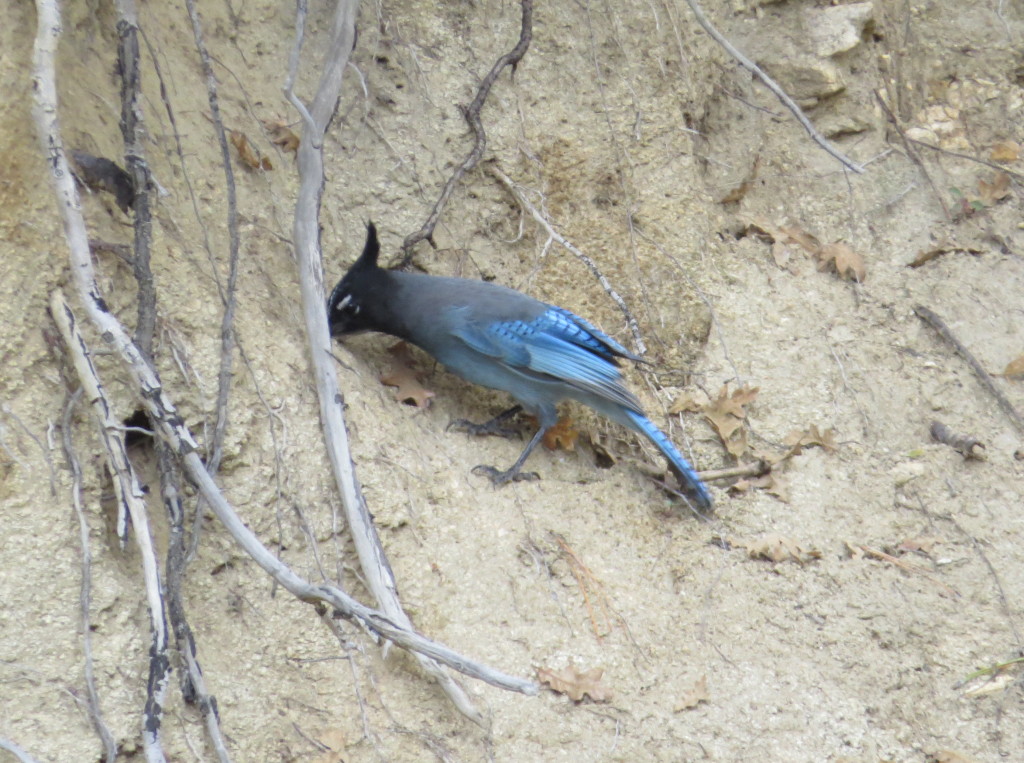
While the fam scoped out a trinket shop, I went on the hunt for a better photo of the target and to see what else I might turn up.
Numerous Yellow-eyed Juncos were foraging all over one of the streets. Evan was later able to add this bird to his life list as well as Pygmy Nuthatch, birds I first saw on Mt. Lemmon last March.
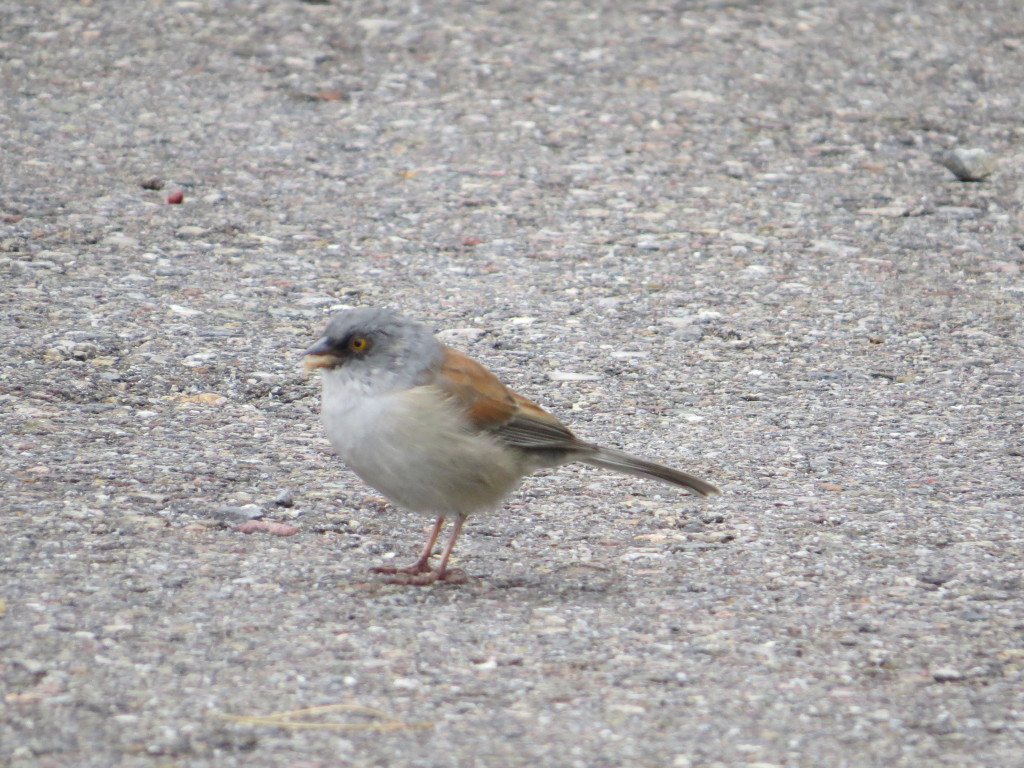
I also discovered the Frankenstein of the Junco world.
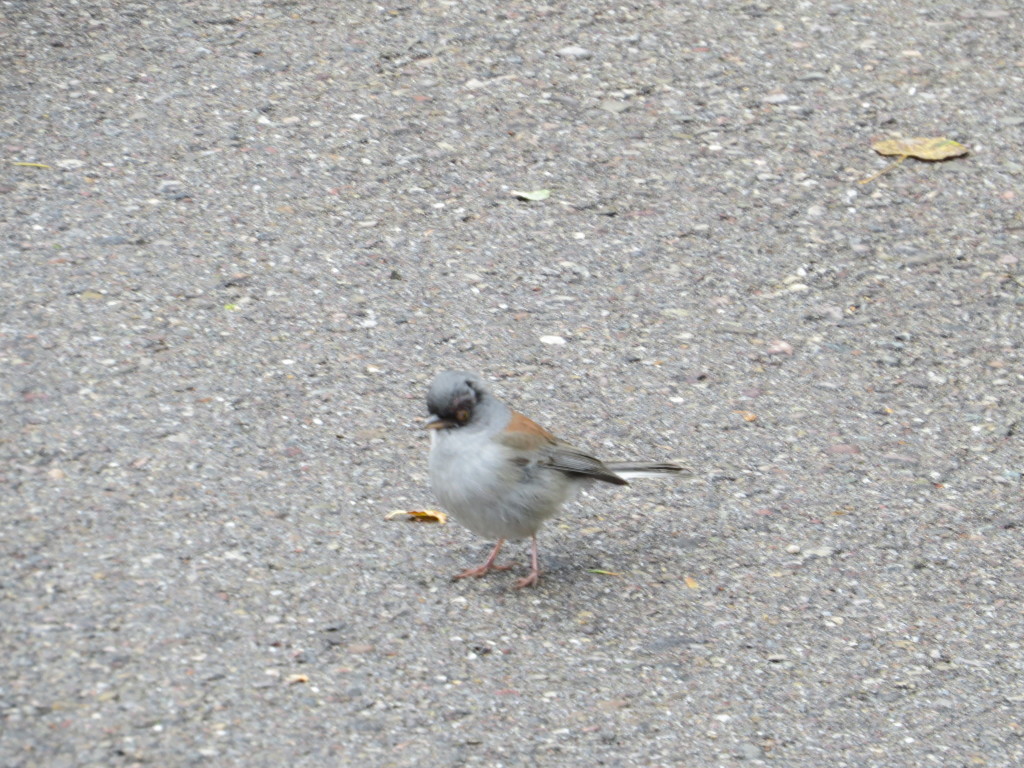
Eventually I caught up with a Steller’s Jay again and got what I was after despite the drizzle and clouds. What a great-looking bird and a long-awaited addition to the list!
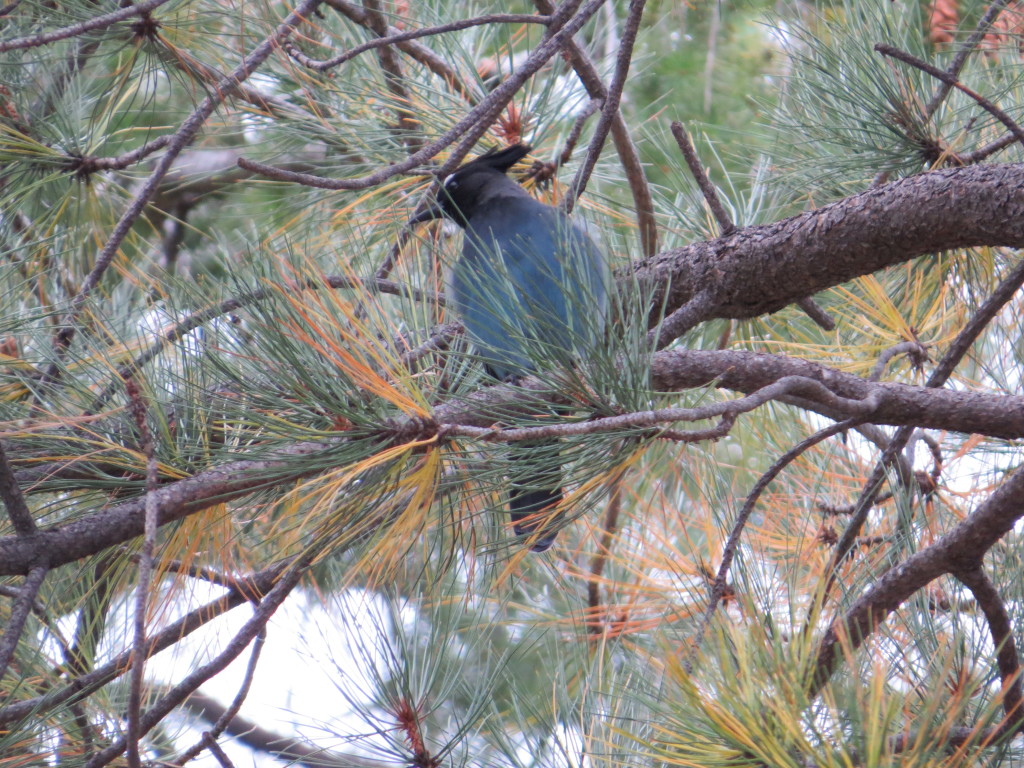
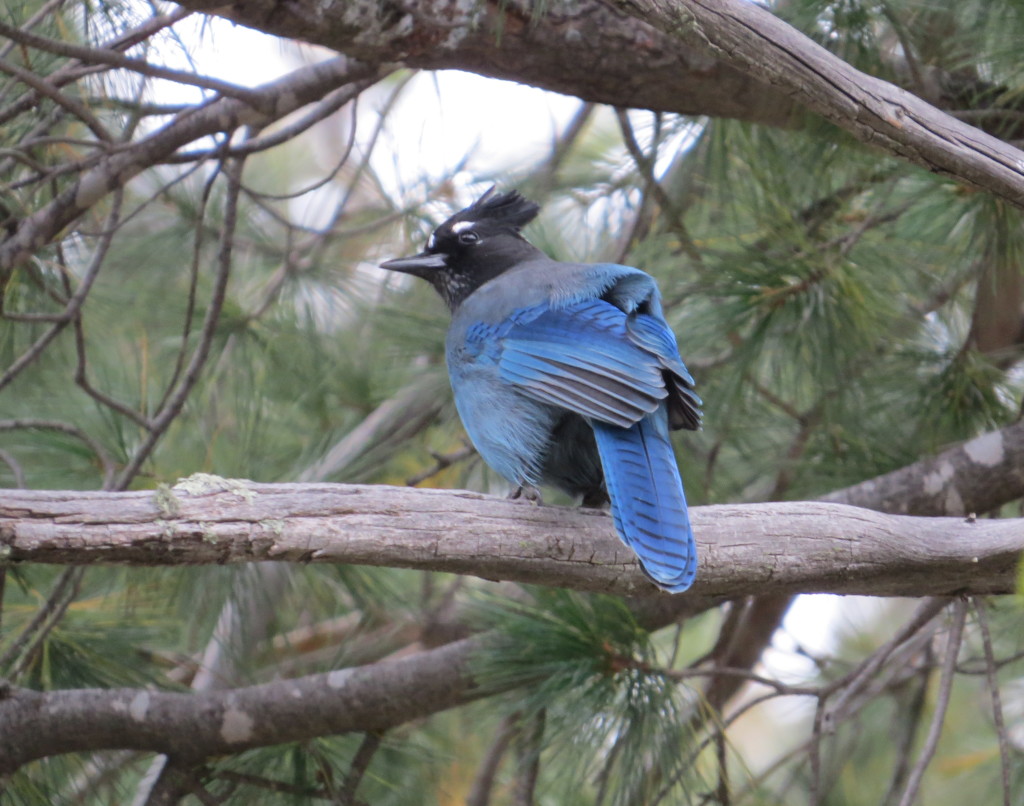 At least day two was going according to plan. Now, could we say the same for day three in the Huachuca Mountains where there was not only a Slate-throated Redstart but also SEVERAL Rufous-capped Warblers?
At least day two was going according to plan. Now, could we say the same for day three in the Huachuca Mountains where there was not only a Slate-throated Redstart but also SEVERAL Rufous-capped Warblers?
Lewis and Clark: Two Minnesota Explorers
Two years ago a reported Lewis’s Woodpecker near the Canadian border caused Steve Gardner and I to go on our first major chase together. We left around 2 AM, traveled 6.5 hours, and arrived in Roosevelt, MN shortly after daybreak where we spied the prized Woodpecker in about 30 seconds.
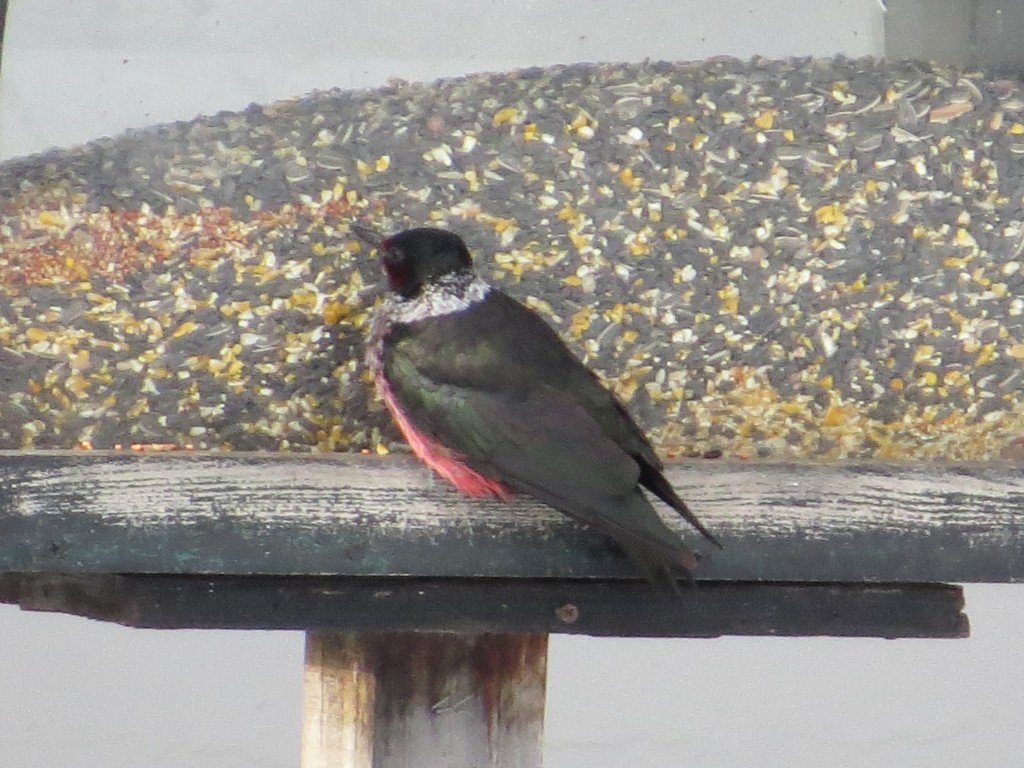 This trip, besides giving us a cool lifer, brought us to the edge of the world, which is somewhere near Baudette. We were within spitting distance of Ontario, an experiment in which the spit would shatter upon impact 11 months out of the year. Yes, that Woodpecker got us to explore a corner of the state we probably never, ever would have dreamed of going…ever. And then we would have missed seeing Willie, Minnesota’s largest walleye.
This trip, besides giving us a cool lifer, brought us to the edge of the world, which is somewhere near Baudette. We were within spitting distance of Ontario, an experiment in which the spit would shatter upon impact 11 months out of the year. Yes, that Woodpecker got us to explore a corner of the state we probably never, ever would have dreamed of going…ever. And then we would have missed seeing Willie, Minnesota’s largest walleye.
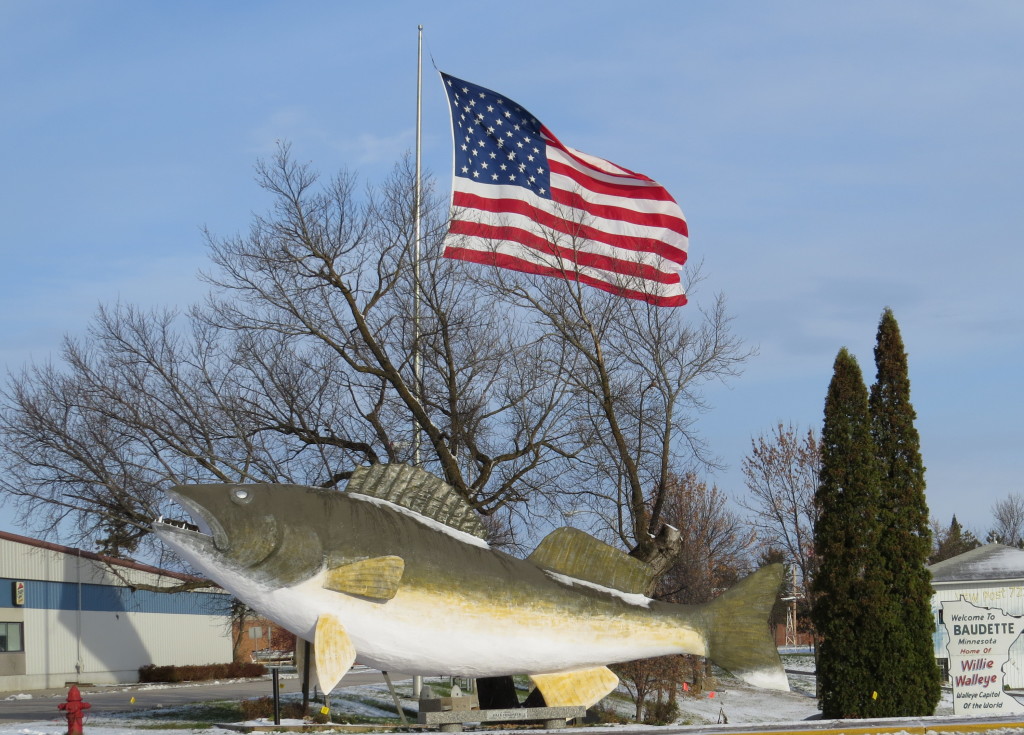
Fast forward to last weekend. A few days prior to that weekend, an incredible report came out of the southeastern corner of the state of a Clark’s Nutcracker. Steve needed it for his life list; I needed it for my state list. Last we checked, this was a bird found in the high-elevation forests of the ROCKY MOUNTAINS. As reports kept barraging our inboxes of this bird being exceptionally reliable and accommodating at its chosen home away from home near Winona, Steve and I once again made the decision to go to the ends of Minnesota to complete the Lewis and Clark bird combo for our state lists. (The blue dot is home.)
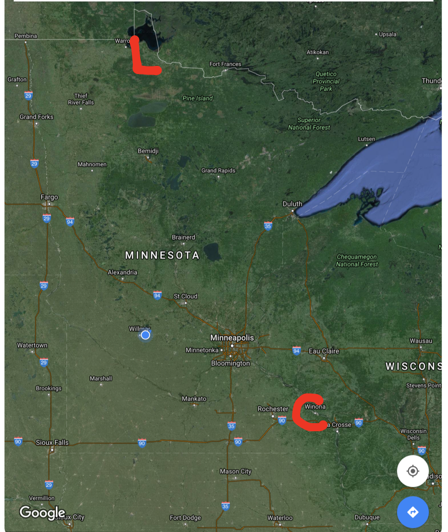
Since it was only four hours one way, this chase was easy. (Oh, how our perception of “far” has changed since that first chase!) The finding was a little tougher this time, though– it took us a whole minute on scene before we got on the bird. And right on this bird is practically what we were. I don’t recall a bird more willing to be approached for a crush fest. Nor do I recall a bird with such an out-of-whack head-size to body-size ratio.
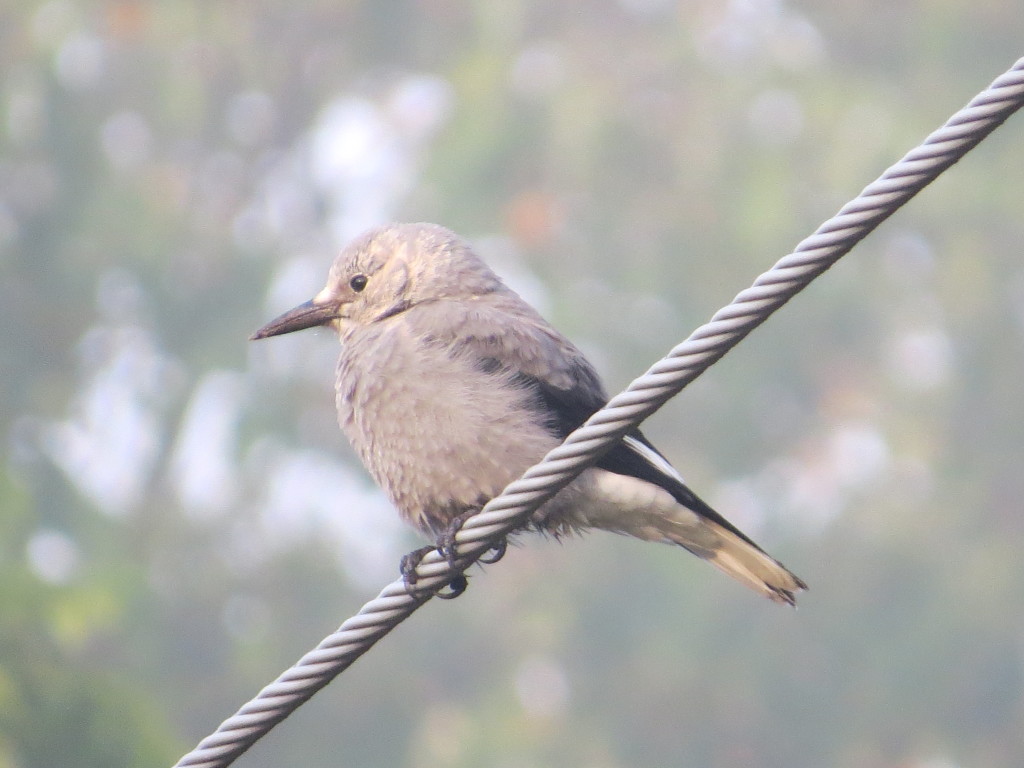
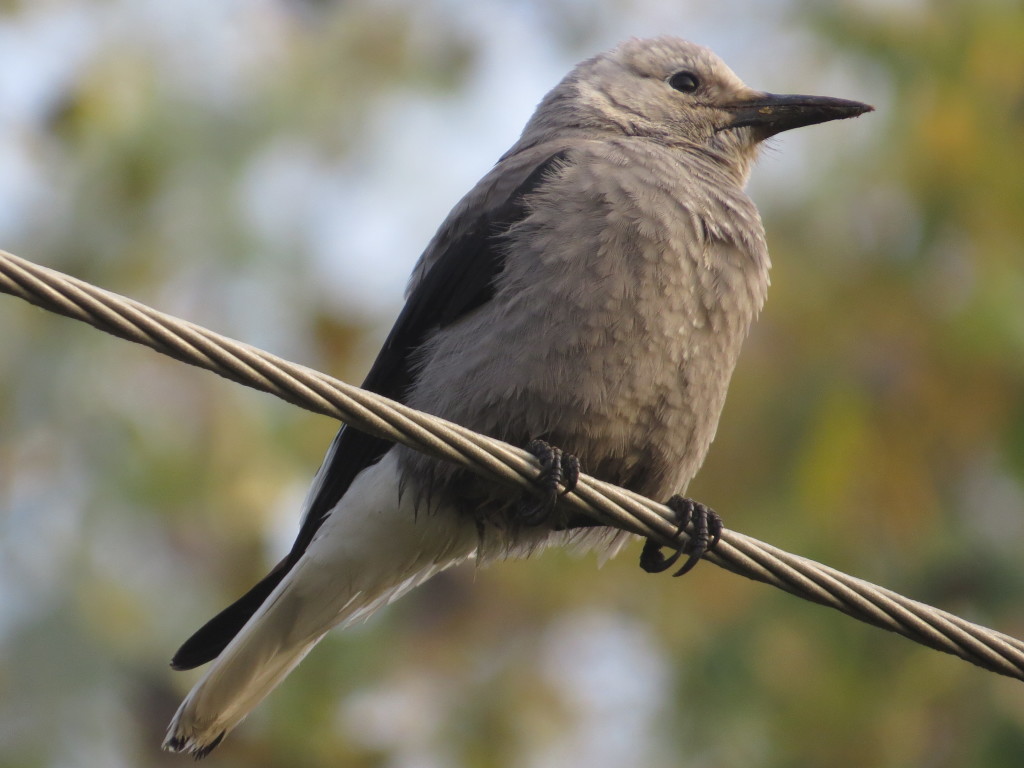
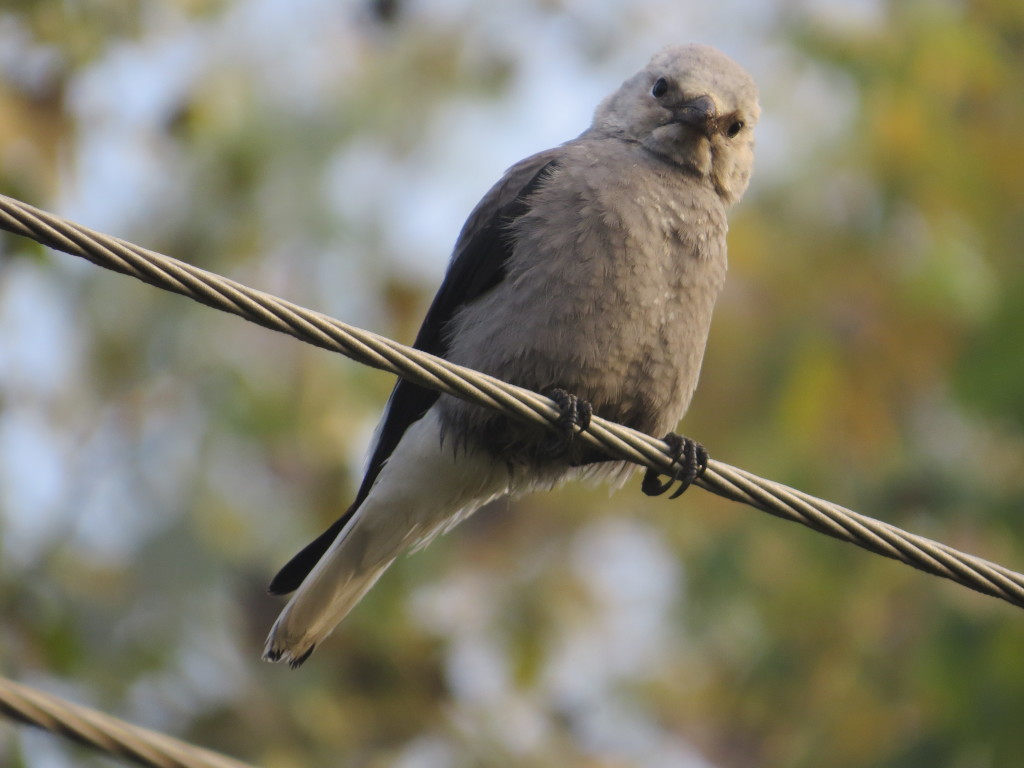
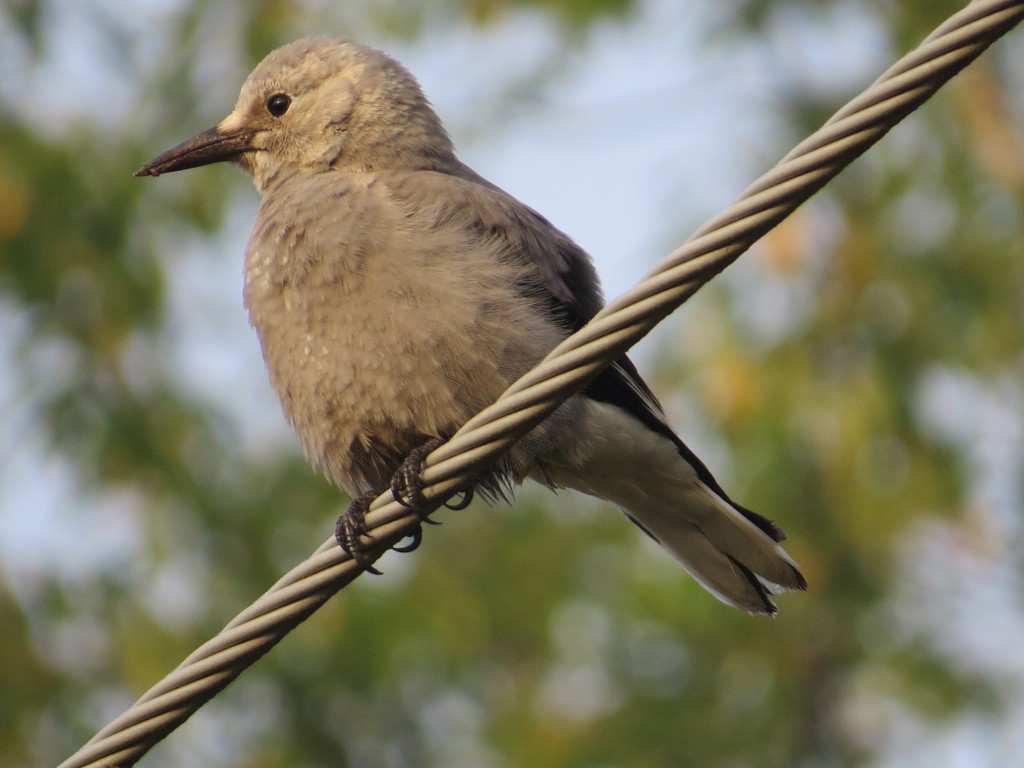 This bird did do more than sit on a wire, not much more, but we saw it fly down to the road to forage. It’s tail pattern in flight is quite a sight. The homeowner who discovered this bird told us to watch for that pattern when it flew.
This bird did do more than sit on a wire, not much more, but we saw it fly down to the road to forage. It’s tail pattern in flight is quite a sight. The homeowner who discovered this bird told us to watch for that pattern when it flew.
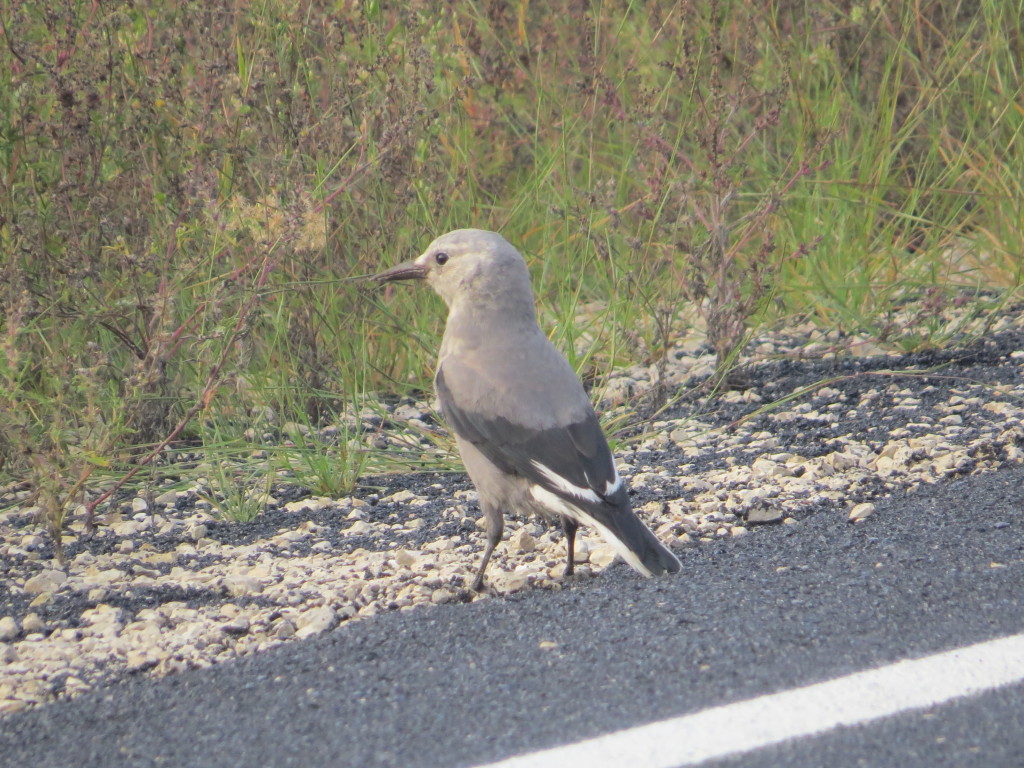 One can only imagine the thoughts running through this grasshopper’s head in this moment. Is it just me, or is it on its knees pleading for mercy?
One can only imagine the thoughts running through this grasshopper’s head in this moment. Is it just me, or is it on its knees pleading for mercy?
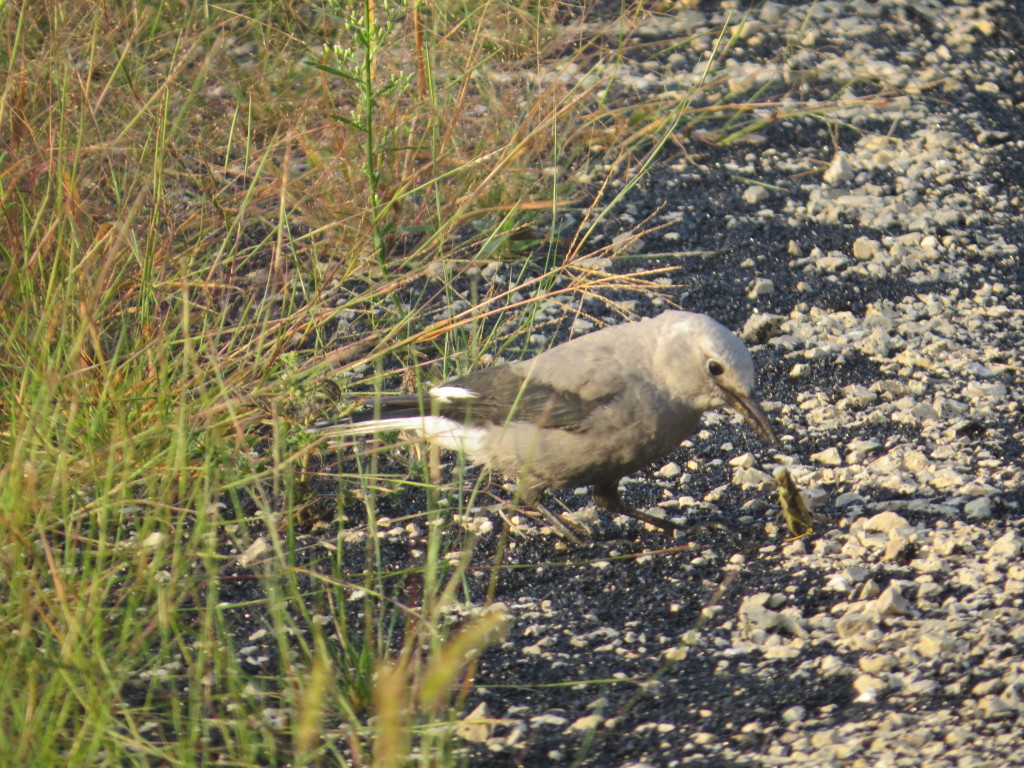 Hunger trumps mercy apparently.
Hunger trumps mercy apparently.
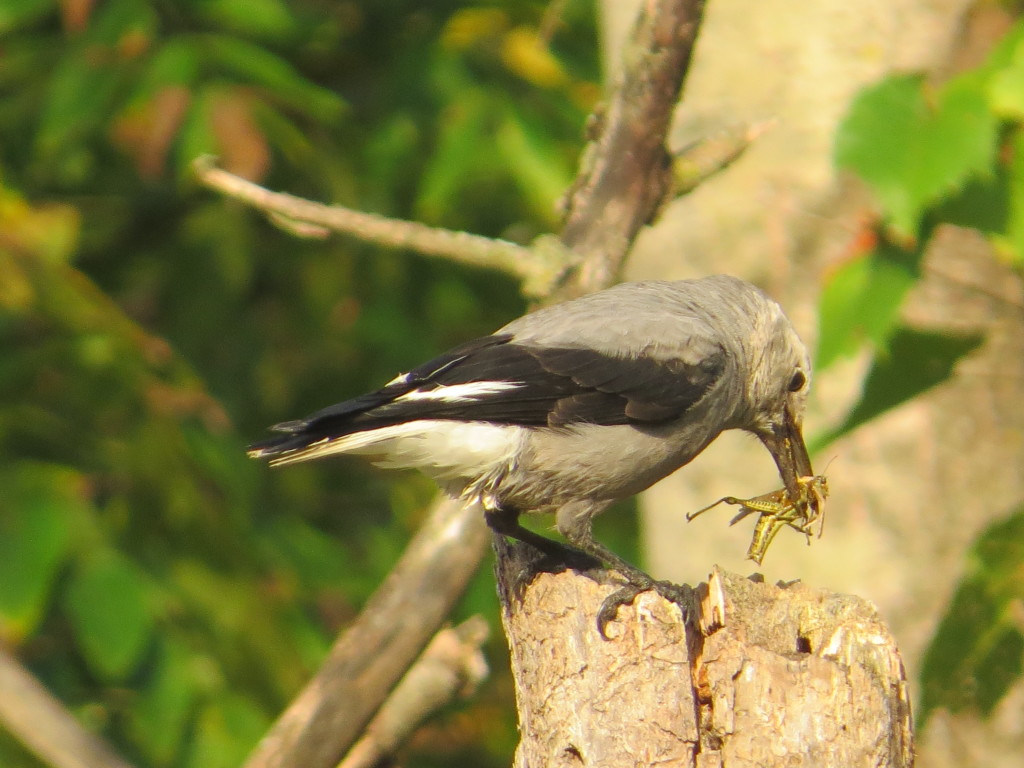
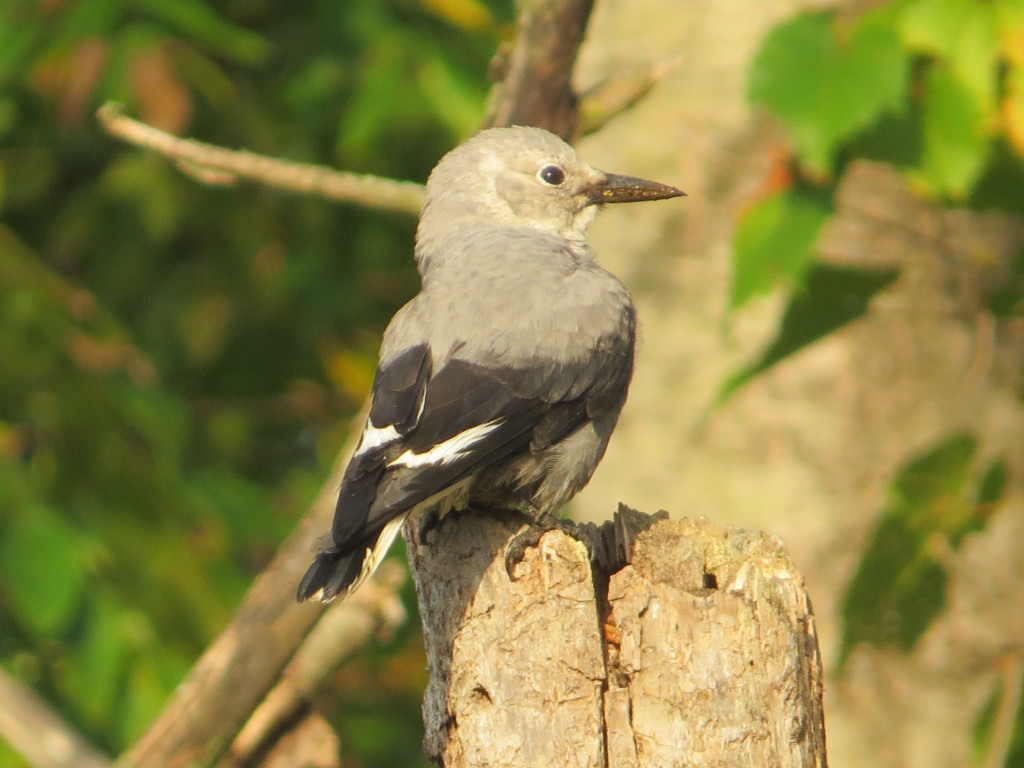
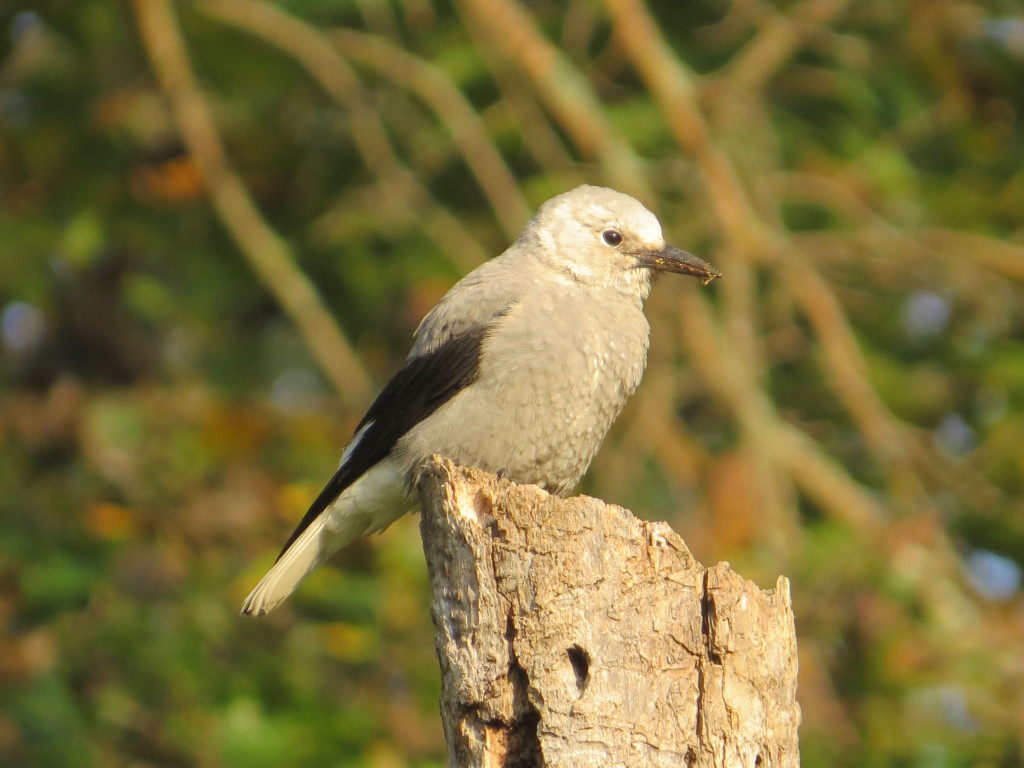
After a half hour with the bird, Steve and I were back on the road. This time, unlike the trip to the frozen tundra to see Lewis, we were in awe of the beauty of the bluff country of southeastern Minnesota as we drove the scenic Hwy. 61 along the Mississippi. This route is a must for any serious Minnesota explorer.
One can only imagine what vagrants will show up next and to what other corners of the state they will take us. Wherever they are, going off on a crazy quest is much easier with a fellow adventurer.
The Golden Hour
While logical people might conclude that birding for ABWCH has slowed down due to school starting back up, the truth is that we’ve still been getting out regularly. It’s just been, well….pretty dead out there.
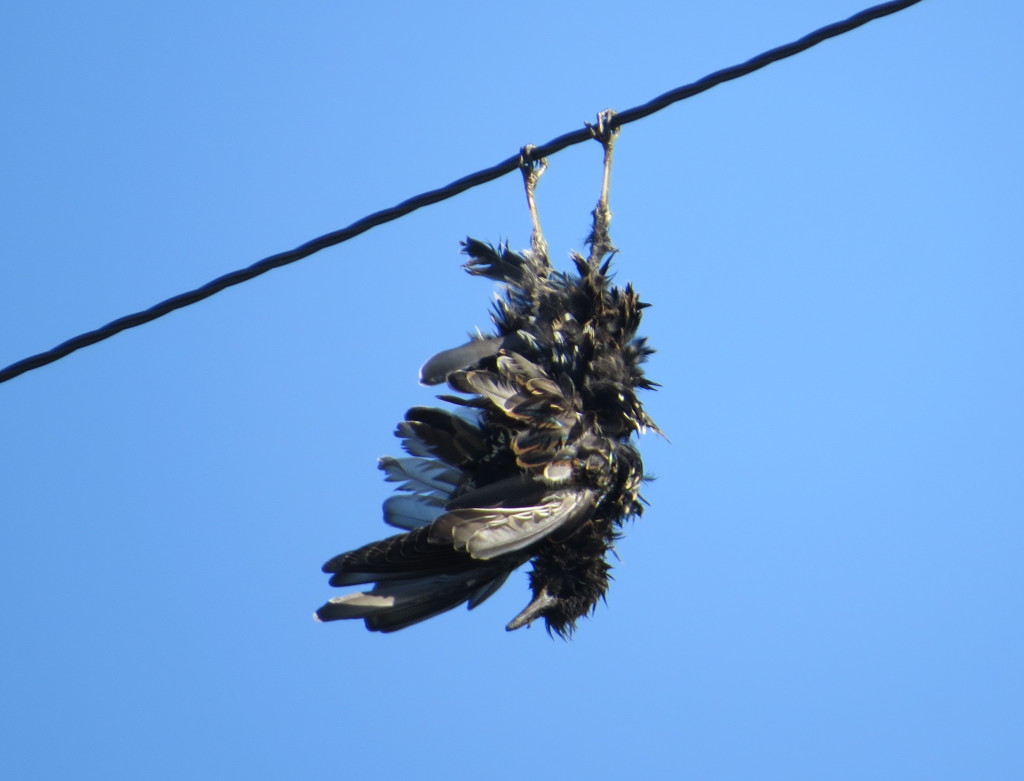
Though not as thought-provoking as the Starling’s situation, one might also wonder why we’ve continued to go out birding despite being busy with school, despite the lack of birds. The answer is simple and not intriguing: a number. Considering my profession, I am, ironically, not a numbers person when it comes to birds–I don’t readily have my year totals, know what my 200th or 300th species were, or even know exactly how many birds are on my life list. However, with all my out-of-state travel this past year I was poised to do something kind of cool, something I don’t know that I’ll get to do again–see 300 species in a single year. When I saw mid-summer that I was in the 280s I was motivated to chip away at it. That may not seem like a great deficit to make up, but we were heading into the slow part of the year with not many chances for new birds. The long-story short is that, by brute force and a bit of luck, I fought my way to 299, where I sat for weeks.
I wanted #300 to be a special bird that I was aching to see again anyway, the Red-headed Woodpecker. Despite seeing dozens last year, I have had zero luck with them this year. And it hurts. Bad. Anyhow, the kids were dragged along with me on yet another fruitless RHWO search last weekend out in Swift County (Mom was at a Twins game). While we were out, though, MN birding heavy-weight Doug Kieser posted to the listserv that there was a single American Golden-Plover and a single Black-bellied Plover at the Bird Island sewage ponds. Either would fill the 300 slot (thanks for nothing, RHWO) and finally end that saga, so the kids and I charted a new course to Renville County. It would, of course, mean watching more movies in the car, staying out past bedtime, and eating a to-go pizza in the van sans napkins, plates, etc. That’s just how we roll when Mom’s gone.
We got down to Bird Island with precious minutes left.
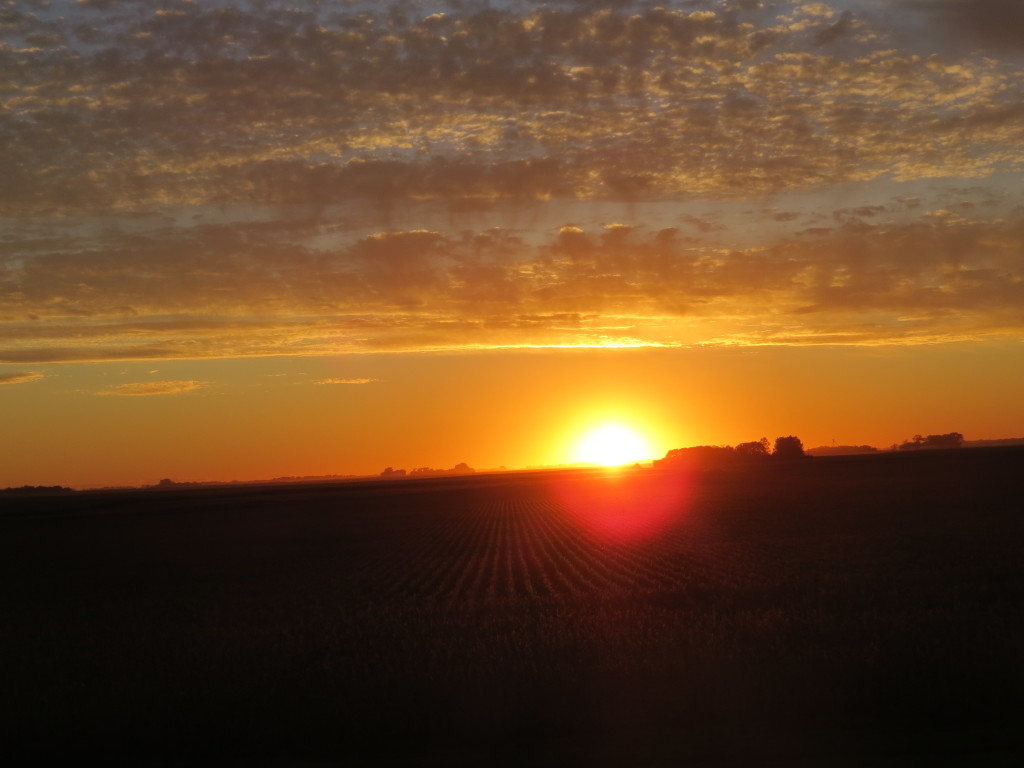
Using my better judgment and recalling my run-in with the law at the Pennock sewage ponds last year, I decided to not let my kids watch their movie in the suspicious-looking, parked mini-van while I hiked around the ponds. So they took a little hike with me. In no time we found a couple big Plovers on the grassy dikes between the rectangular ponds. From what I could tell, both were American Golden-Plovers. Finally, 300 birds in a year could be crossed off the bucket-list (unless I get the crazy hair my brain to do 400 sometime).
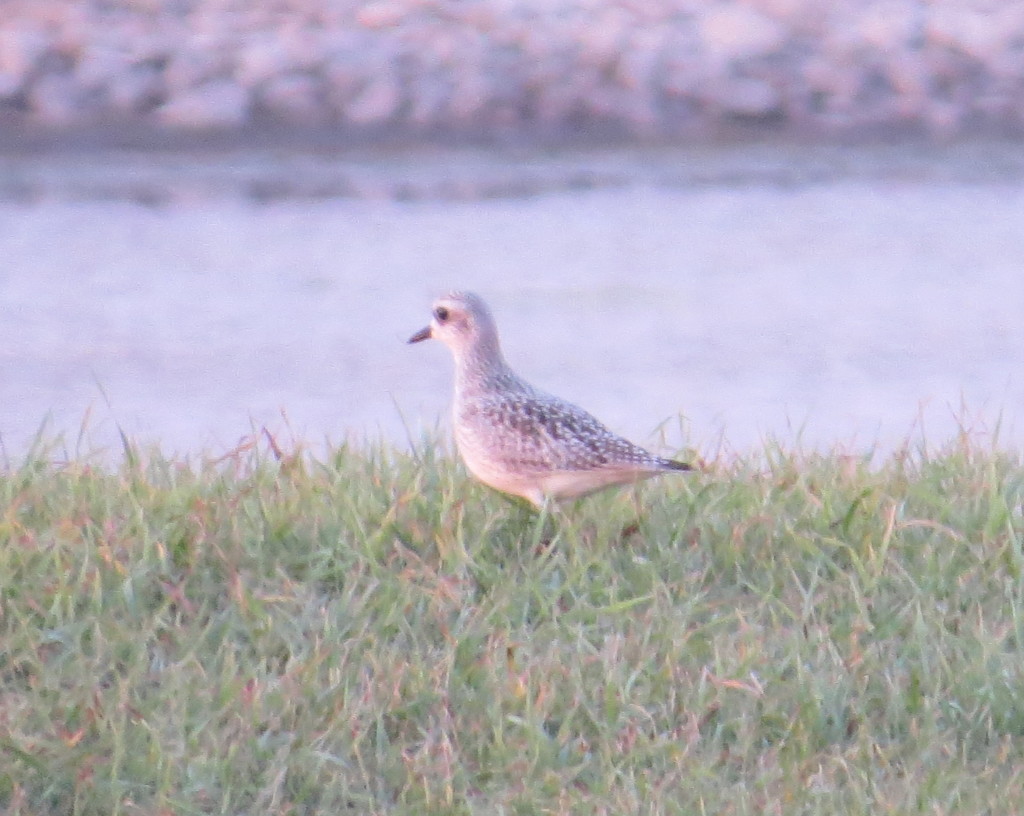
Even though it was not a new bird for the year, it was fun to see a Buff-breasted Sandpiper (in the background) associating with the two American Golden-Plovers. The kids had more fun checking out snake holes.
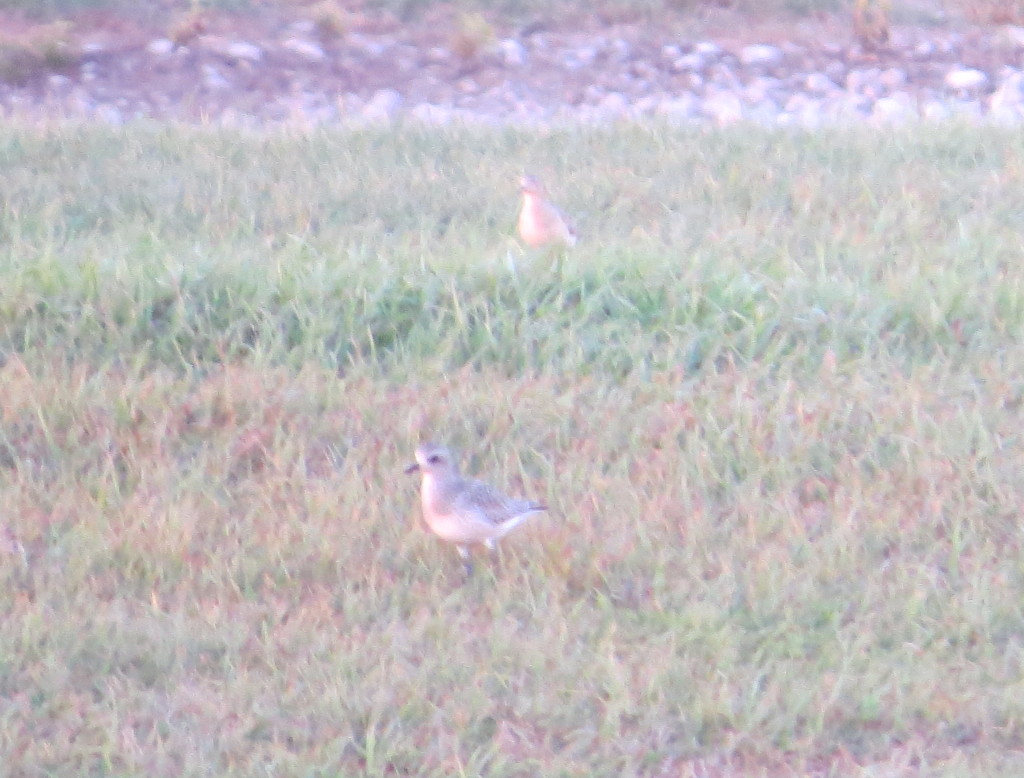 With the rapidly diminishing light, photos were getting harder to take and kids were getting colder. So we left the Plovers and snake holes and headed back to the van, occasionally looking behind us:
With the rapidly diminishing light, photos were getting harder to take and kids were getting colder. So we left the Plovers and snake holes and headed back to the van, occasionally looking behind us:
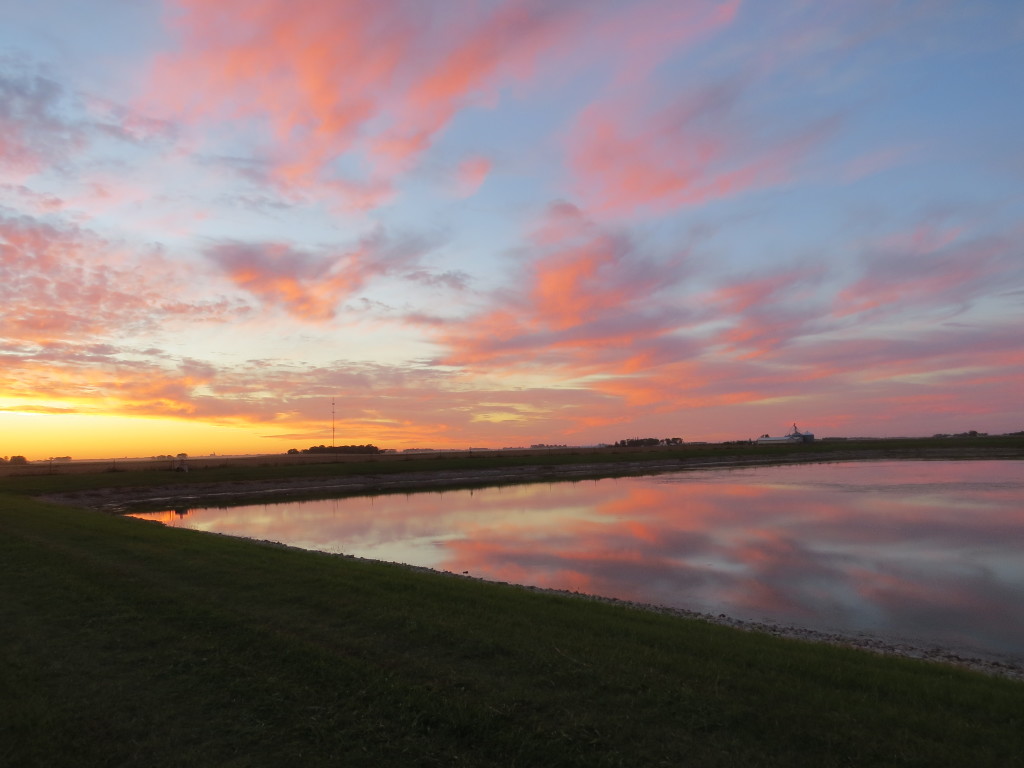 Time moves way too fast. But it is that quality of time that causes us to take note of the significance of certain things: 300 birds in a year, a sunset at the end of a day, or a rare, non-posed moment of affection between a brother and a sister.
Time moves way too fast. But it is that quality of time that causes us to take note of the significance of certain things: 300 birds in a year, a sunset at the end of a day, or a rare, non-posed moment of affection between a brother and a sister.
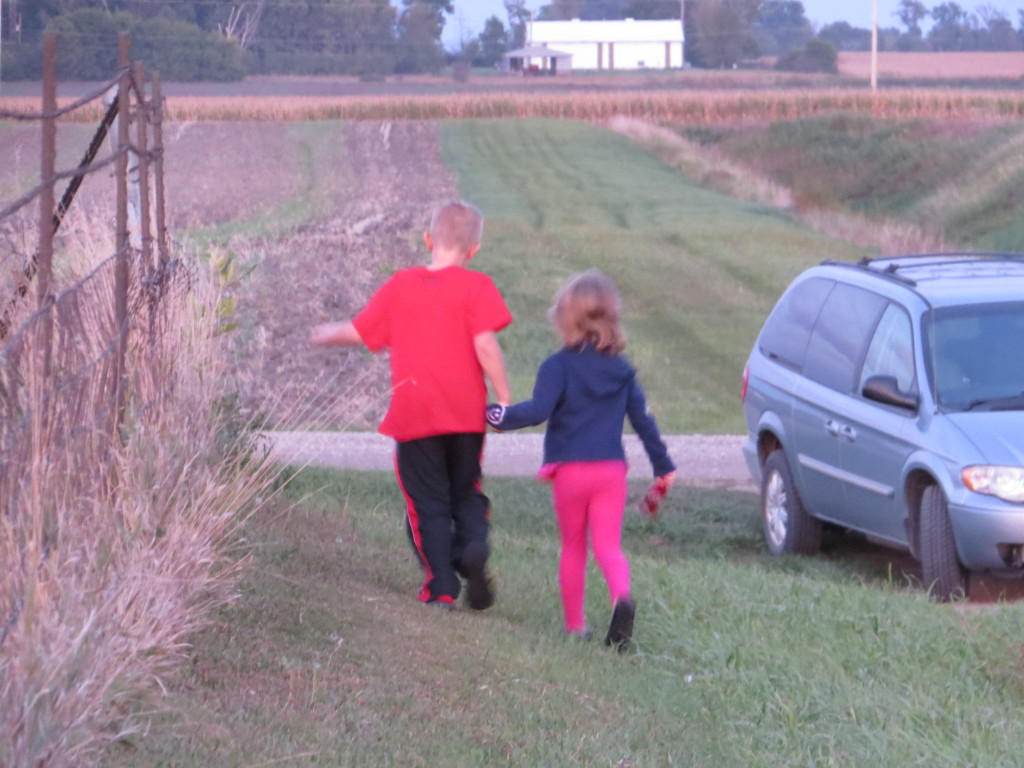 So what will the rest of this year hold? Who knows, but the adventures will continue–with or without napkins, with or without birds, and with or without two kids getting along.
So what will the rest of this year hold? Who knows, but the adventures will continue–with or without napkins, with or without birds, and with or without two kids getting along.
I, Too, Was a Patch Birder Once
September 6th was World Shorebirds Day, and as any local library or video store can attest, I am not always known for my punctuality. So, I bring forth my shorebird offerings to the blogosphere a day late (or two) and few shorebirds short. Like any birder thinking inside the box, when August rolled around I was zeroed in on shorebirds as they are making their epic, transhemispheric migrations and occasionally stop over for a meal and a rest on their way south.
One always hopes for a classic mudflat on a drawn-down lake or a flooded field when shorebirding. Sometimes those just can’t be found. Sometimes one must bird the bottom of the barrel…or the top of a poop pond. I scoured many a wastewater treatment facilities at small municipalities in the area. Occasionally I came up with some solids, like this trio of Red-necked Phalaropes.
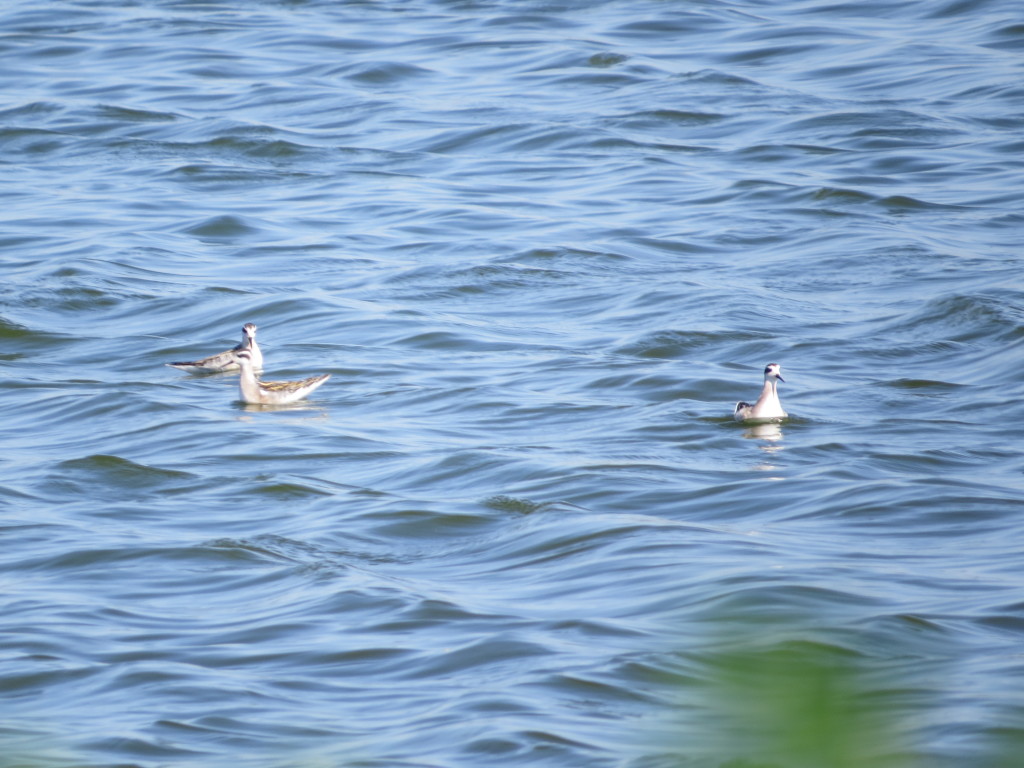
Red-necked Phalaropes at Blomkest WTP
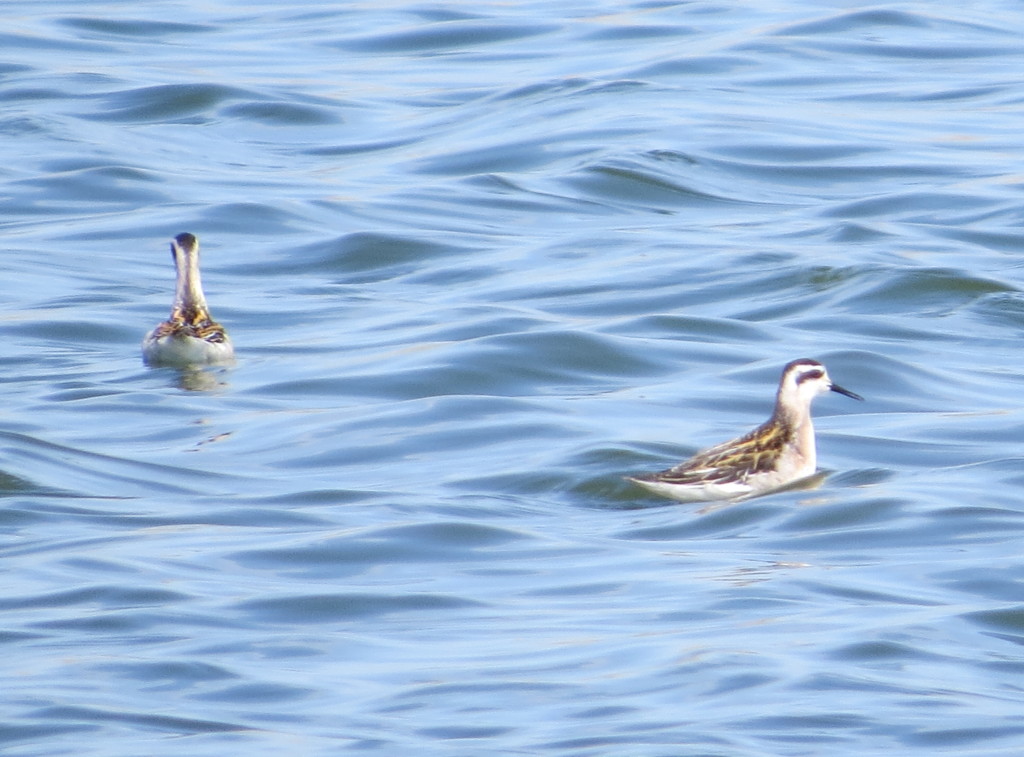
Or some Semipalmated Sandpipers, which I pleasantly discovered was a new county bird after-the-fact.
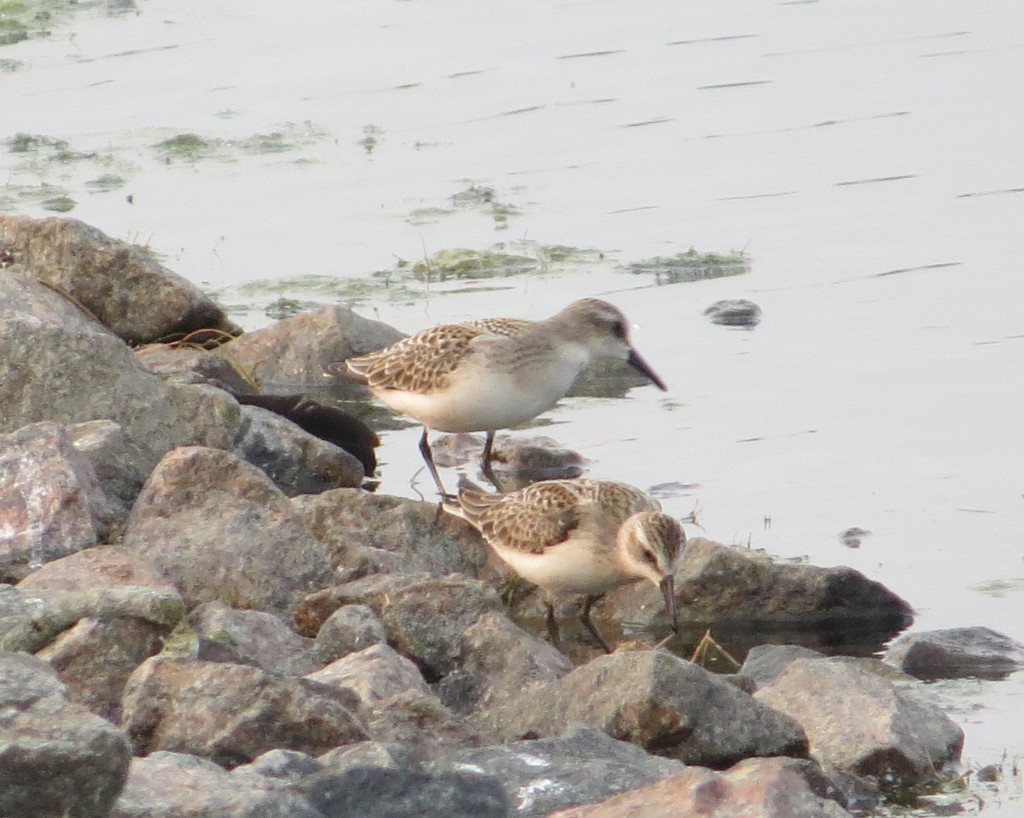
Semipalmated Sandpipers at Lake Lillian WTP
Once I even got some good looks at a nice year bird, the Semipalmated Plover.
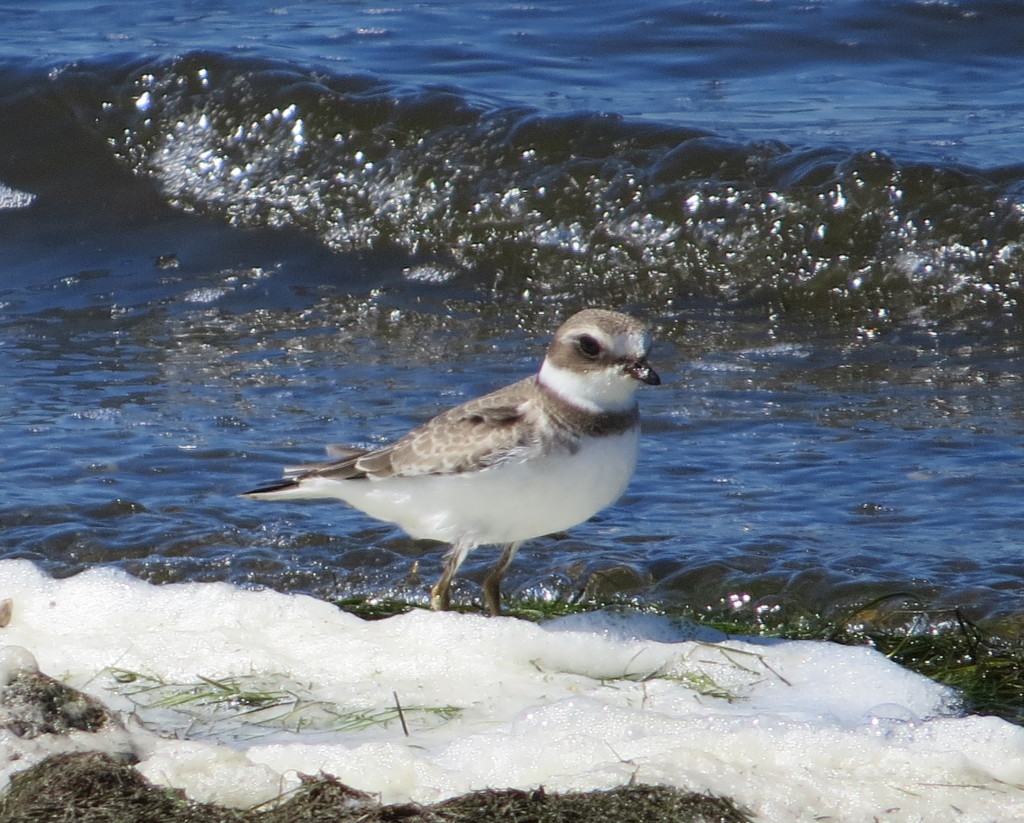
Semipalmated Plover at Bird Island WTP
Bad dad moment confession: the kids were with me for this one but in the car, opting to watch their video instead of shorebirds; half-way home I remembered this bird is one Evan had never seen and I had killer-no-binos-needed looks. You might say I flushed that opportunity away. Amiright?
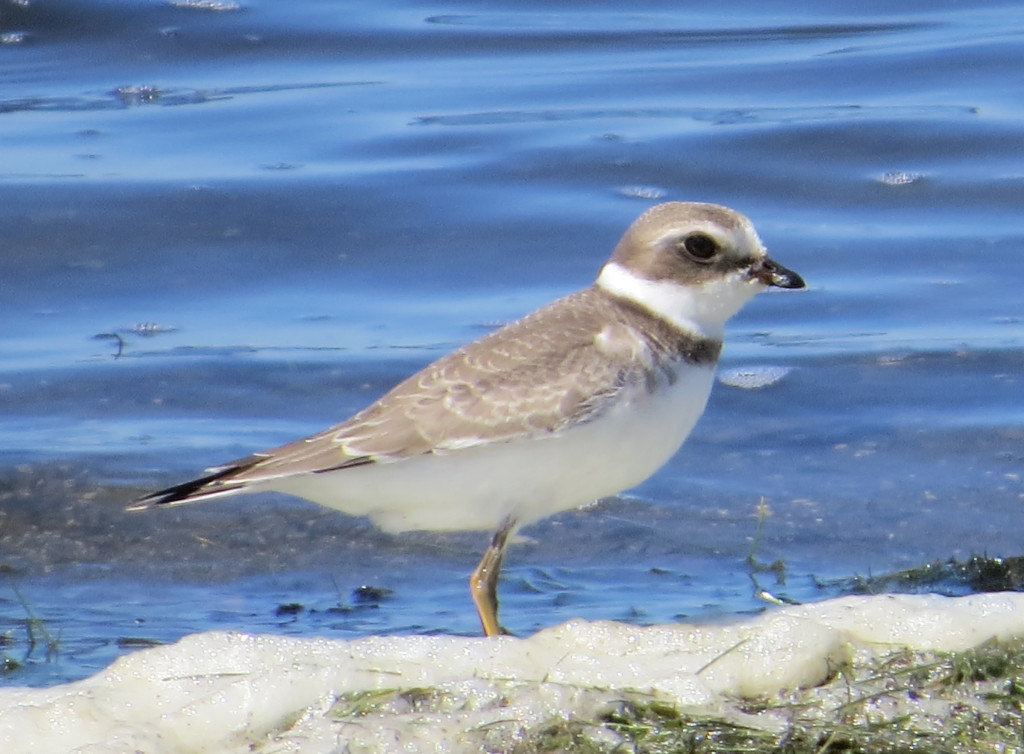
I was as red-faced as this Stilt Sandpiper, which isn’t much but the appropriate amount since Evan is a take-it-or-leave-it birder these days.
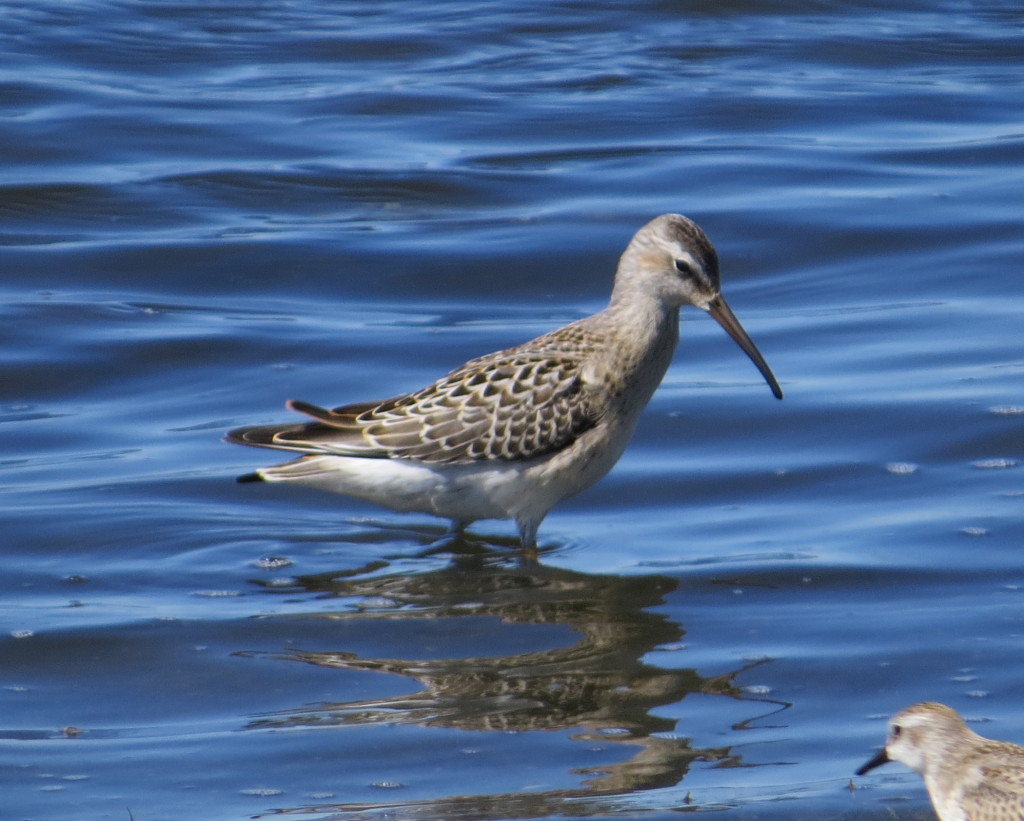
Stilt Sandpiper at Bird Island WTP
Growing tired of the Tour-de Ponds, I kinda gave up on birding for awhile as work responsibilities took up more of my time. Then one day while I was sitting at home I had a recollection that instantly morphed into an epiphany. Near the end of July I remembered driving home with the family late in the evening after having spent the weekend in Duluth, and I recalled seeing a small, flooded spot in a soybean field not far from home with some sandpipery-looking birds even. We were too tired to stop, and so this patch was soon forgotten and never thought about for weeks. Until that moment. Instantly I headed for the door as I realized I had left a habitat-island of prime shorebird mudflats unchecked for all that time. When I got out there and saw how perfect the spot was in a landscape bereft of optimal habitat, I was kicking myself.
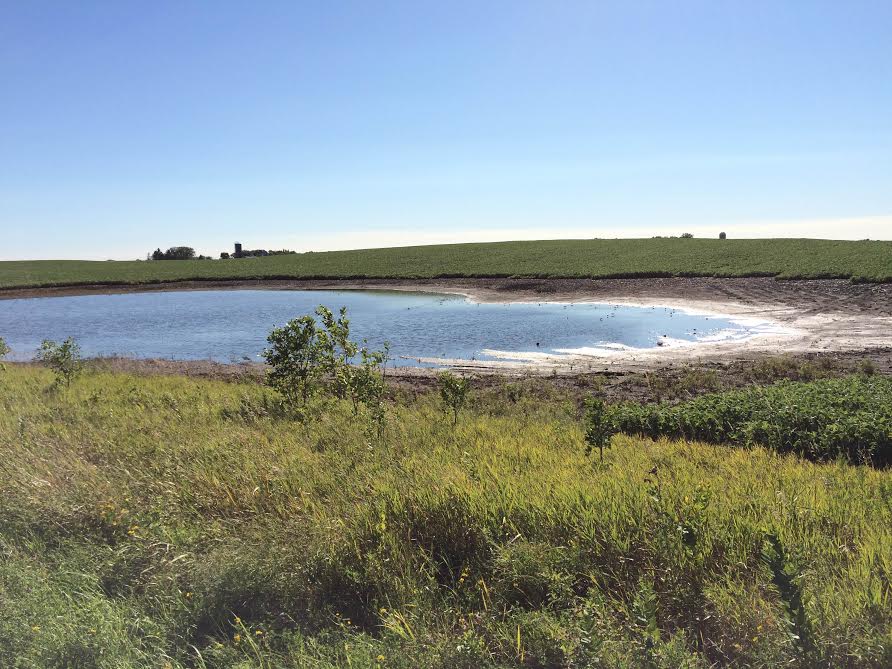 The flooded drain tile intake that created this spot was only about two acres in size. When there is no other habitat around, that is all you need. At first, there was nothing but Killdeer and the odd Lesser Yellowlegs or two, harbingers of good things to come.
The flooded drain tile intake that created this spot was only about two acres in size. When there is no other habitat around, that is all you need. At first, there was nothing but Killdeer and the odd Lesser Yellowlegs or two, harbingers of good things to come.
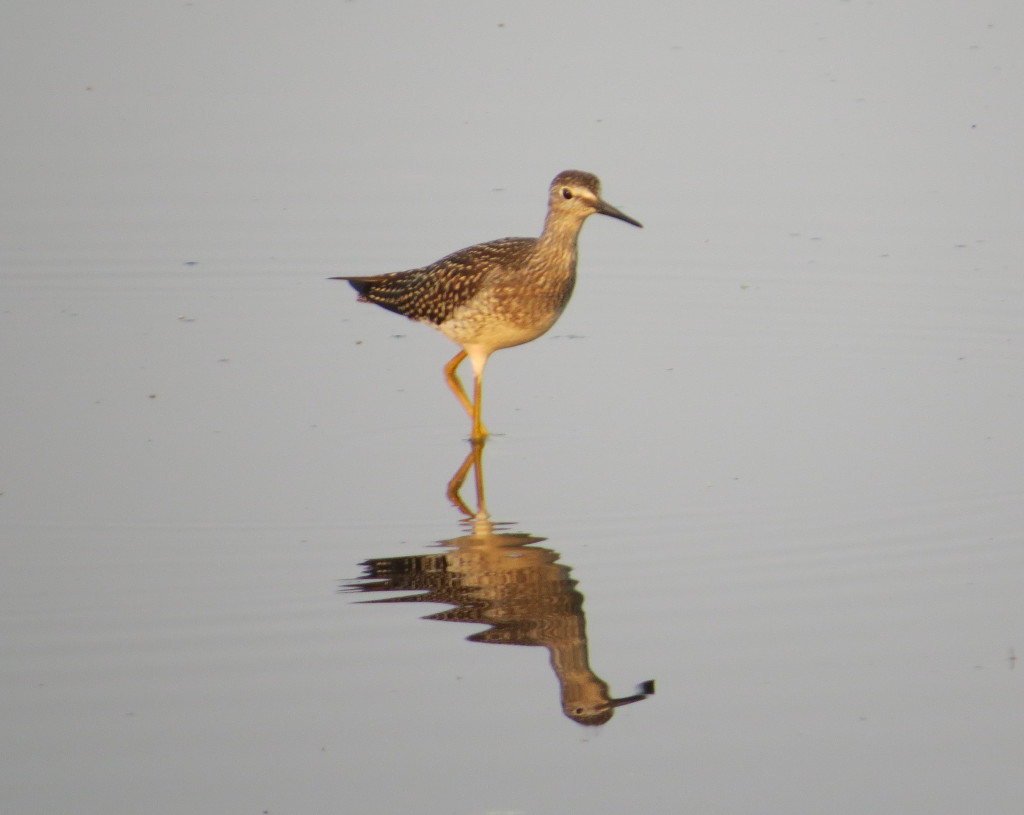 So this is the story of my accidental patch. Having it so close to home gave me the opportunity to check it multiple times a day, day after day. Before I knew it, I was becoming a devoted patch birder whose persistence started to pay dividends in things like a pair of dapper Baird’s Sandpipers.
So this is the story of my accidental patch. Having it so close to home gave me the opportunity to check it multiple times a day, day after day. Before I knew it, I was becoming a devoted patch birder whose persistence started to pay dividends in things like a pair of dapper Baird’s Sandpipers.
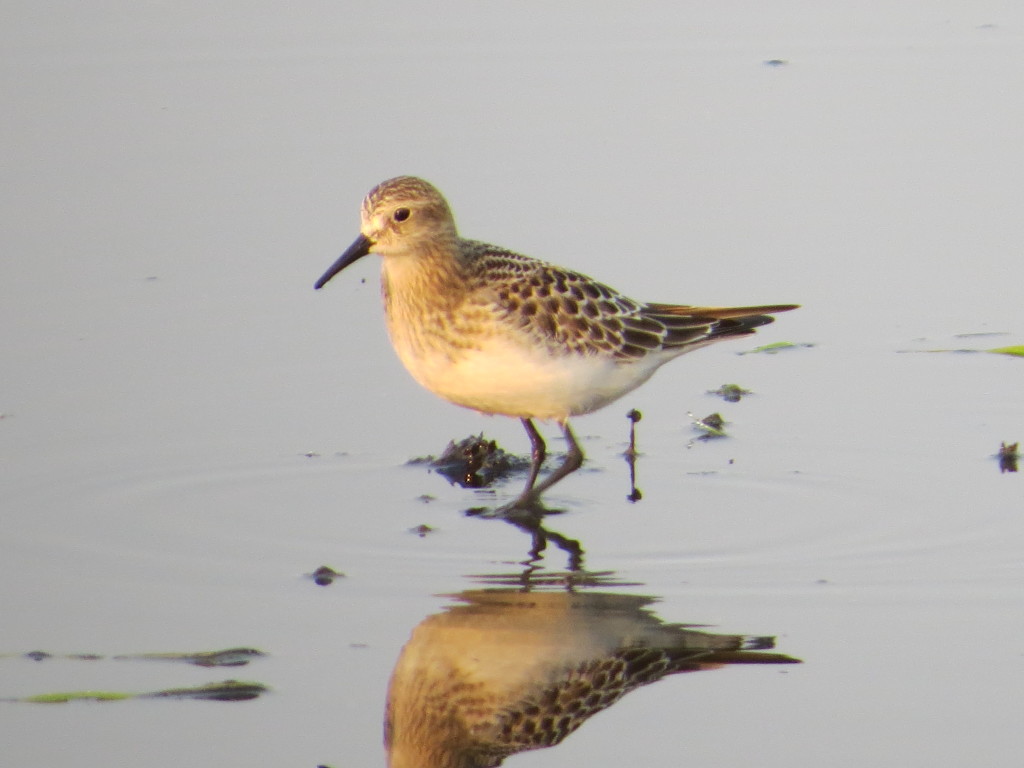
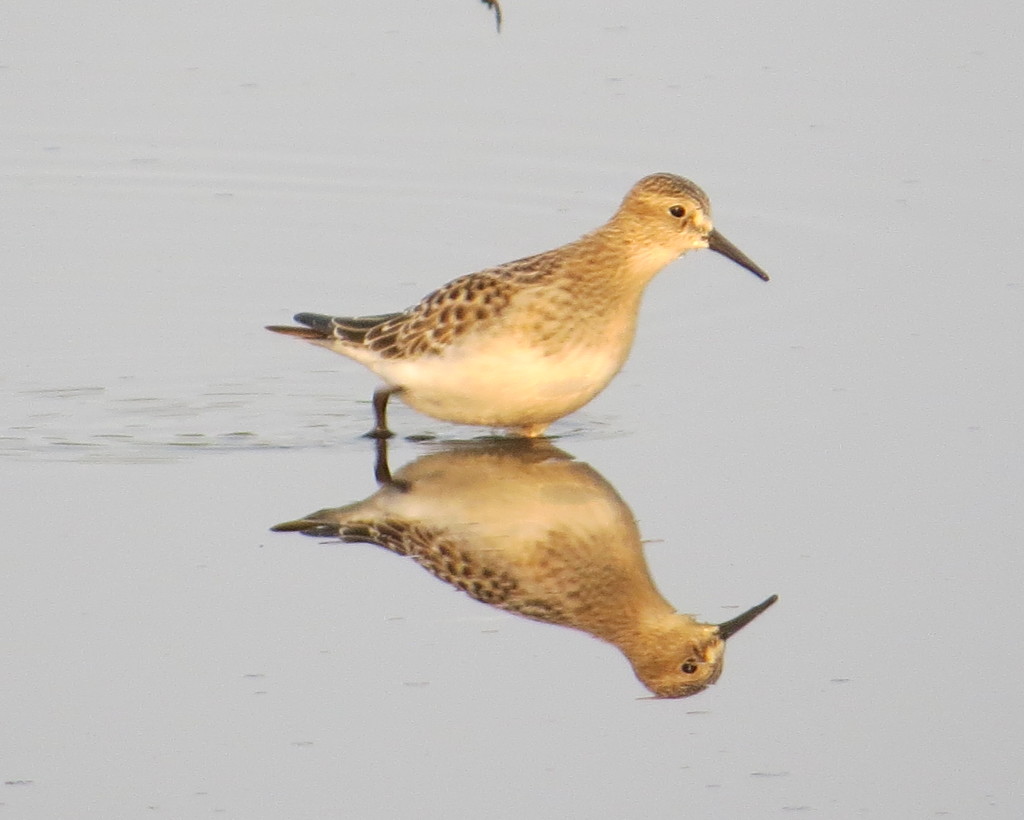
Having spent a great deal of time with these birds in good light, I think it’s fair to say that the Baird’s is near the top of my favorite shorebirds list.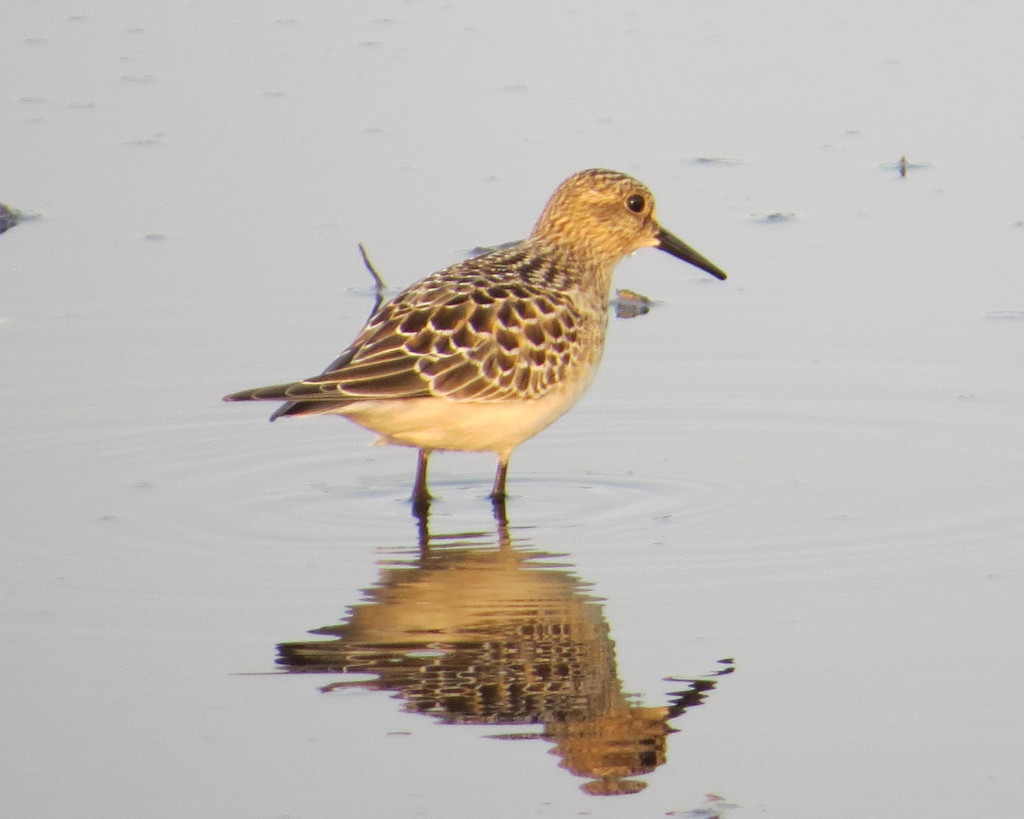
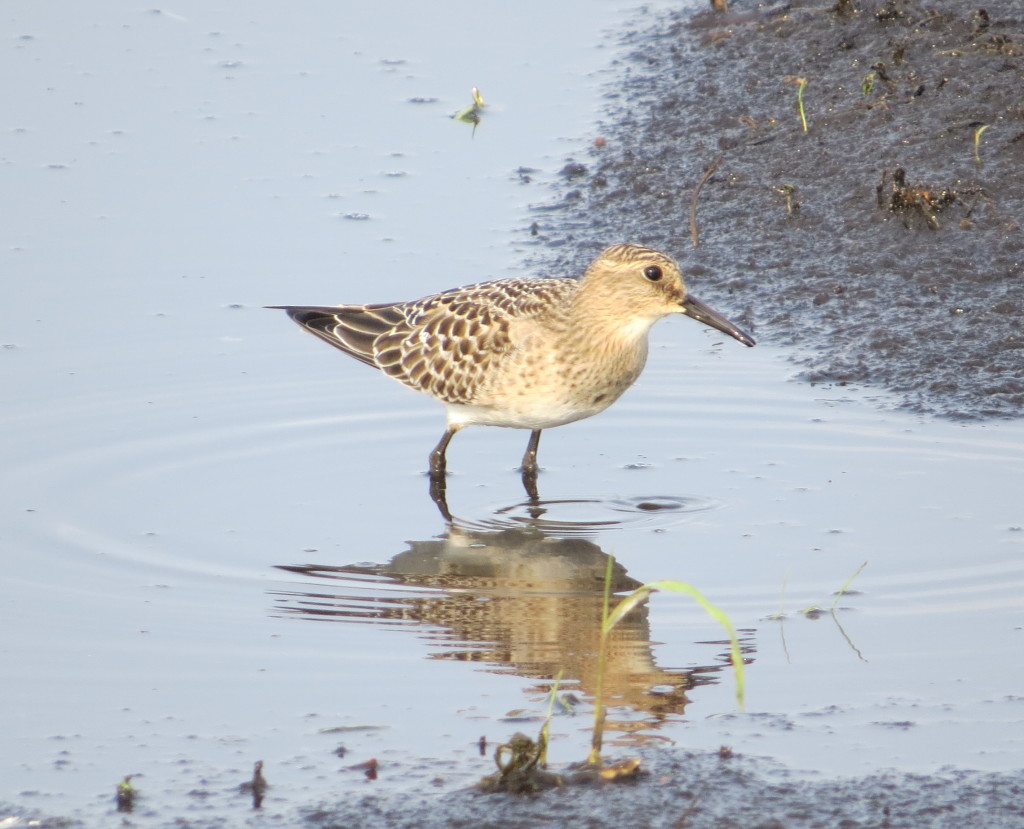 One of the benefits of a having a patch is that, in addition to looking for new birds that have joined the party, you can also keep tabs on the regulars, like the two Stilt Sandpipers that were there day in and day out.
One of the benefits of a having a patch is that, in addition to looking for new birds that have joined the party, you can also keep tabs on the regulars, like the two Stilt Sandpipers that were there day in and day out.
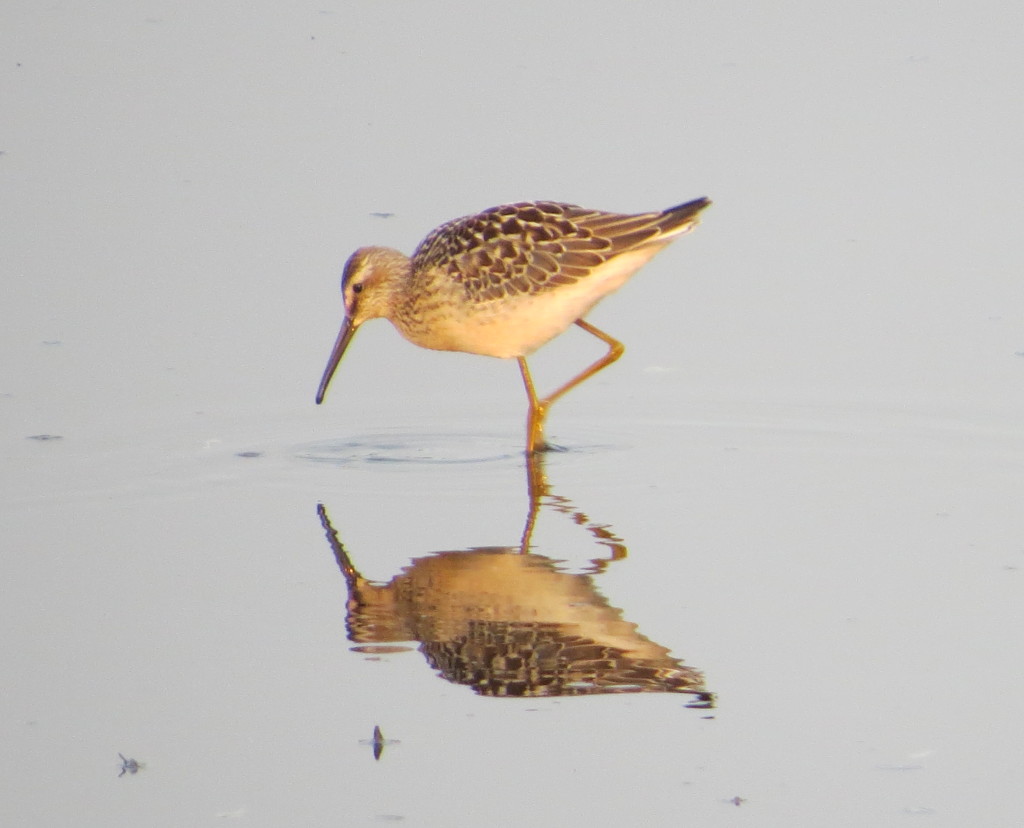
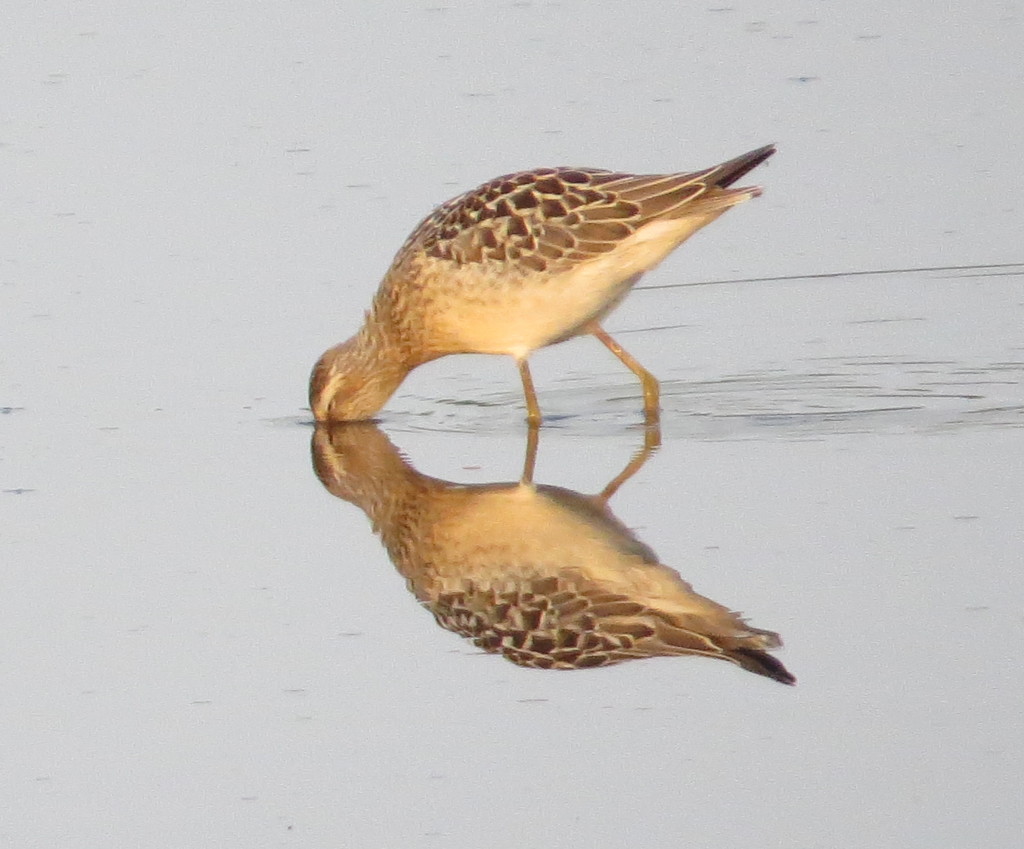
It was always exciting when there was someone new in the mix. This lone Semipalmated Plover was one of my favorites. Every day I looked for it among the myriad of Killdeer and was always relieved whenever I found it had decided to stick around for just one more day. I also made good on my previous failing and got Evan this lifer.
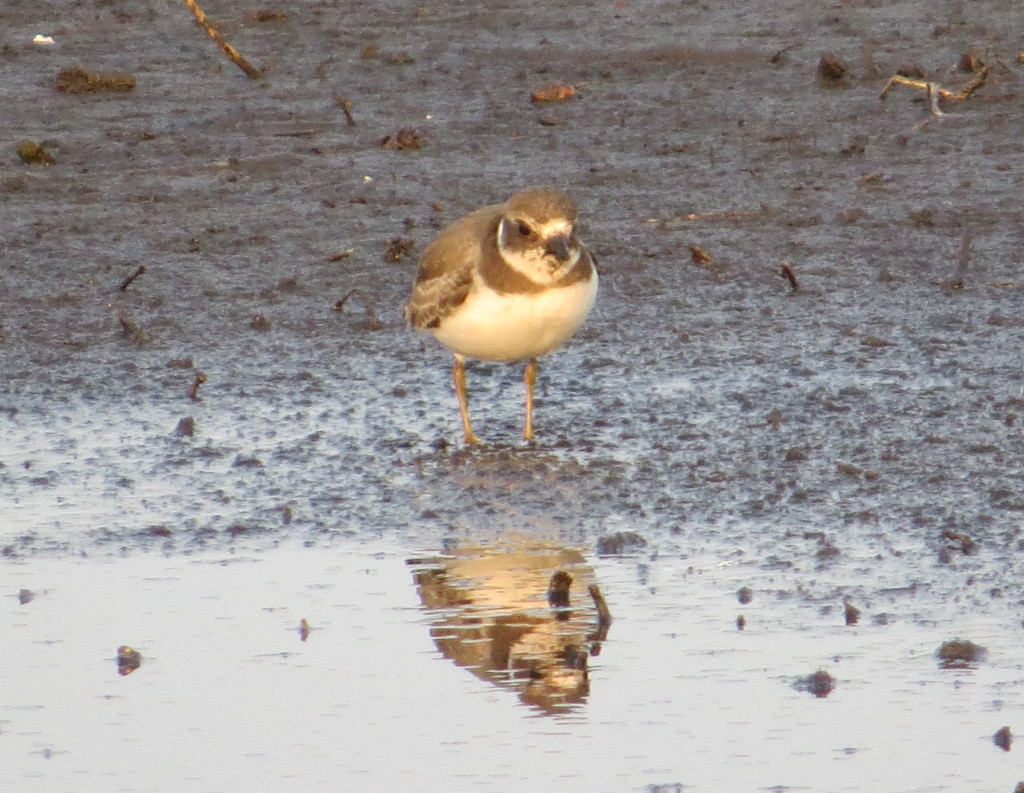
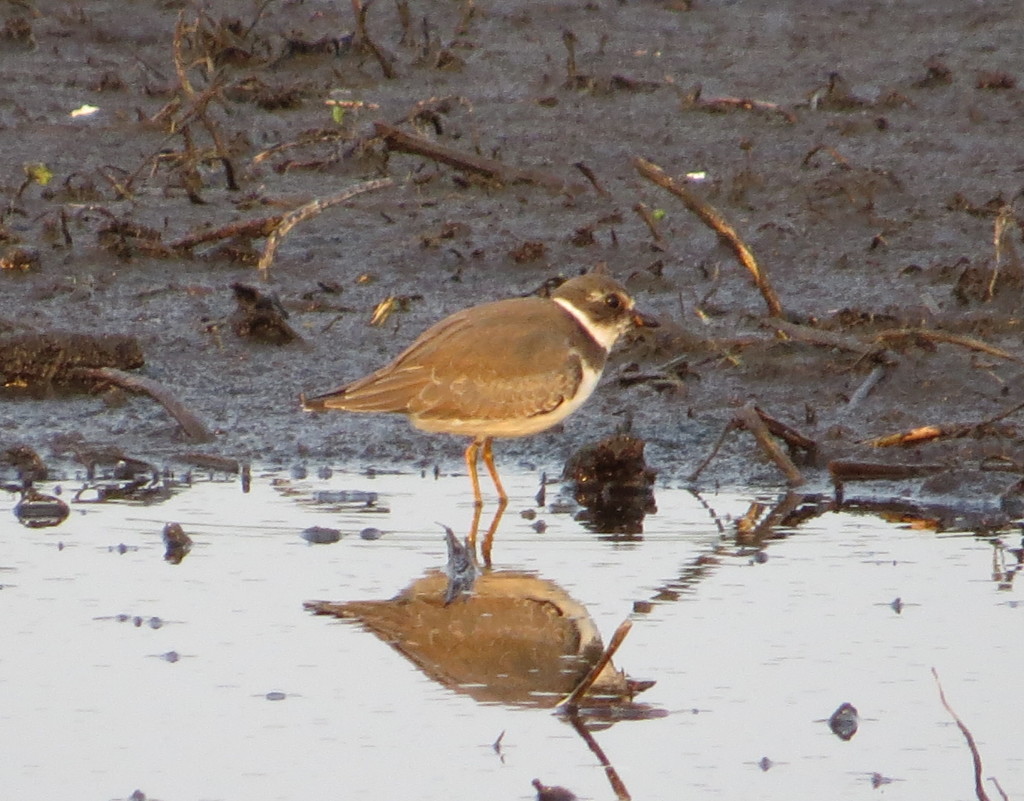
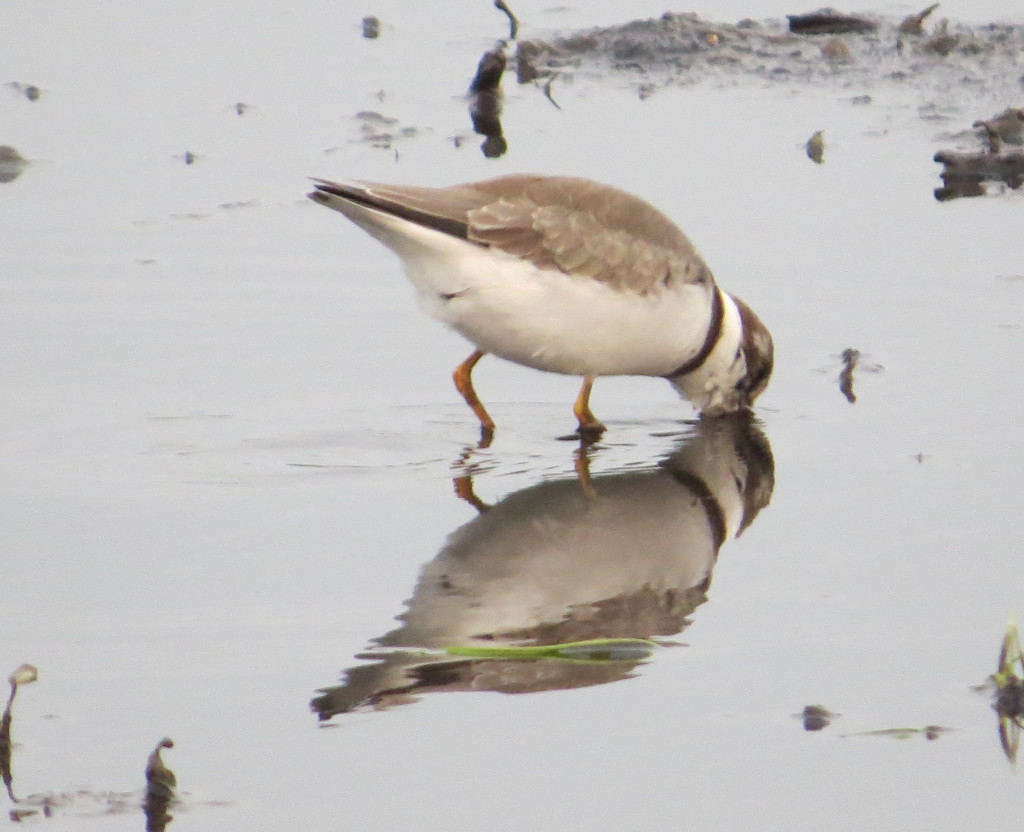 This patch I found turned out to be a great workshop on shorebird identification for myself. I had these birds close (30 feet or less) and in great light when I visited in the morning. I could clearly see subtle differences in coloration, differences in movements and behaviors, and relative size comparisons to other shorebirds. Even the ubiquitous Killdeer would sometimes do something interesting.
This patch I found turned out to be a great workshop on shorebird identification for myself. I had these birds close (30 feet or less) and in great light when I visited in the morning. I could clearly see subtle differences in coloration, differences in movements and behaviors, and relative size comparisons to other shorebirds. Even the ubiquitous Killdeer would sometimes do something interesting.
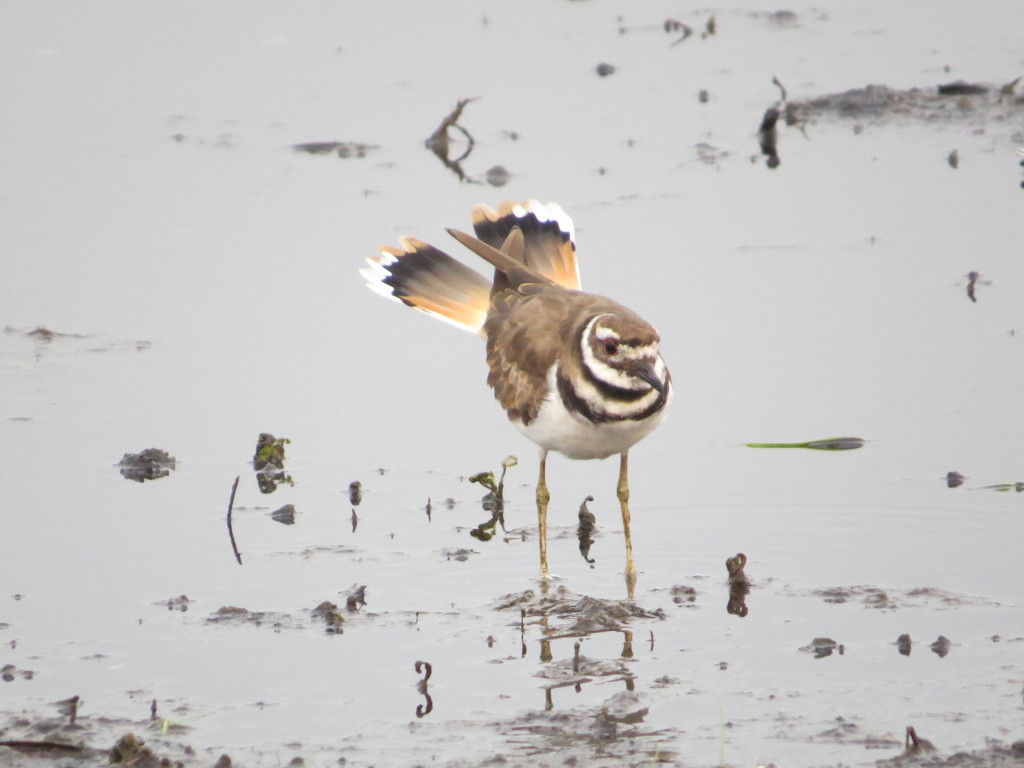
Often I would put my binoculars and camera down just to see if I could notice these things with the naked eye. Something happened that I never expected to happen–my confidence in identifying shorebirds went way up. And now I can concur with Nate the Machine that shorebirds really aren’t that hard after all. I would add that they are actually pretty fun too. In all, I tallied 11 shorebird species as an accidental patch birder. The numbers of each species were small and consistent, which made counting the birds a fun, manageable task.
As time and hot weather went on, the water kept receding in the ephemeral patch until there was nothing but some wet mud which was enough to sustain the persistent Killdeer and my Semipalmated Plover buddy but nothing else. Presently the ground is dry, and my patch birding days are over for now. But not my hopes. After all, it could still rain cats and dogs and big Plovers this fall, and I’ll be back in business. Stay tuned!
I Scream, You Scream, We All Scream For Herons
The love of all things Heron continues on ABWCH this summer with the second species of crowned Night-Herons being seen in as many weeks. This time it was the much more expected but no less appreciated Black-crowned Night-Heron taking its turn being so abiding.
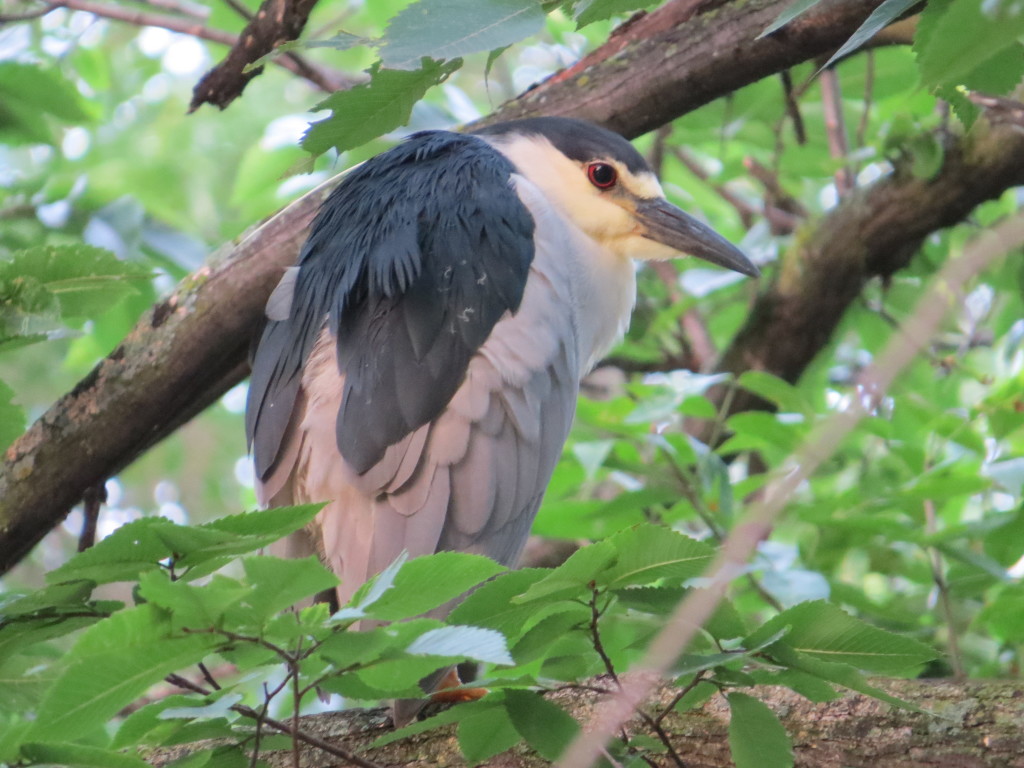
Show me a birder with an impressive life list, and I’ll show you a birder that harbors some degree of pain from certain birds on that list: a heard-only bird, a quick glimpse at another, a juvenile or raggedy individual, or maybe even a dubious addition. Such items on my list have included a Red-shouldered Hawk eyeball, a Bell’s Vireo butt, and a Sage Flasher. Yet another, from once-upon-a-time, was a scope-only view of a young BCNH. It was enough for the lifer/county two-fer tic, but it left me wanting. This redemptive sighting finally filled that void.
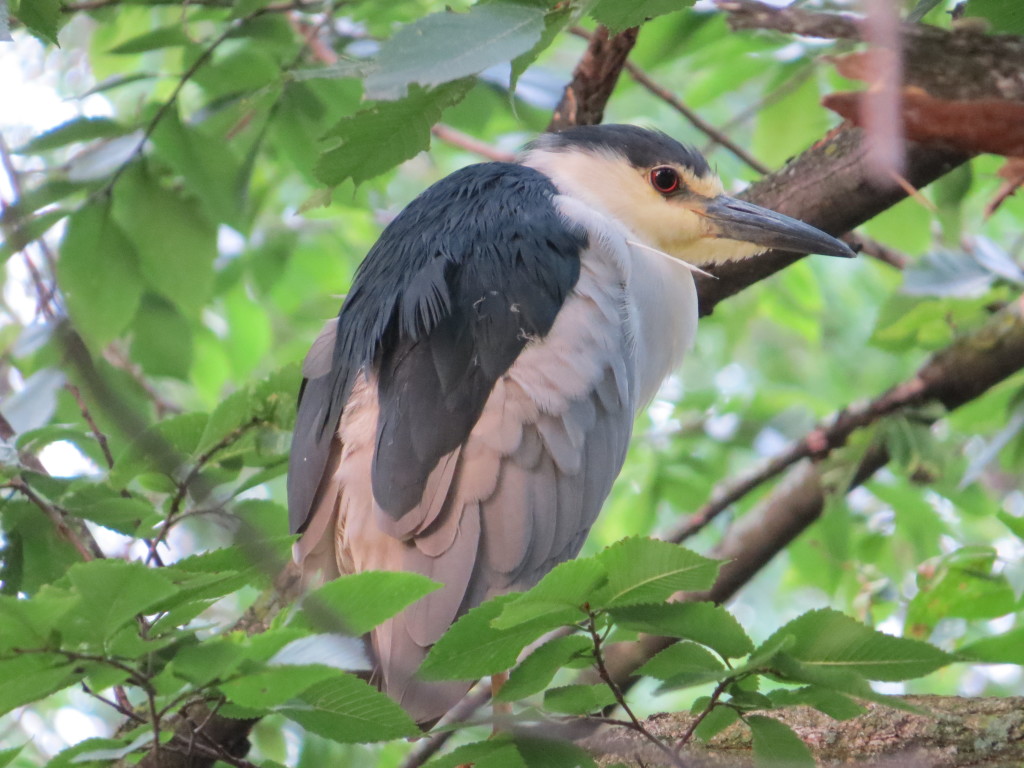
I remember as a fledgling birder being shocked to learn that this unique Heron with its coiffed plumage could be found in Minnesota. Perhaps I never bumped into one before I was a birder because of its secretive nature or the hours it keeps. Or perhaps I never saw one because of its proclivities for the water holes and riparian areas of metropolitan backyards.
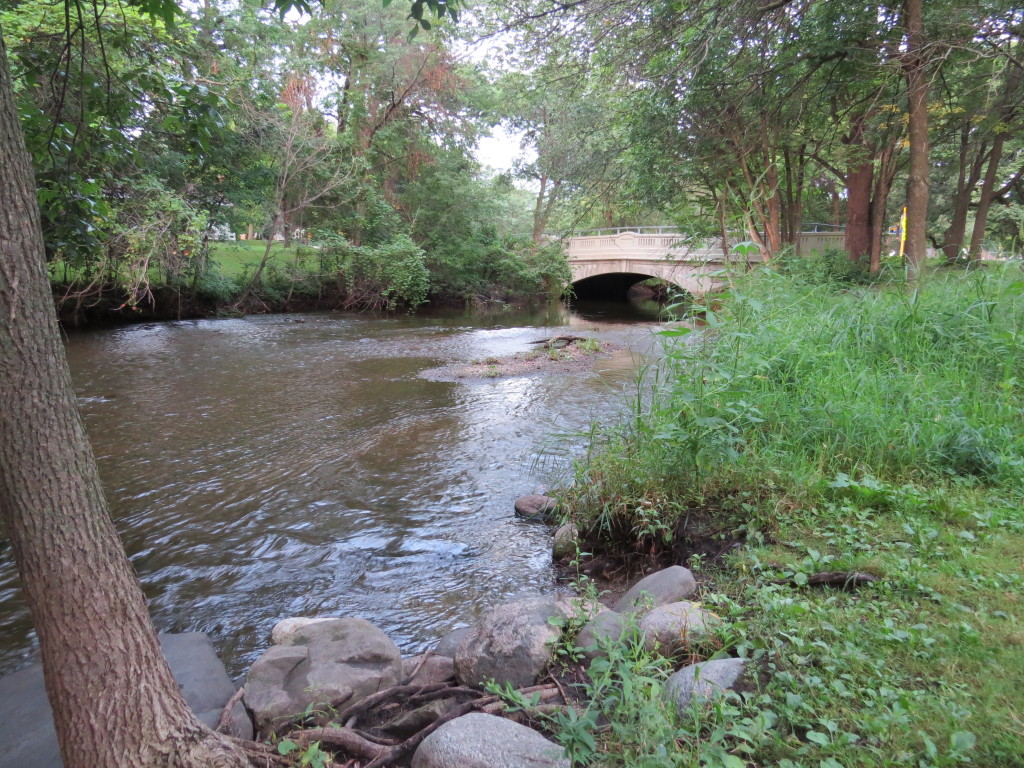 I have always wanted to see a properly-plumaged adult and seeing as how I just don’t turn them up on the prairie, I took full advantage of Bob Burmaster’s reliable find along Minnehaha Creek in Minneapolis.
I have always wanted to see a properly-plumaged adult and seeing as how I just don’t turn them up on the prairie, I took full advantage of Bob Burmaster’s reliable find along Minnehaha Creek in Minneapolis.
And things have never been the same. 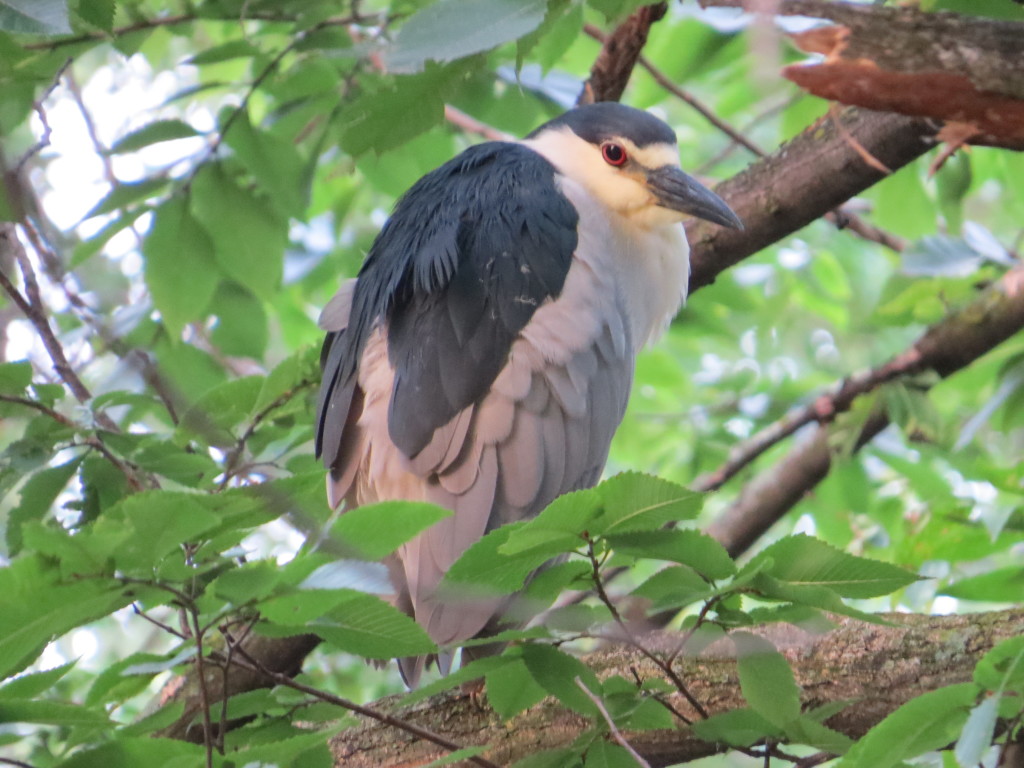
Veritas Caput
In 1832, an explorer by the name of Henry Rowe Schoolcraft and his men were guided by Ozawindib, a Chippewa Indian, to the source of the Mississippi River in northern Minnesota, a small, pristine lake surrounded by beautiful White and Red Pines. Not liking the Chippewa name Omushkos Sagaeigun or Elk Lake, Schoolcraft took the last four letters of the Latin word, veritas (truth) and the first two letters of the Latin word caput (head) and came up with Itasca as a new name that he felt more adequately described the significance of the lake that served as the true head of the Mississippi.
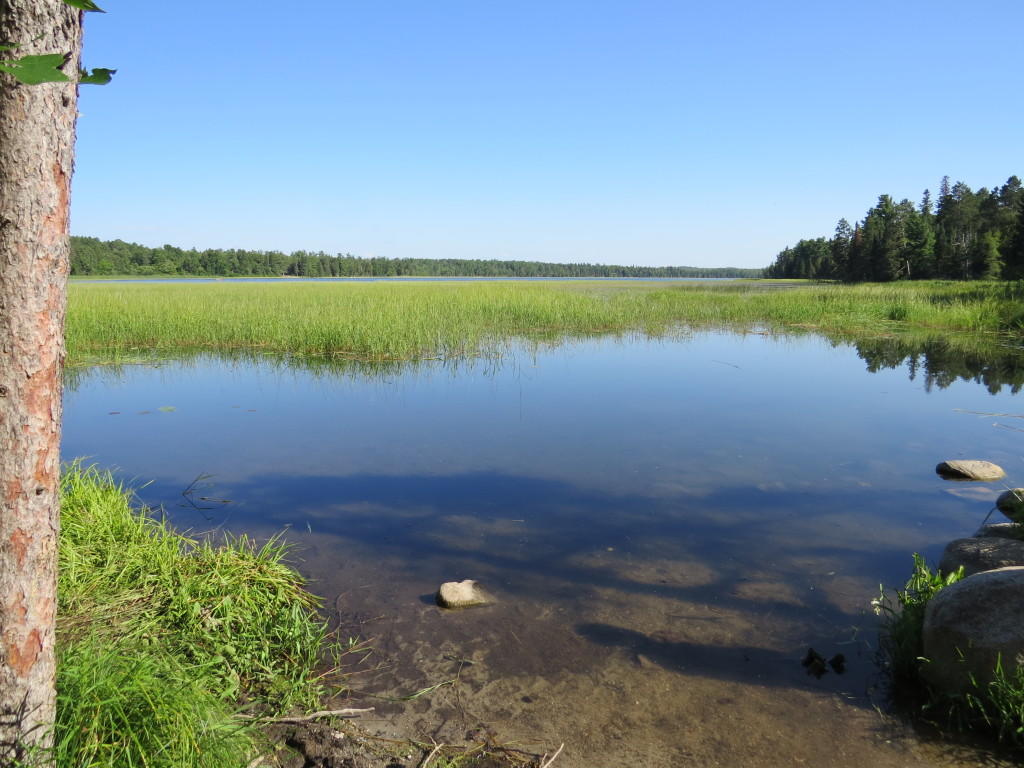 That’s it, right there–the rocks at the bottom right of the photo above mark the terminus of Lake Itasca and the beginning of the mighty Mississippi. Here massive hordes of humanity, some more clothed than others, take their turn walking, slipping, and selfie-ing across the rocks at the Mississippi Headwaters in Itasca State Park.
That’s it, right there–the rocks at the bottom right of the photo above mark the terminus of Lake Itasca and the beginning of the mighty Mississippi. Here massive hordes of humanity, some more clothed than others, take their turn walking, slipping, and selfie-ing across the rocks at the Mississippi Headwaters in Itasca State Park.
 Getting a photo of your significant people making the famous 20-foot trek without other tourists in the frame is about as easy as seeing a Black-backed Woodpecker in the park. Of course, both become much easier in January…
Getting a photo of your significant people making the famous 20-foot trek without other tourists in the frame is about as easy as seeing a Black-backed Woodpecker in the park. Of course, both become much easier in January…
This time of year is more fun for kids, though.
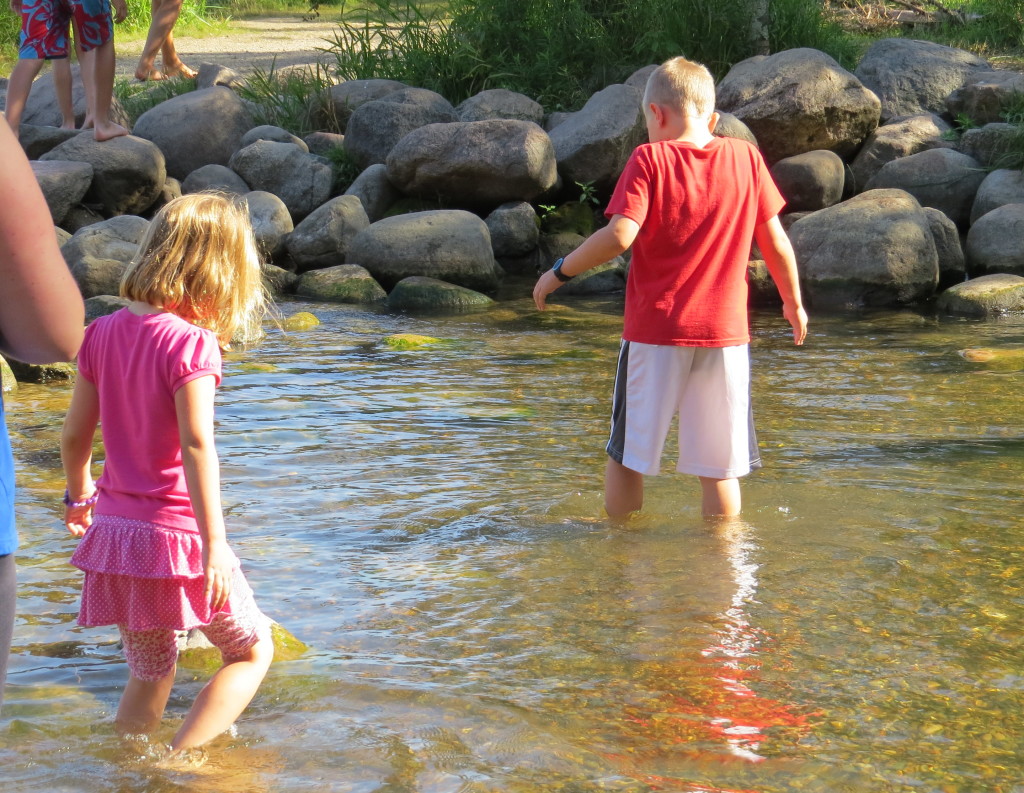
Evan and Marin crossing the Mississippi
Evan and Marin were not the only ones in our family being baptized this day as true Minnesotans–Melissa and I were embarrassingly also making our first walk across the headwaters. Though that, or the impressive virgin forests of towering Pines, should have been enough motivation to finally make it to Itasca, it was another Veritas Caput that served as the impetus to get us there–Mr. Bob Janssen, a.k.a. the godfather of Minnesota birding who literally wrote a book on the subject, was leading a bird walk at Itasca State Park. Call us groupies, call us super-fans, but we were in.
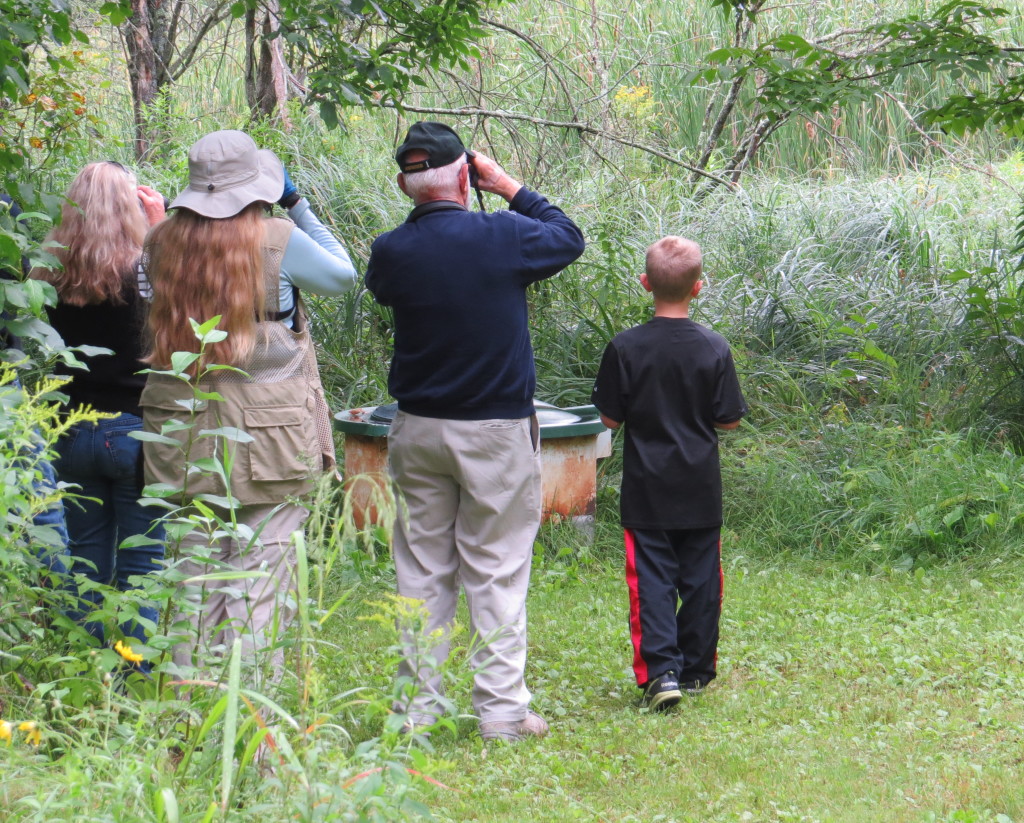
Evan birding with Bob Janssen–Again!
The truth is that due to a rough night in the camper for all of us, we slept in and missed meeting up with Bob’s group to begin the bird walk. Oh well, I thought, I’ve birded with Bob before and this was more or less a beginner’s bird walk. I reasoned that Evan would have the same reaction since birds aren’t that big of a deal to him anymore. I couldn’t have been more wrong. When he woke and found out we missed the walk, he was in tears. Apparently birds aren’t that big of a deal, but birds with BOB is still a really big deal. Ugh.
I told Evan we would try to find the group in the 32,000 acre park. I didn’t tell him that finding an American Three-toed Woodpecker would have been easier. But I had read the chapter on Itasca State Park in Bob’s Birds of Minnesota State Parks, and I had a pretty good guess of what trail we might find them on. Even still, we were an hour-and-a-half late. It was a long shot at best. Amazingly, and as you can tell from the photo above, we did stumble upon Bob Janssen and his followers. Whew!
We were just in time to catch the group to find out that the next stop was the Headwaters area at the far north end of the park. Evan and I had to make a stop at the campsite on the way where we snagged a pretty sweet FOY, the Broad-winged Hawk.
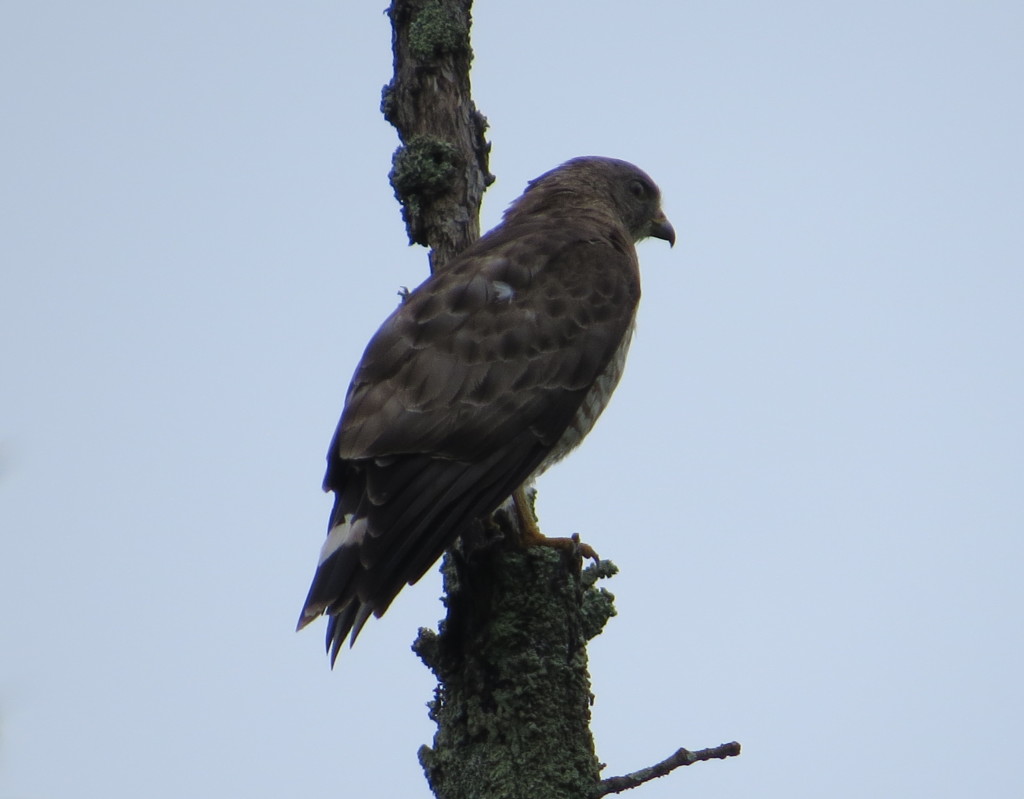
We finally met back up with our group at the Headwaters parking lot and began a leisurely walk looking and listening at…nothing. It was super quiet which was strange since fall migration should have been going on all around us. Now pay attention to this–if you want to be a better birder, go birding with people better at it than you. The quiet woods did not daunt the 84-years-young Bob. You don’t get to that age and that fame without acquiring a few tricks up your sleeve. Bob was listening intently for Chickadees. Wait, what?
As soon as Bob heard a couple Black-capped Chickadees, he pulled out his mp3 player and speaker and played an Eastern Screech-Owl mobbing tape. The recording is of a Screech giving its tremulo call and being mobbed by about a thousand pissed off Chickadees. What happened next is that the Chickadees in real life showed up with pitchforks and torches. That brings in the onlookers, the Warblers and Vireos. All the sudden we were swarmed with birds that didn’t even seem to exist a minute ago–Blackburnian Warblers, Northern Parulas, a Black-throated Green, Blue-headed Vireos were just a few.
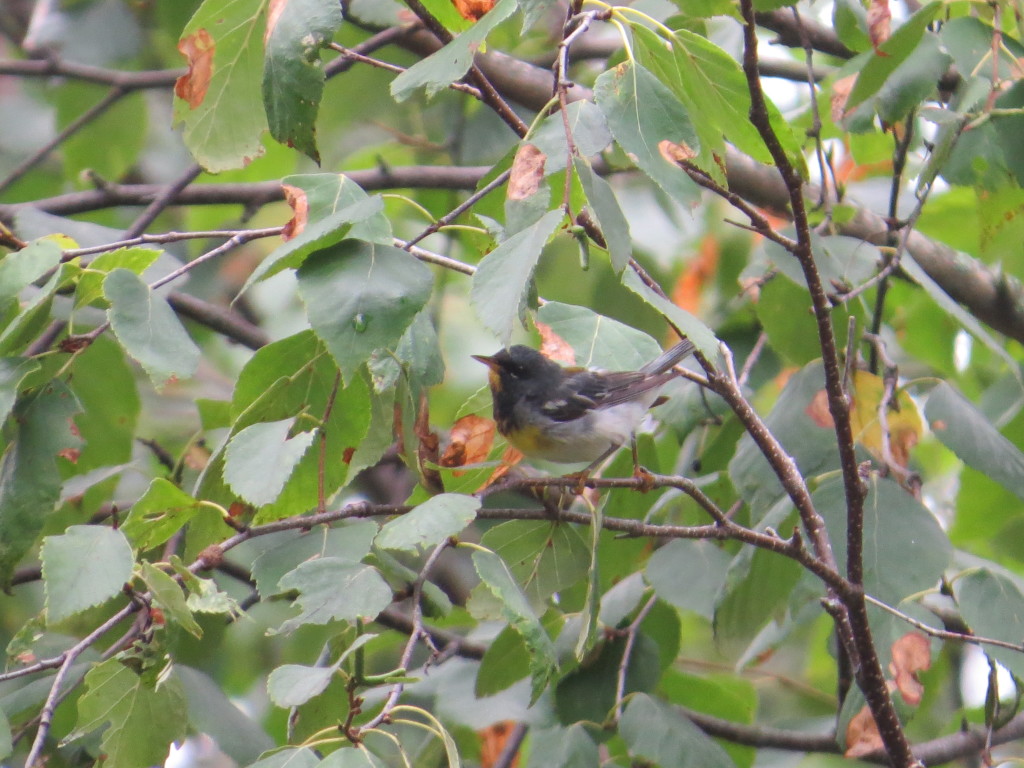 Though the light was bad and some birds were changing into their fall clothes, the flurry of activity kept it exciting even if it was just over binocular views. I did manage to photograph a cooperative juvenile Chestnut-sided Warbler. Just as some people aren’t fond of babies (the human kind), I am not found of juvenile birds. This one I found striking, however.
Though the light was bad and some birds were changing into their fall clothes, the flurry of activity kept it exciting even if it was just over binocular views. I did manage to photograph a cooperative juvenile Chestnut-sided Warbler. Just as some people aren’t fond of babies (the human kind), I am not found of juvenile birds. This one I found striking, however.
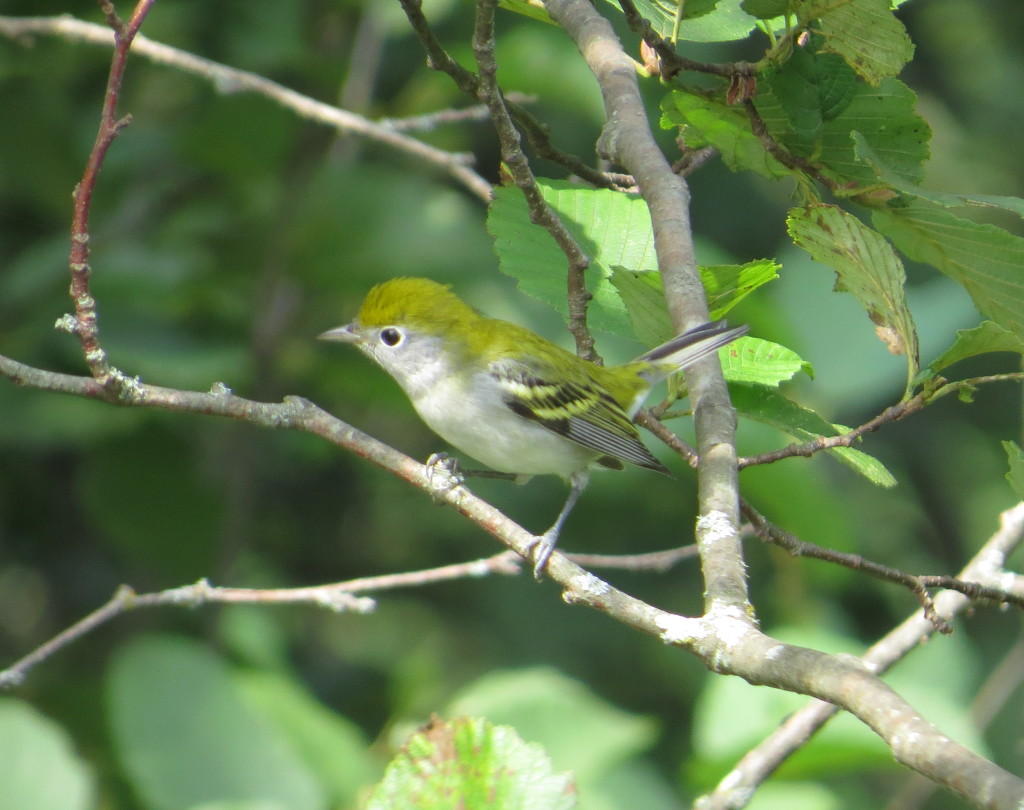
We made several stops to play the tape in somewhat open areas, like where a path crossed the Not-so-Mighty Mississippi:
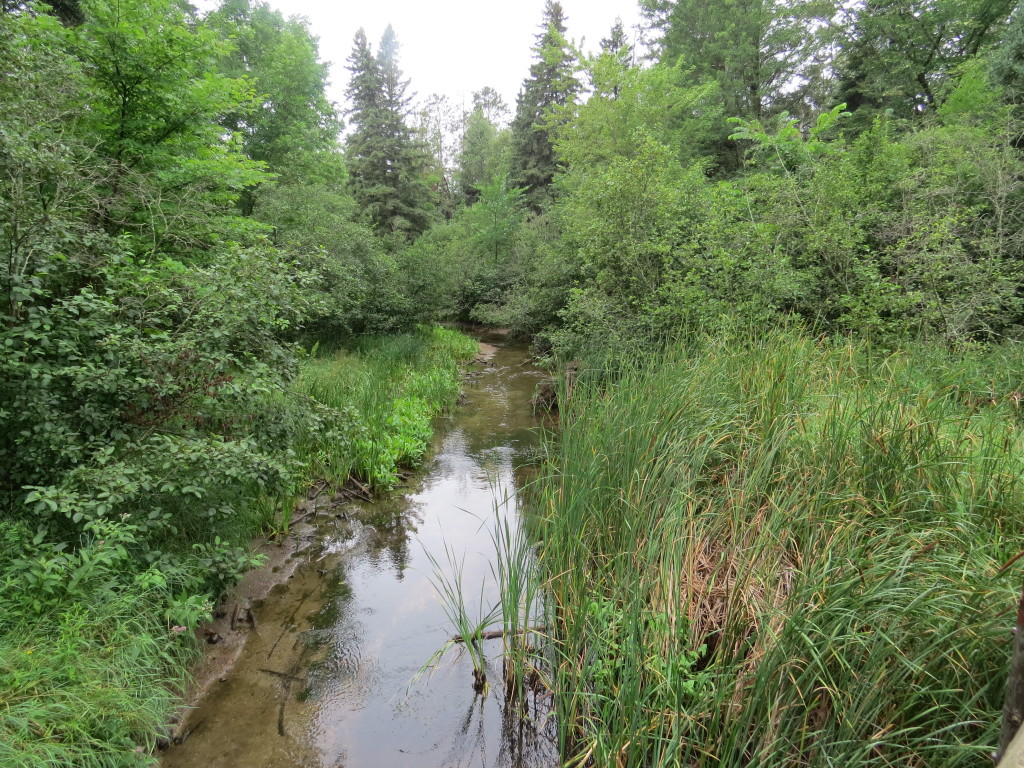
Fun Fact: The Mississippi flows north for several miles before it turns south.
Though many of us in the group called out sightings of birds, Bob himself had the best sighting even though I lack the photographic evidence to prove it–a beautiful male Golden-winged Warbler. It’s always a treat to see this bird that, if we did not have the Common Loon, would make a fine choice for a state bird, since Minnesota is responsible for hosting 47% of its breeding population. Fun Not-So-Fact: Once we hit 51%, MN will control GWWA conservation policies in North AND South America.
Like the Mississippi itself, all good things must come to an end, and we parted company with the group and said goodbye to Bob, vowing to meet up again over a Meeker County Snowy Owl or Kandiyohi County Blue Grosbeak, which has now become our customary goodbye. We declined to go to the book talk, though it would have been a chance for Bob to sign the book to me and not Evan this time. Letting bygones be bygones, it was time for Evan and I to go from birding mode back into just regular camping mode, exceptions being made, of course, for Northwoods chickens that cross the road.
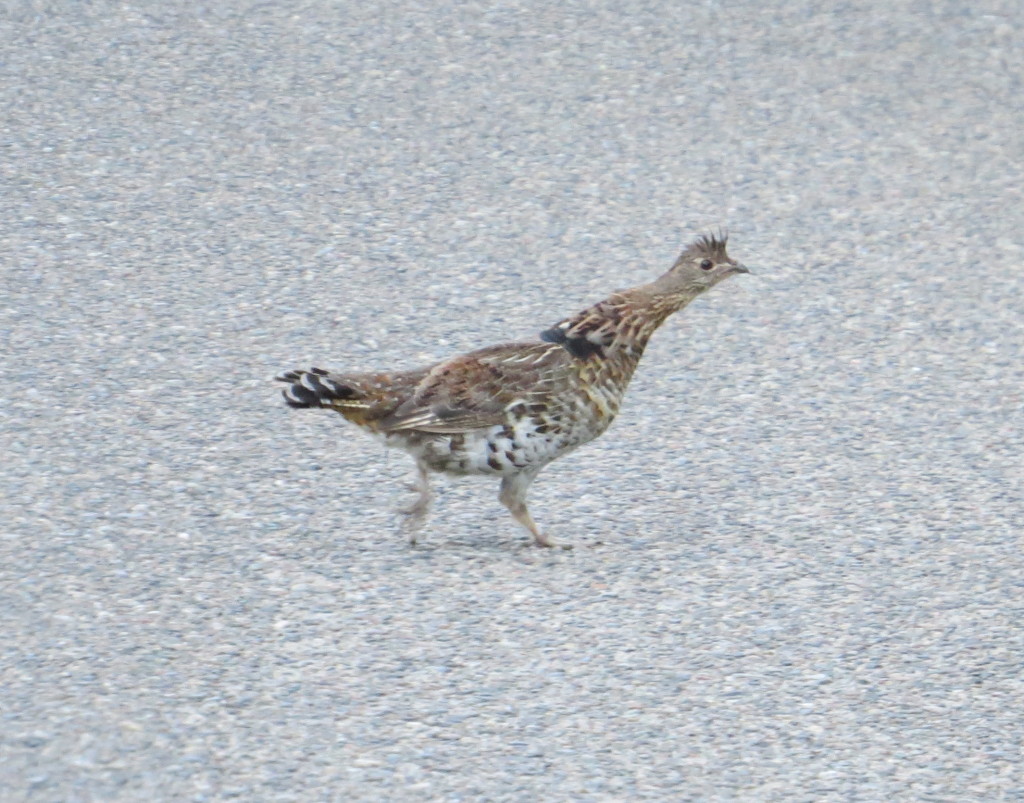
Ruffed Grouse
The Grouse and the aforementioned Broad-winged Hawk were year birds for me. Normally I wouldn’t care about such a thing, but with all my out-of-state travels I figured 2015 was my best chance of ever breaking 300 in a single year. I’m very close, but it’s still going to be a stretch. Thanks to Melissa who woke me up at 1 AM and alerted me to a calling Barred Owl, I made another stride toward my goal.
That goal, along with the mouth-watering prospect of seeing another Black-backed Woodpecker, propelled me to go on one last birding hike in the early morning on our last day of camping. Sadly, I did not encounter any of the shadowy Woodpeckers on Schoolcraft Trail, but I did find another year bird and get my first ever photos of a Brown Creeper.
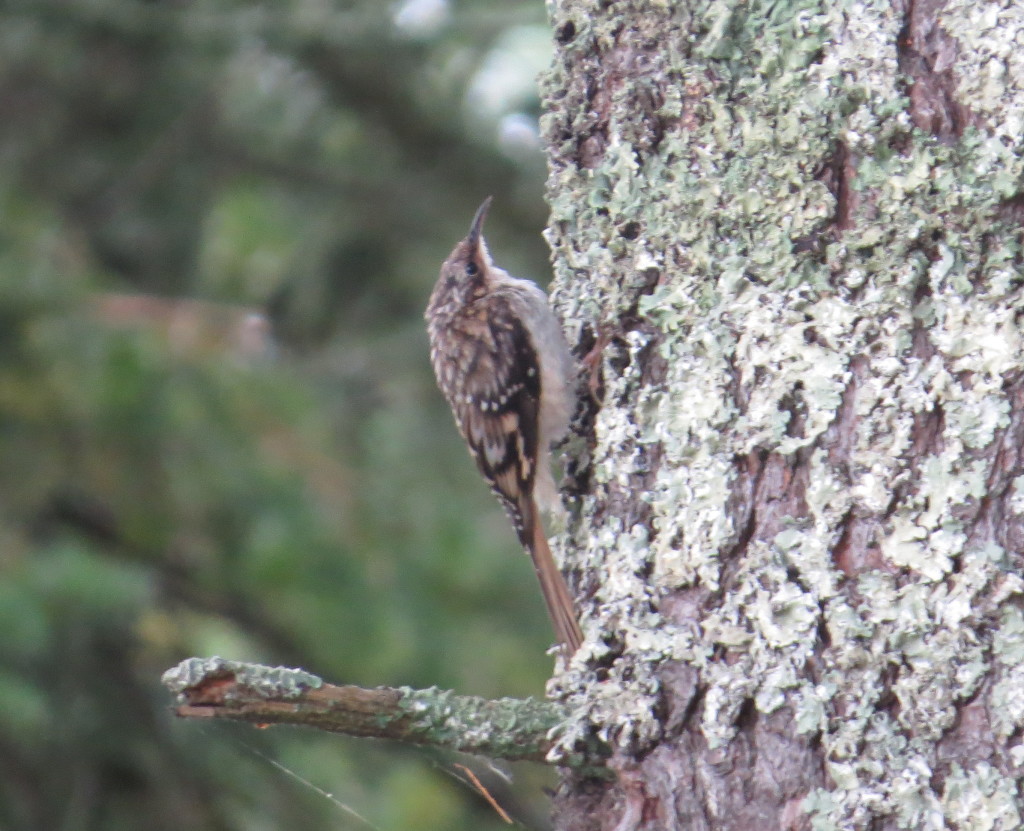
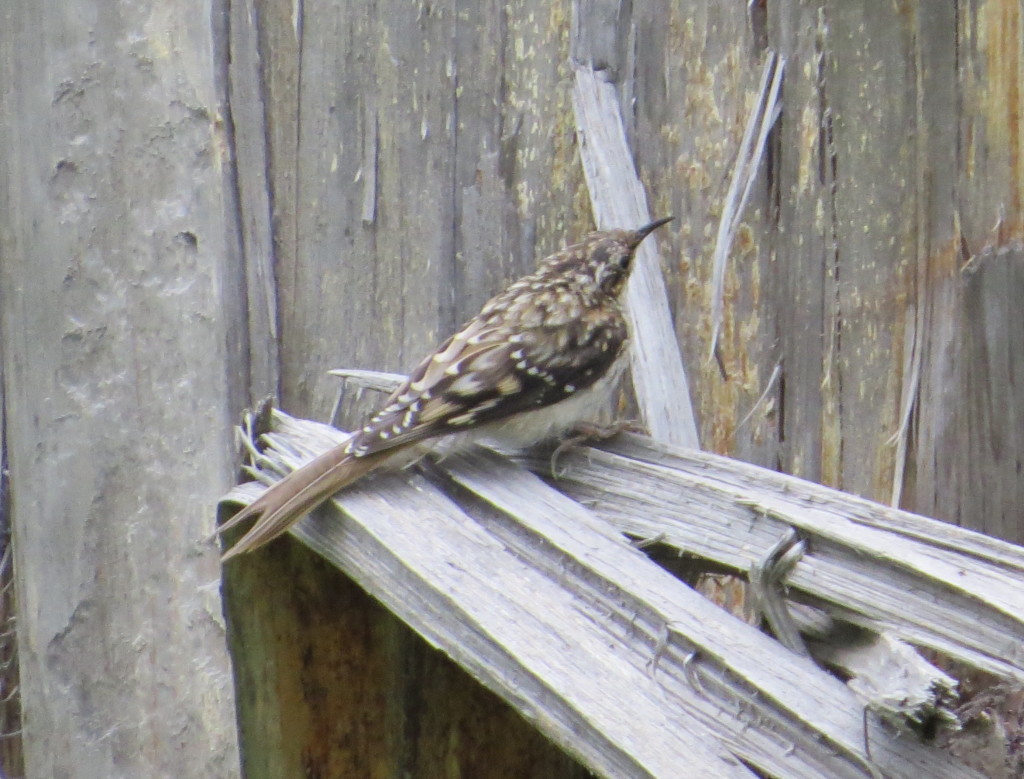
Birding with Bob, nabbing four year birds (one a photographic first), and crossing the Headwaters made for a great inaugural trip to Itasca State Park. I am quite remiss, though, that I did not show you pictures of the incredible Red and White Pines of the park. Come for the river, stay for the Pines, the t-shirts say. Next time, which I can guarantee you there will be a next time, there shall be pictures of the Pines, and if we are all lucky, there shall be Black-backed Woodpeckers on them!
